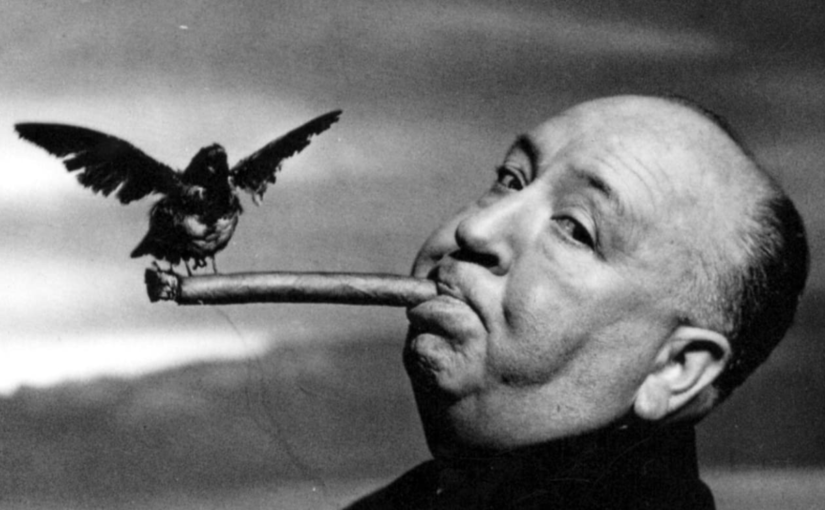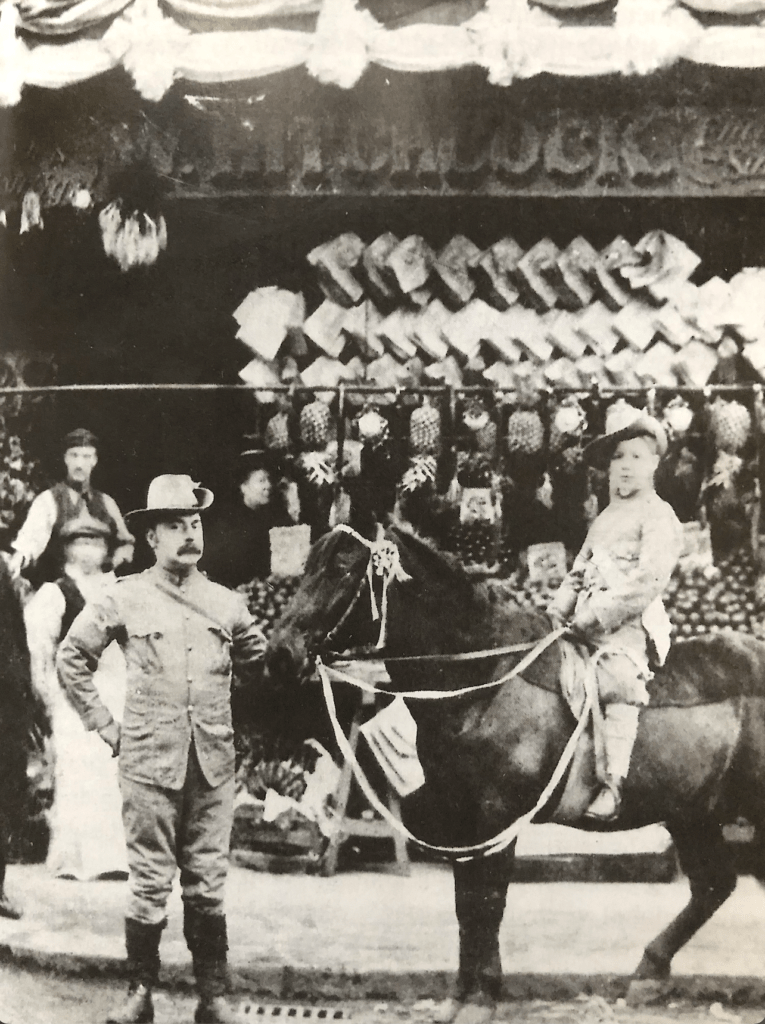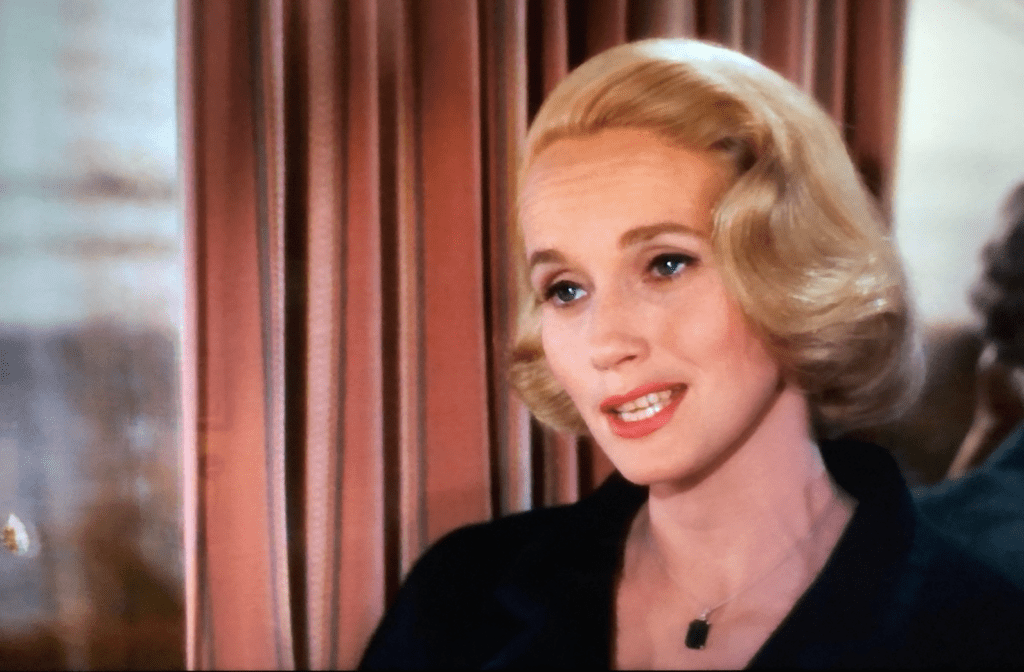Movie censorship, a mechanism of cultural control, was in direct contradiction to the instincts of film makers across the world. No director challenged the British Board of Film Censors and the Production Code of America’s restrictions more often, and more successfully, than Alfred Hitchcock. I offer a view of Hitchcock through the prism of censorship, against which he became a covert saboteur, quietly moving forward the needle of reform. ![]()
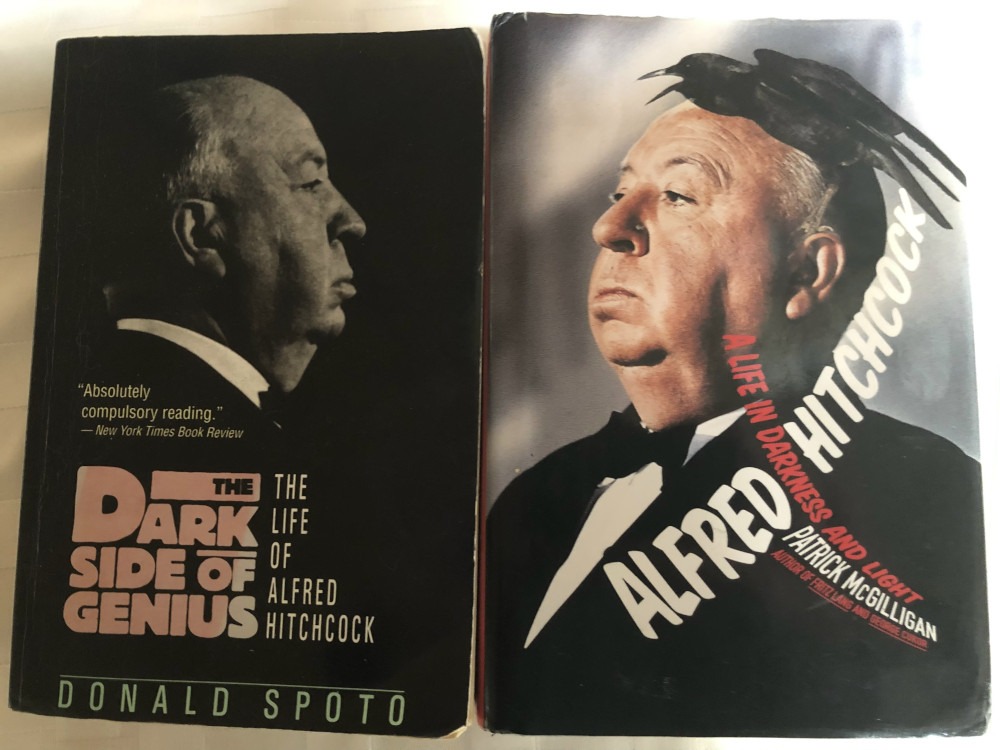
Many admirable biographies have been written about “the master of suspense.” Among them The Dark Side of Genius by Donald Spoto, and Alfred Hitchcock, A life in Darkness and Light by Patrick McGilligan. Both are well researched and packed with illuminating material, but tend to focus on the negative sides of his character. However, Hitchcock’s movies are all the richer for understanding the demons that drove him. Collectively all commentaries past and present show how Hitchcock fed on the cultural influences and the anxieties of his childhood, then poured them into his movies.
![]() Alfred Joseph Hitchcock was born on August 13, 1899., the third child of a family that had been grocers and fishmongers for a generation. Shopkeepers were at the precarious entry level to the British middle classes. With hard work the family business prospered. The earliest surviving photograph of the future director was taken in 1906, posed with his father outside the family shop above which they lived. Young Hitchcock frequently accompanied his father to the crowded Billingsgate market to pick up produce for sale.
Alfred Joseph Hitchcock was born on August 13, 1899., the third child of a family that had been grocers and fishmongers for a generation. Shopkeepers were at the precarious entry level to the British middle classes. With hard work the family business prospered. The earliest surviving photograph of the future director was taken in 1906, posed with his father outside the family shop above which they lived. Young Hitchcock frequently accompanied his father to the crowded Billingsgate market to pick up produce for sale.
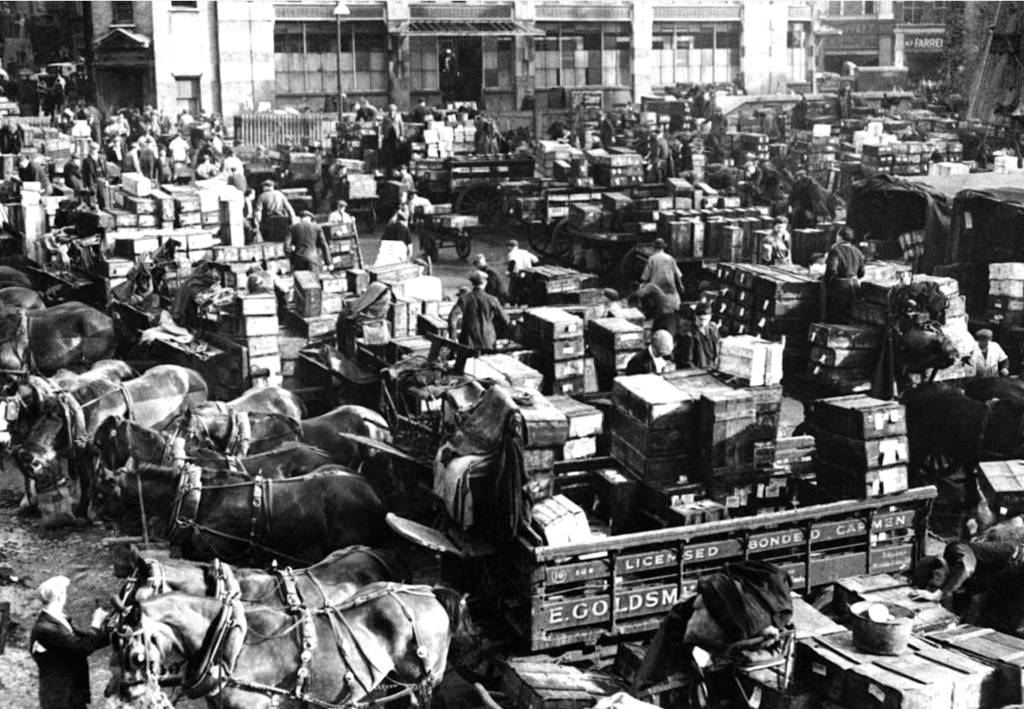
With a doting mother who was a good cook, food and its pleasures became an early preoccupation for Hitchcock. a pudgy child, who, as an adult, would occasionally top 300 pounds. He felt unlucky in his physical appearance, but quite comfortable with his own company. He took no exercise. ” I never walk when I can ride. My exertion is from the neck up. I watch” he would explain. He had health problems for much of his life but despite an excessive appetite for rich food and alcohol, he lived to be 81. Young Hitchcock read extensively. The family owned a bible and an illustrated Grimms’ Fairy Tales. Travel books opened his eyes to a wider world, as did studying six Shakespeare plays in one school year. A sketchpad and pencil provided an outlet for his creativity and a eventually a path to his chosen profession, in which he began self educating. By age 11 he was buying movie trade papers at a shop in Leicester Square – the Bioscope, and Kinematograph and Lantern Weekly, known as the Kine. It was the start of a life long love affair with America.
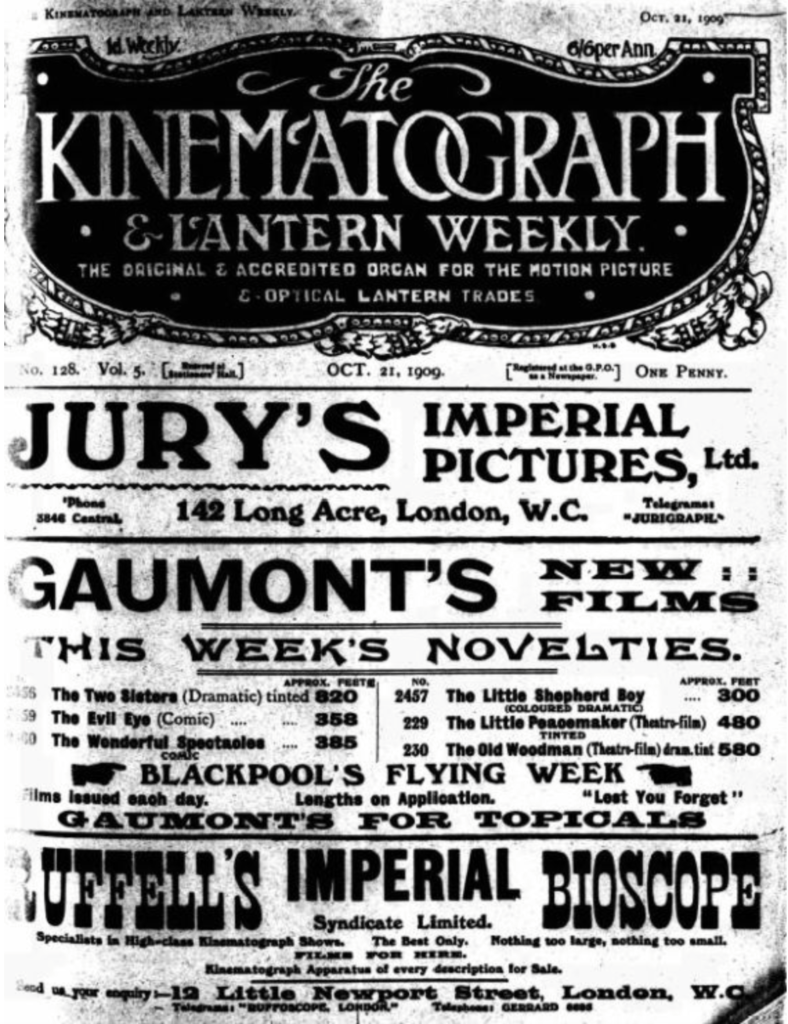
Other factors contributed to Hitchcock’s fascination for the macabre. Older neighbors still talked about the 1888 Jack the Ripper murders that took place in nearby Whitechapel. Adjacency to one of the most famous crimes in British history would have amused Hitchcock. He grew up in a popular culture filled with lurid stories of crime, from penny dreadfuls to the flagship of sensationalist Edwardian media The News of the World (circulation almost 3 million in 1920). I’m sure Hitchcock was a reader, both enjoying the schadenfreude of scandal yet noting, because his strongly Catholic mother brought him up to be compassionate, how grim life could be for those ensnared in the legal system. Flogging was still administered in gaol. Capital punishment was a regular occurrence in British life. In some years more than 20 people were hanged for murder including this fellow: George Joseph Smith who managed to lose three wives by drowning, all in bathtubs, after they had made out wills in his favor. It was a notorious case that consumed British newspapers at the height of World War One. Murder had become serialized entertainment for the masses, and may have sparked 16 year old Alfred Hitchcock’s interest in marital murder, murder for money, and political murder that feature in his films. 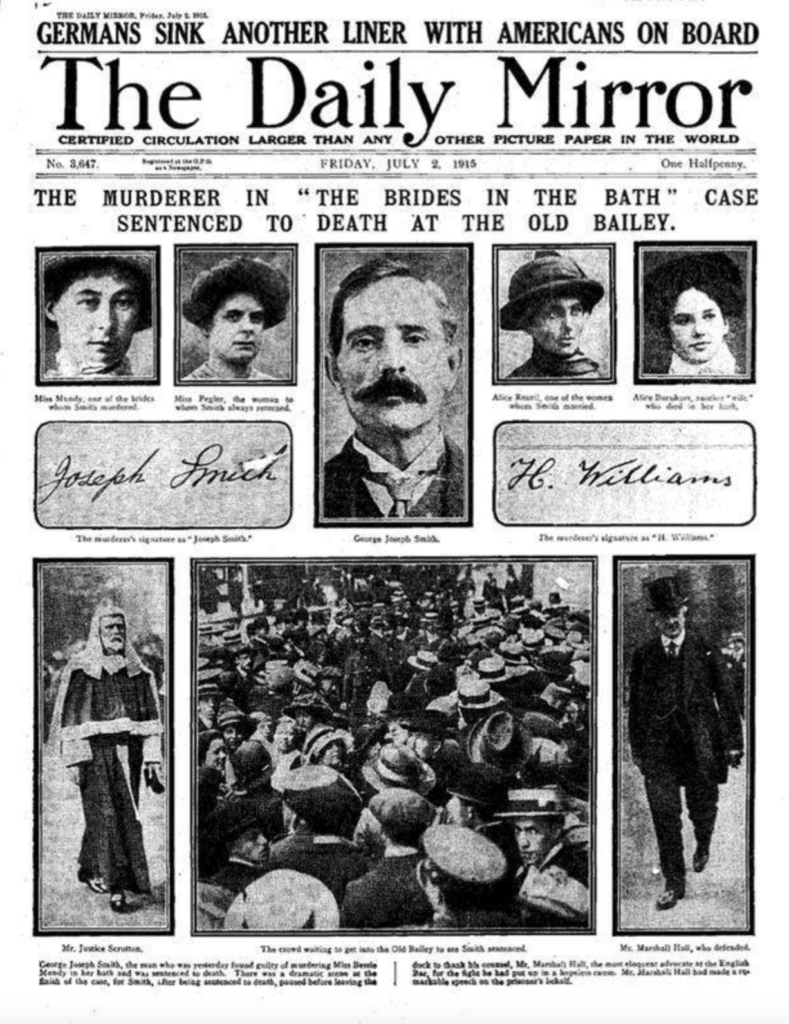
Hitchcock’s father William was, by most reports, a kindly if nervous man, who was an occasional drinker while working long hours managing two shops. He still made the time to take his children to the music hall, and silent movies projected at the local skating rink on Saturday afternoons. But William could also be strict. As boys do, young Hitchcock committed some disciplinary infraction, so his father sent him to the local police station with a note that the boy had been naughty. The policeman locked him in a cell, saying “This is what we do to naughty boys.” Hitchcock stated that he always remembered “the clang of the door, which was a potent thing – the sound and solidarity of that closing cell door and the bolt.” Something Henry Fonda experiences in The Wrong Man.
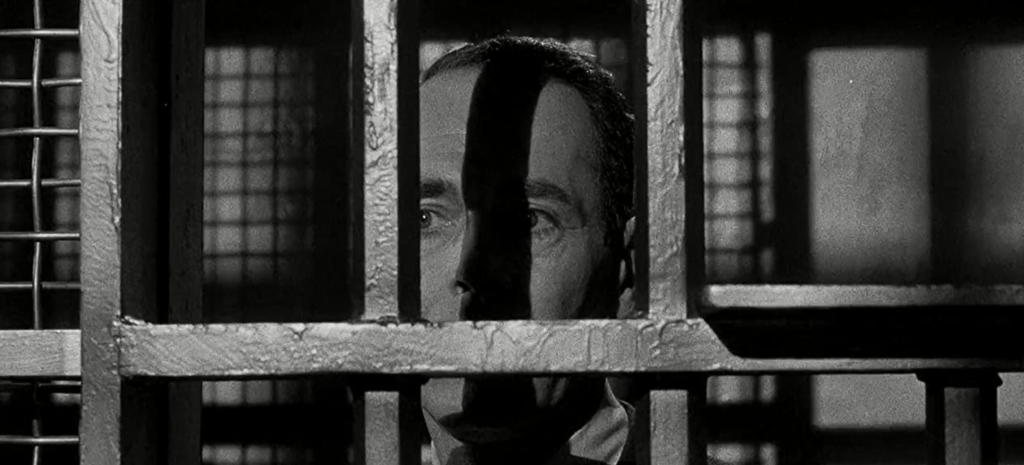
It’s an evocative story Hitchcock has told many times, with his duration in the cell ranging from a few minutes to half an hour, and his age between from 6 and 11. Hitchcock was a fantasist by inclination and by trade. But so vivid and “potent” is that memory and so regularly does the concept of unjust imprisonment run through his work, that I’m inclined to believe something of the kind happened, perhaps facilitated by his maternal grandfather a London policeman, maybe even as a joke. But it left a mark on Hitchcock’s psyche.
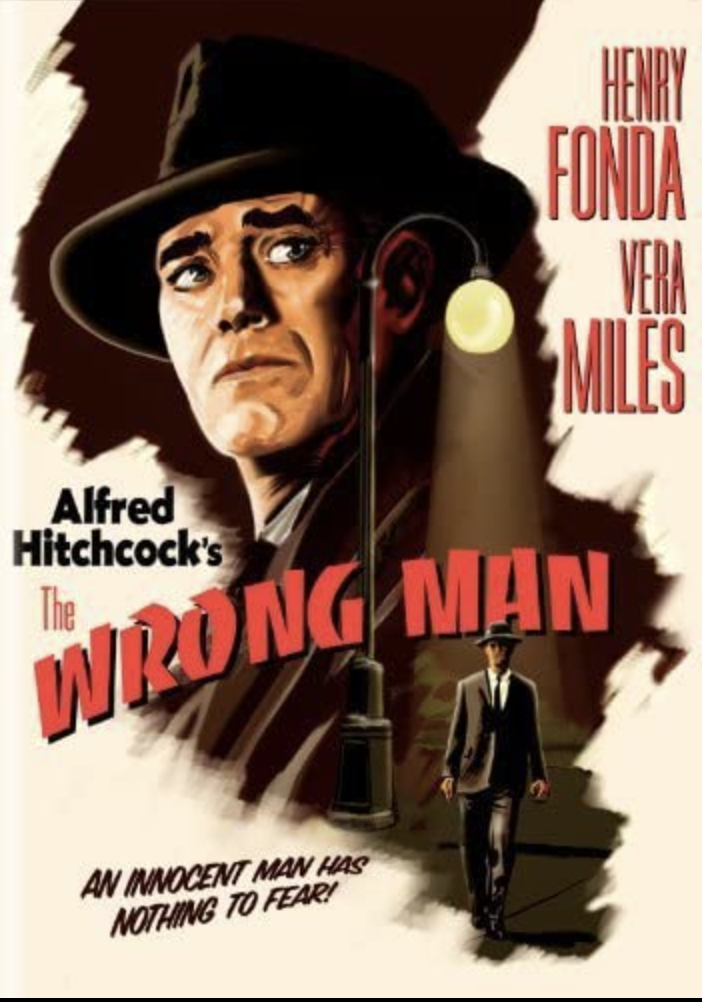
Montgomery Clift faces the same potential fate in I Confess, with the added spice that the wrong man is a priest.
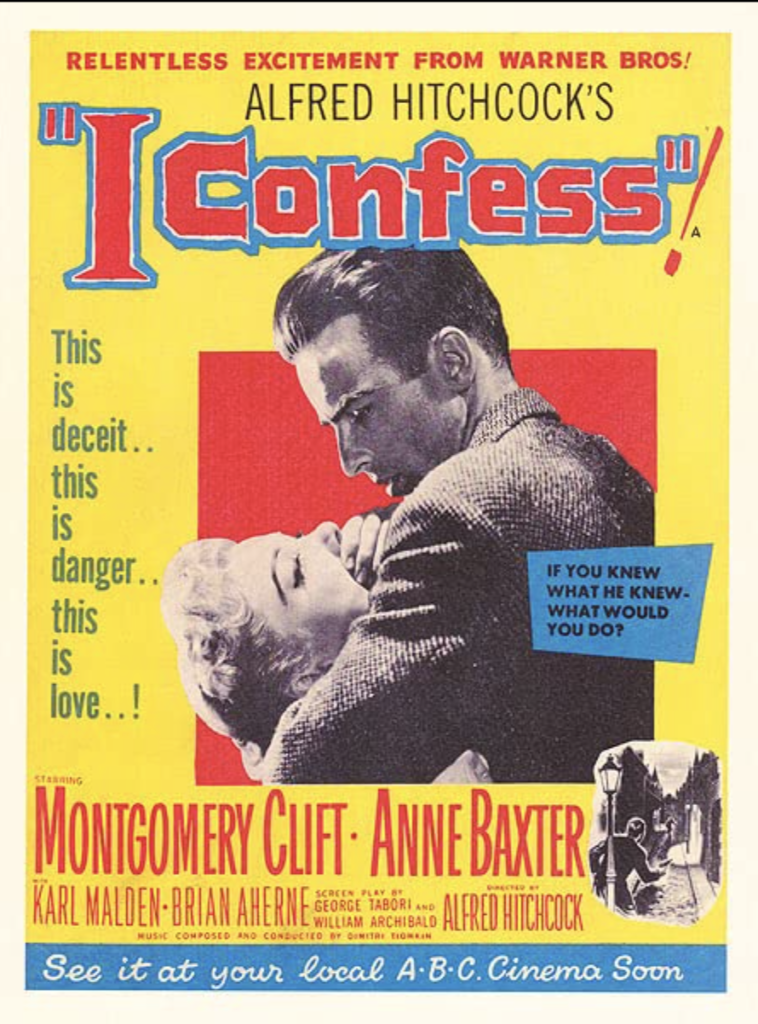
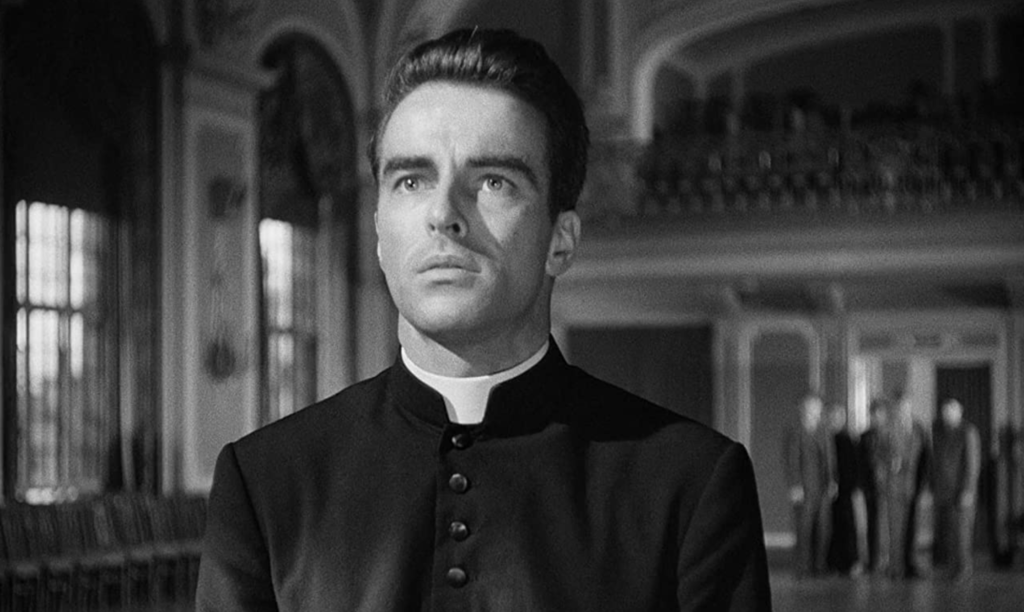
Aged 11, Hitchcock was sent to St. Ignatius College, a Jesuit day school “for young gentlemen”. Report cards graded students on their conduct and application to their studies. Infractions, like not declining Latin verbs correctly, could be punished a lash from a rubber strap across the hand. Malefactors were required to chose which priest would administer punishment. It was prudent not to choose the priest you offended. Hitchcock sensibly selected his favorite priest, who dropped the strap lightly on his palm. Sin was the Jesuits’ main concern. On March 10, the weekly sermon was “Sin and the Justice of God”, followed on March 17 by “Sin and the Majesty of God”, with “Sin and the Christian” and “Sin and the Passion of Christ” to round out the month. The Jesuits provided a detailed education in every aspect of sin, which I suspect young Hitchcock relished. Mortal sin, Venal sin. The Sins of the Flesh! A feast for the pubescent imagination, with the seductive aftertaste of guilt. Hitchcock did not care for his Christian name Alfred, shortened to Fred or Alfie by his family. “I’m Hitch,” he would introduced himself, ” That’s Hitch without the cock.” displaying early in life a flair for double entendre. Hitchcock did not engage in play with the other boys, ” preferring to observe.” One fellow pupil said of him ” he was a fat boy…said little and was not easily engaged in conversation.. considered odd.” They teased him as “stinking of fish”, knowing the common occupational hazard of his fishmonger father. As Hitchcock withdrew into himself during those two years, he expanded his reading and was diligent in his schoolwork, earning prizewinning citations in Latin, English French, and Religious Studies.. Alongside his intellectual growth, an anti-authoritarian and iconoclastic instinct began to secretly take root.
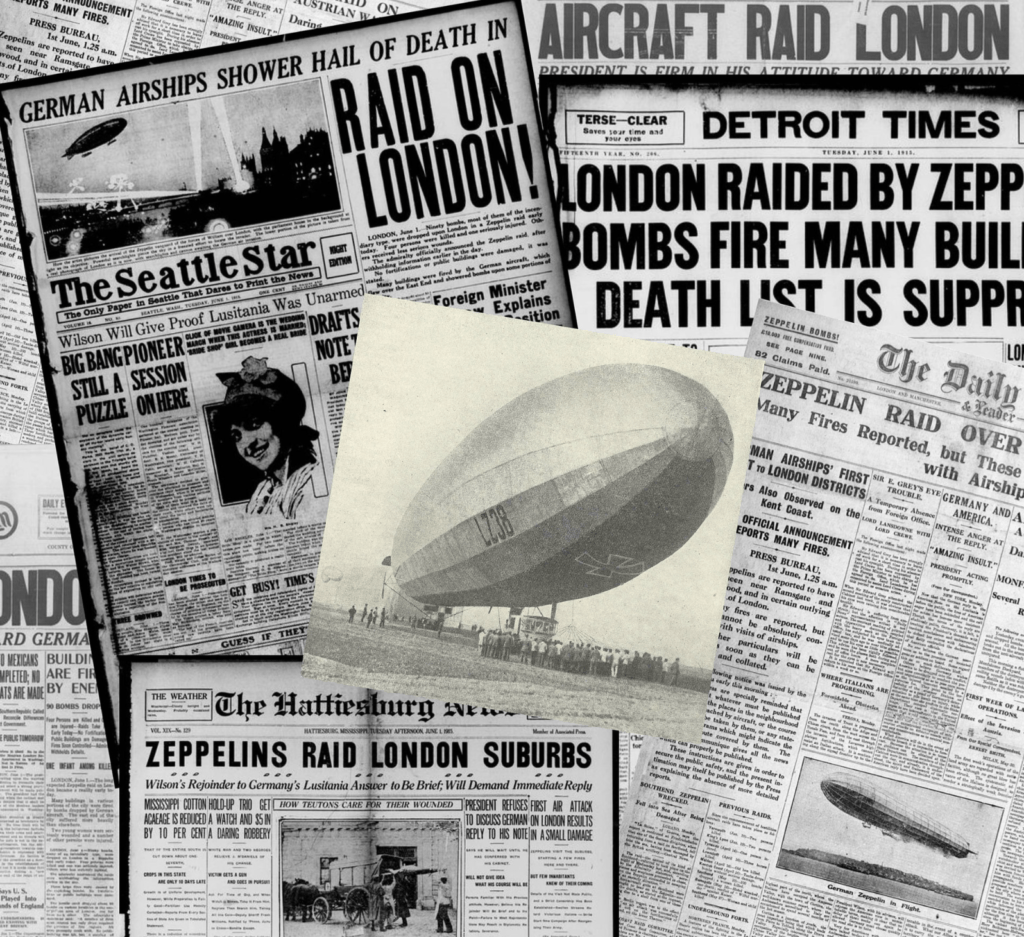
World War One began when Hitchcock was 15. German Zeppelins periodically dropped bombs on London. When explosions resounded nearby, Hitchcock and other family members dropped to the floor, and hid under tables. It was the first time, he told a French interviewer, that he had ever experienced real fear. Yet his recall was laced with a typically Hitchcockian vein of comedy. ” the whole house was in an uproar…but there was my poor Elsa Maxwell – plump little mother struggling to get into her bloomers, always putting both her legs through the same opening, and saying her prayers, while outside the window shrapnel was bursting around a search-lit Zeppelin. – extraordinary image!” One that would influence a body of work filled with German accented villains, bombs, spies, assassins, and the death of innocents.
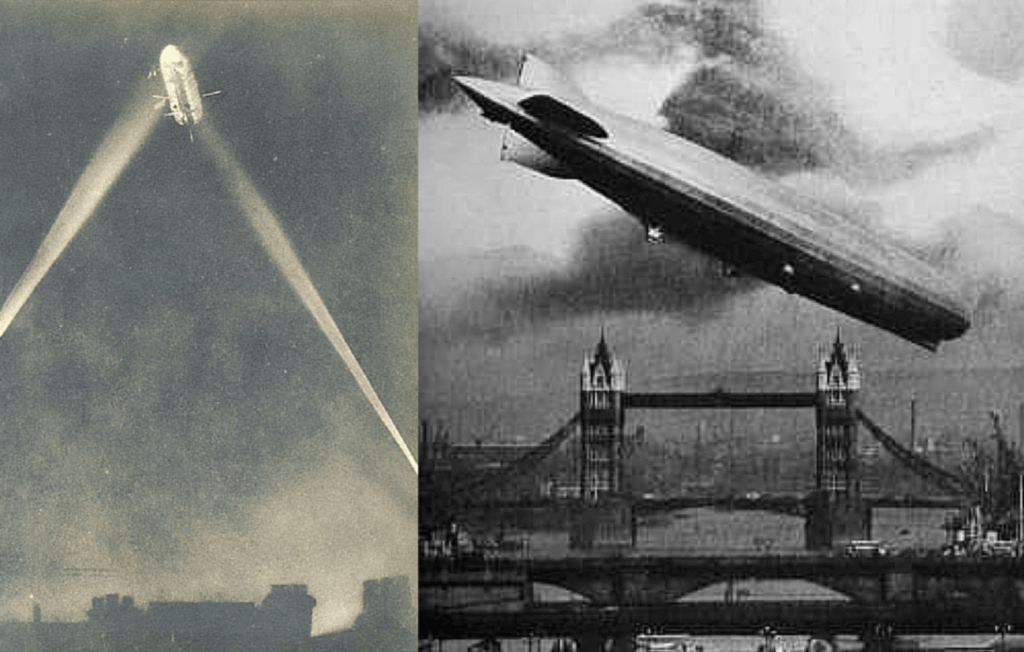
Hitchcock’s sense that life was fragile and arbitrary would soon be reinforced. That year his father died of chronic emphysema and kidney disease aged 52. The comfortable well ordered world in which he grew up had been turned upside down by a random unpredictable event, something he would regularly inflict upon the heroes of his movies as a springboard to suspense. For a time there was significant effect on the family finances. Hitchcock dealt with his grief, comforted his mother and got a job at 15 shillings a week to help support her. His innate talent soon got him noticed and the rest, as they say, is history; a long and storied history.
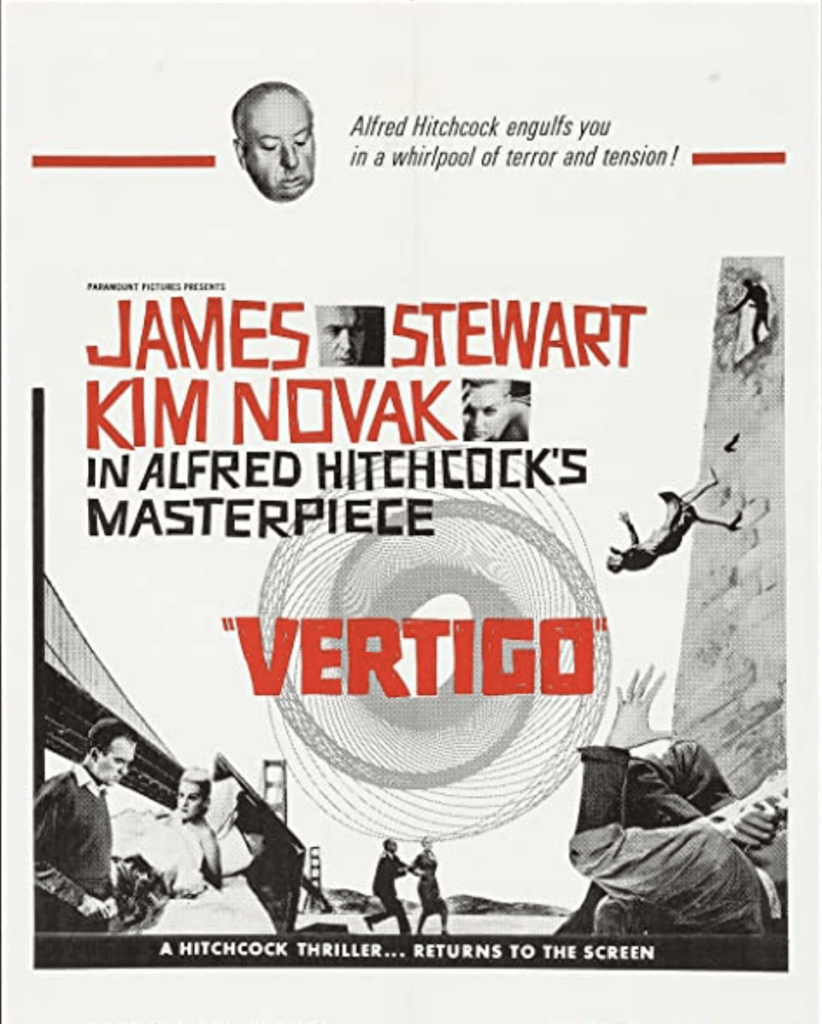
Vertigo was my introduction to his work came at age 13 when I went to a re-release of Vertigo double billed with a Rory Calhoun western Four Guns To The Border at the Regal Cinema, in Odiham, Hampshire, Vertigo‘s initial release had performed below expectations. It was ahead of its time. Note how the re-release artwork hypes the thrills and spoils the ending to broaden the audience. That evening, the movie’s rich visuals, foreboding tone and the magnetism of the two stars took me to another world more completely than any previous film. Walking home it occurred to me that making films was a job. People got paid to do it. A eureka moment. Vertigo, with its compelling set pieces, emphasized in this French poster, inspired me to study the medium and try my hand.
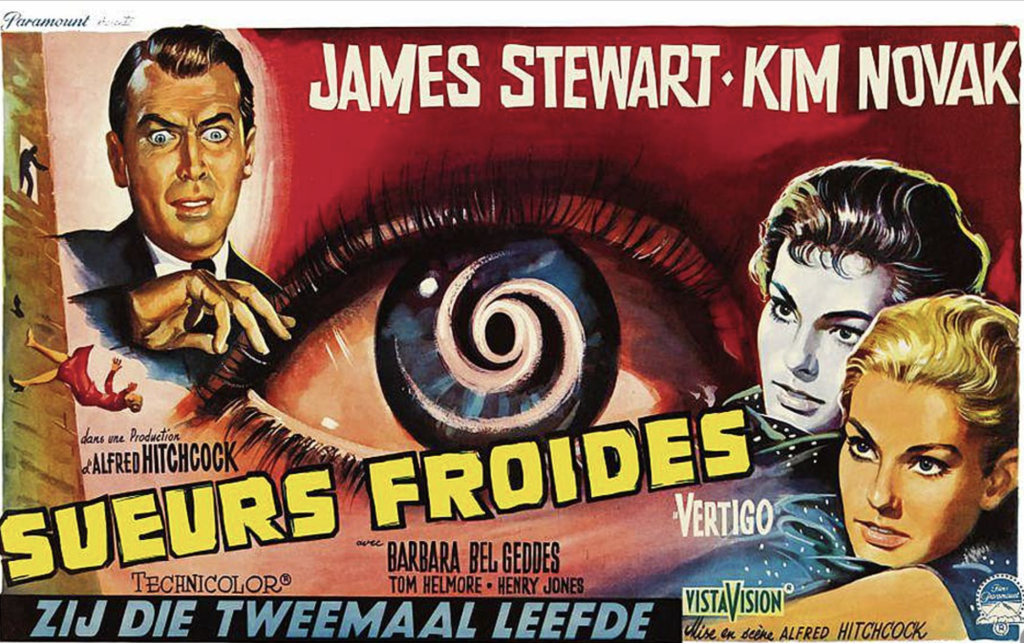
To many teenagers like me in the 1960’s, with dreams of making movies themselves one day, Alfred Hitchcock was an idol: a film maker with total creative control. always seeking innovative ways to make drama more visually compelling. He was attracted to stories of moral conflict in which the audience experienced divided loyalties. This coincided with a taste for the macabre, ironic, and gruesome. He strove to push the boundaries of allowable content and would challenge censorship standards throughout his career. At heart, Hitchcock was a free speech advocate. Why, Hitch asked, should some subjects, particularly those involving sexuality, be forbidden in movies, but allowed in theater and literature?
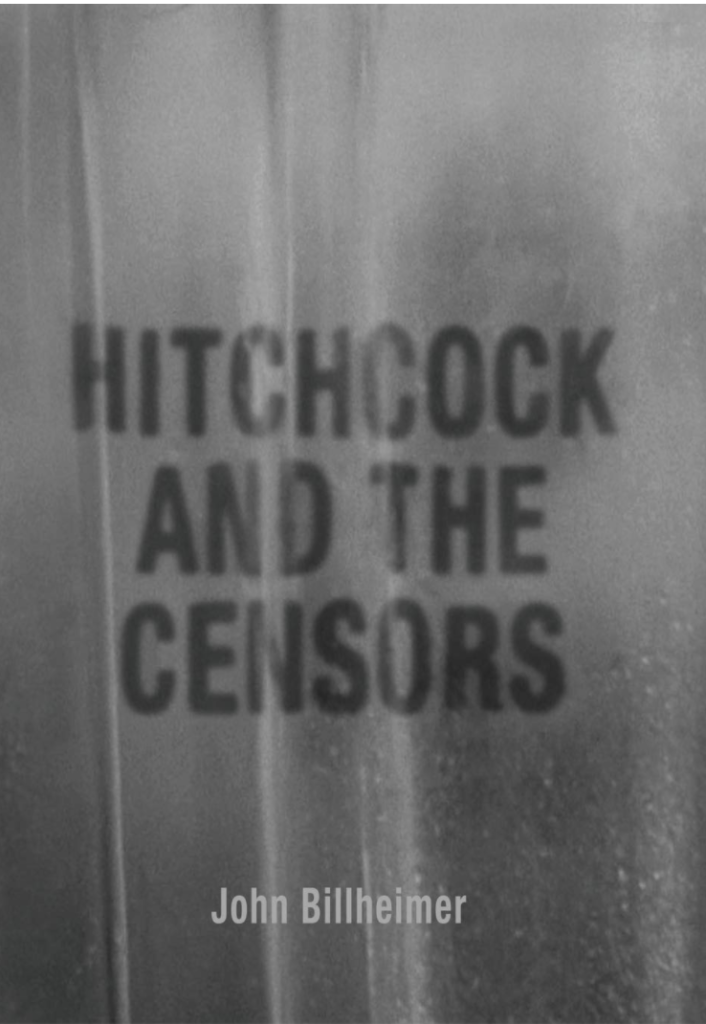
Many books touch on how Hitchcock steered his films through decades of censorship oversight. I recommend the recent Hitchcock and the Censors, by John Billheimer, which is both scholarly and entertaining. All Hitchcock fans will enjoy it. Hitch did not always win his battles, particularly in the early days, but he grew more adept, chipping away at the restrictions by setting little precedents along the way. Yet among the many things the book reveals is how often the restrictions of the Production Code of America and the Catholic Legion of Decency prevented Hitchcock from highlighting the controversial element that attracted him to the source material in the first place. One example is 1939’s Jamaica Inn.
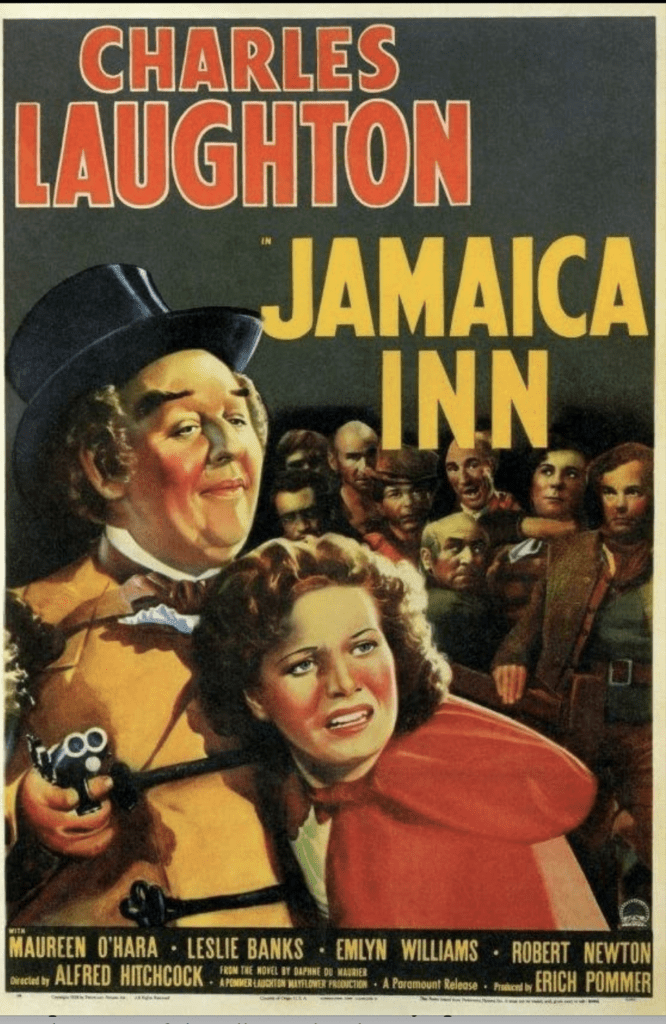
The heroine of Daphne Du Maurier’s Napoleonic era novel Jamaica Inn is a plucky eighteen year old girl, who discovers that a pirate gang is luring ships onto the North Cornish rocks to kill survivors and pillage their goods.
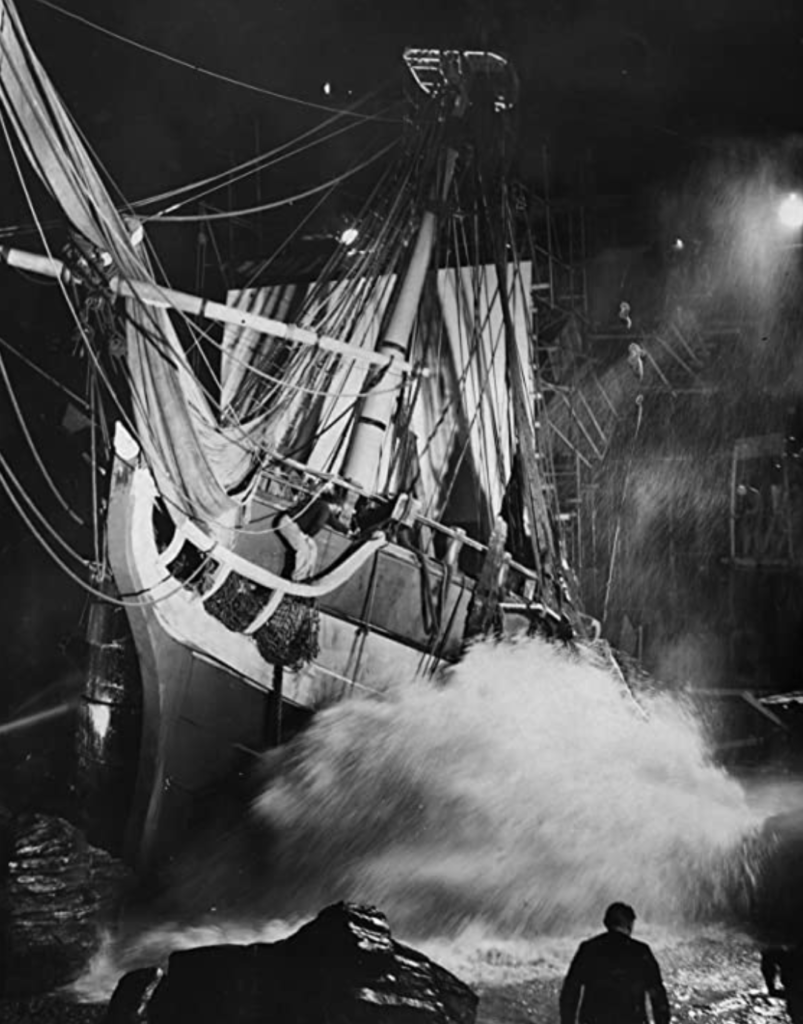
Du Maurier’s villain is a clergyman, the Reverend Francis Davey, one so cynical that he has a secret drawing of himself preaching as a wolf to a congregation that have the heads of sheep. Such an image must have amused Hitchcock. It catered to his innate suspicion of authority figures, another benefit of Jesuit schooling. Besides, the Reverend was a Protestant, fair game for an irreverent Cockney Irish Catholic like Hitchcock. He was going to have fun with the villain’s hypocrisy, particularly as played by star character actor Charles Laughton, here binding and gagging Maureen O’Hara with a degree of uncomfortable relish; Hitchcock again pushing the boundaries.
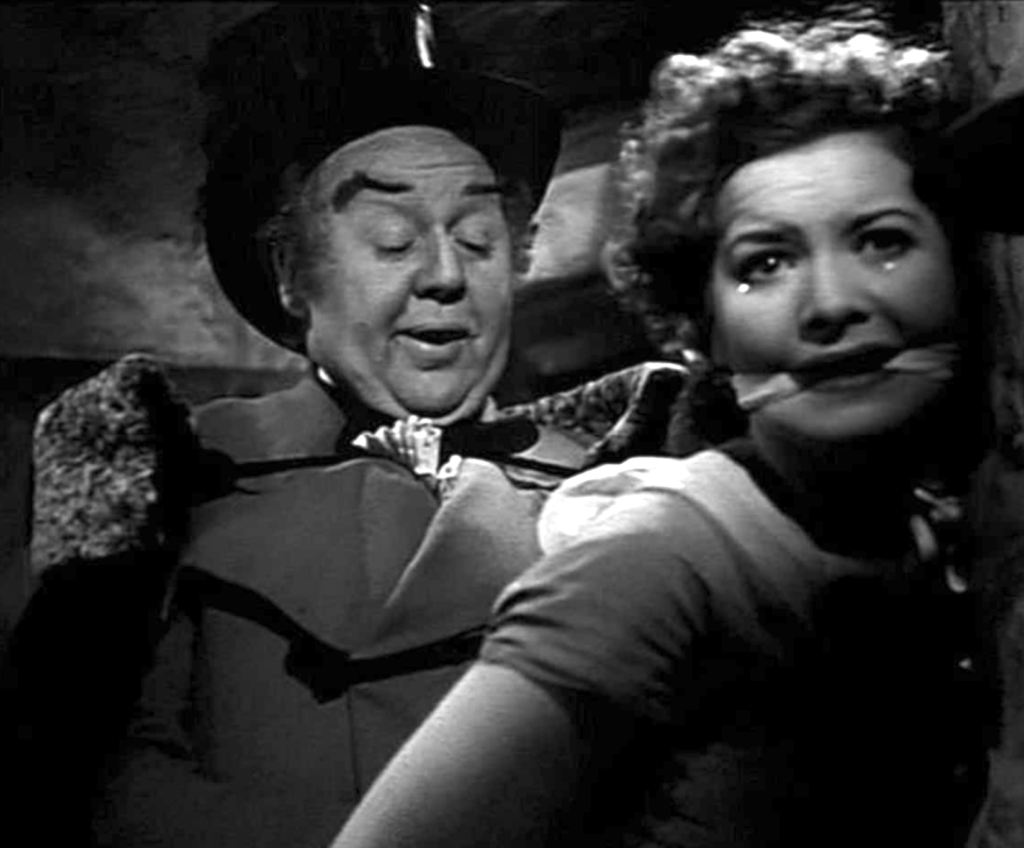
Laughton had discovered the young actress at Dublin’s Abbey Theater and insisted on her casting. Their next pairing The Hunchback of Notre Dame would make Maureen O’Hara a Hollywood star. The Legion of Decency and read the script and had a conniption at the prospect of a crooked officer of religion and threatened Hitchcock’s film with a “C” rating – Condemned, making its future release in the US unviable, without which the film could not go into production. As they explained, the evil Reverend Francis Davey violated the PCA’s ruling on religion.
SECTION VIII. Religion
1. No film or episode may throw ridicule on any religious faith.
2. Ministers of religion in their character as ministers of religion should not be used as comic characters or as villains.
So the villain’s profession had to be changed. He became Sir Humphrey Pengalion, a Justice of the Peace. Thus the institution of The Clergy was protected from ridicule; The Law less so. The Censor’s justification:
The power of the movies to influence society underpinned all the PCA’s concerns: The reason why ministers of religion may not be comic characters or villains is simply because the attitude taken toward them may easily become the attitude taken toward religion in general. Religion is lowered in the minds of the audience because of the lowering of the audience’s respect for a minister.
Hitchcock realized this was not a fight he was going to win against an institution with theocratic leanings. His contract with Hollywood producer David O’Selznick was in negotiation. It was more important to avoid a confrontation with the PCA and effect a smooth transition from the British film industry to Hollywood. His first American film was another Daphne Du Maurier novel with an ending that contradicted PCA moral strictures.
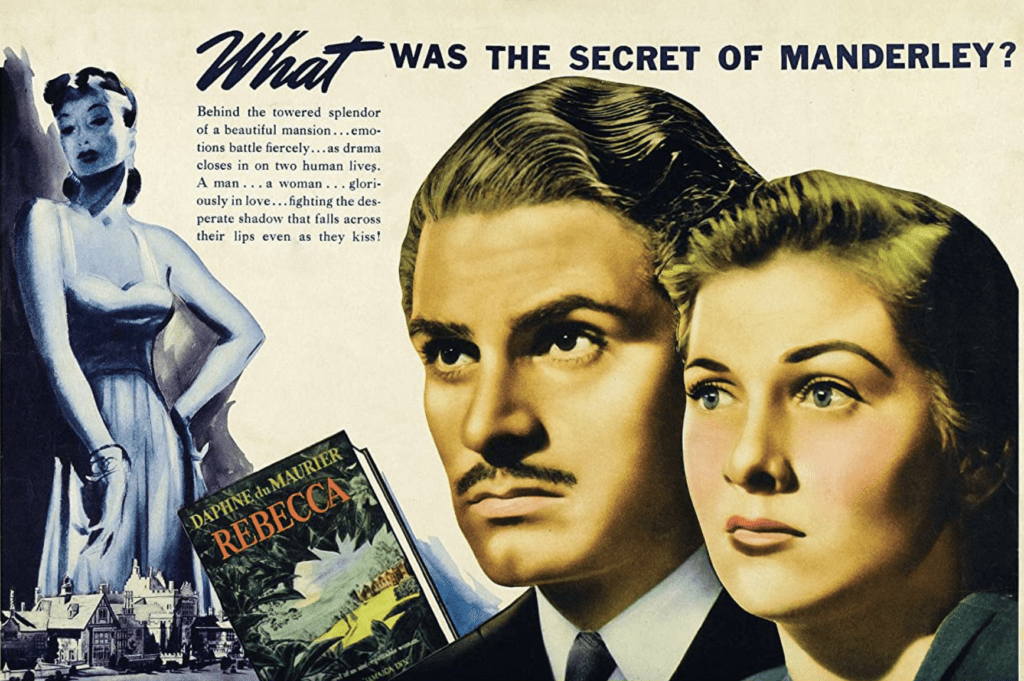
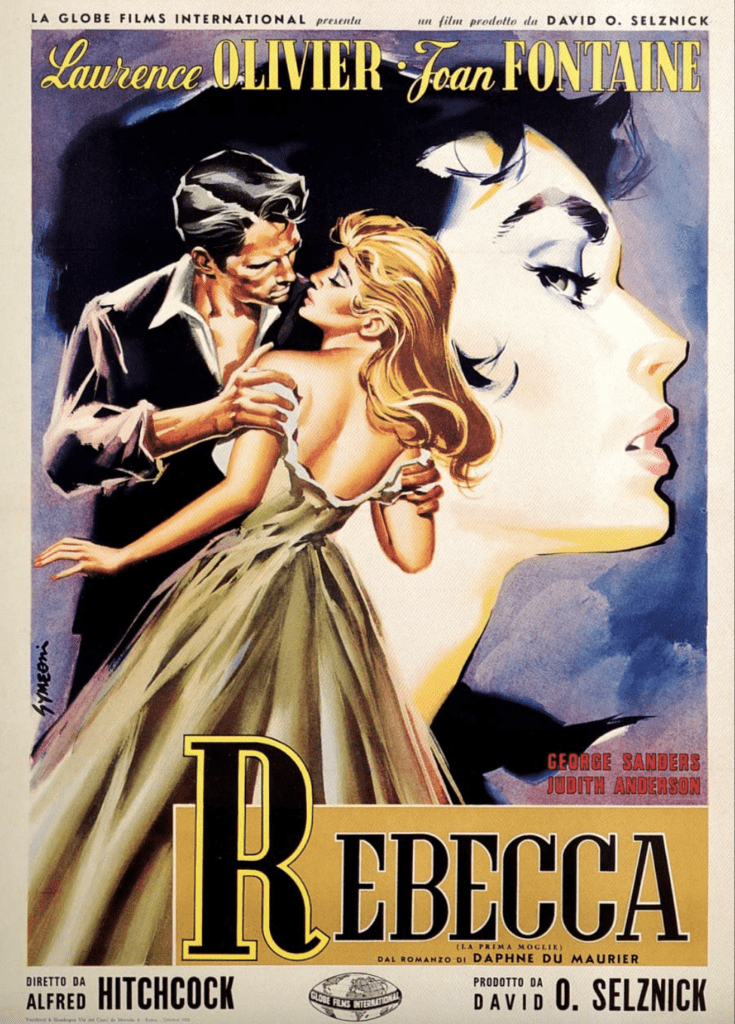
The Italian poster for Rebecca projected more sexuality than the film offers. But what attracted Hitchcock to Daphne Du Maurier’s brooding mystery was the delicious moral ambiguity of its conclusion.
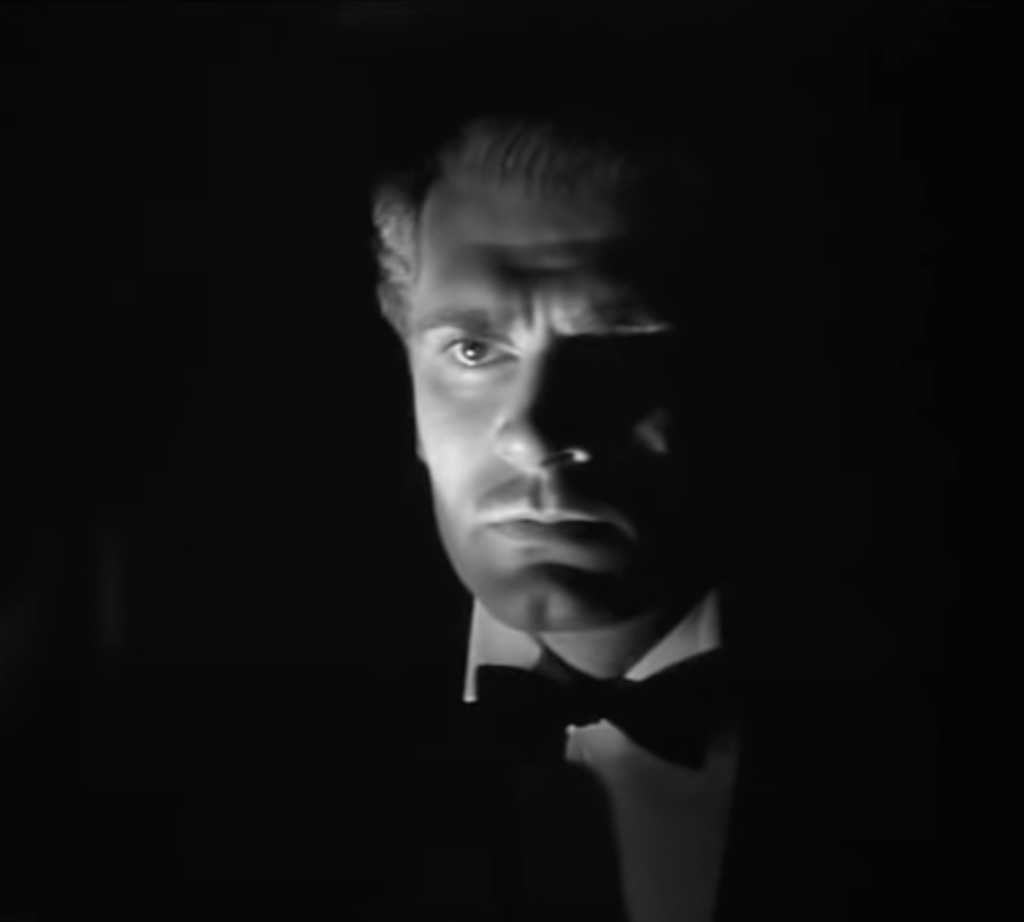
The heroine accepts that her husband, albeit with some cause, killed his promiscuous first wife who was planning to ruin him. But the new young wife, when she discovers the truth, lies on his behalf, then stays with him, thereby achieving hitherto denied parity in their relationship.
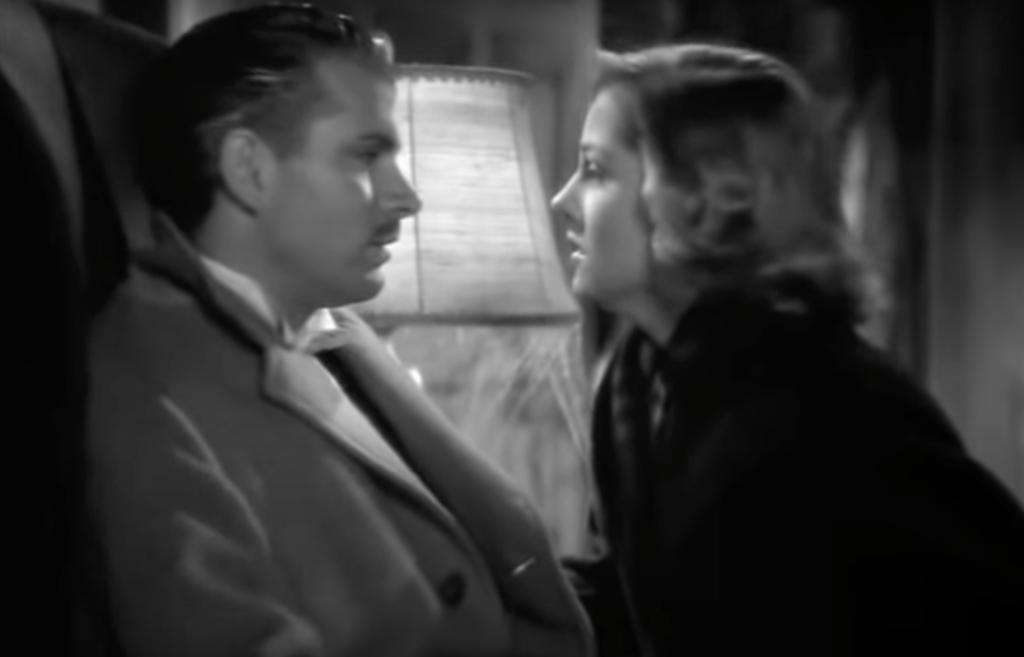
Once again Hitchcock’s push for moral nuance in movies was thwarted. Absolutely not, said the PCA, if an accused murderer is guilty, he must be punished. To overcome the impasse Hitchcock suggested the “accidental death” revelation at trial, allowing the husband to be found not guilty, and conventional morality upheld. Producer David O. Selznick, already smarting from PCA restrictions on Gone with the Wind publicly declared the Production Code “insane, inane, and outmoded.”. But the “death by misadventure” version of the script was shot, shorn of the whole point of Du Maurier’s proto-feminist novel.
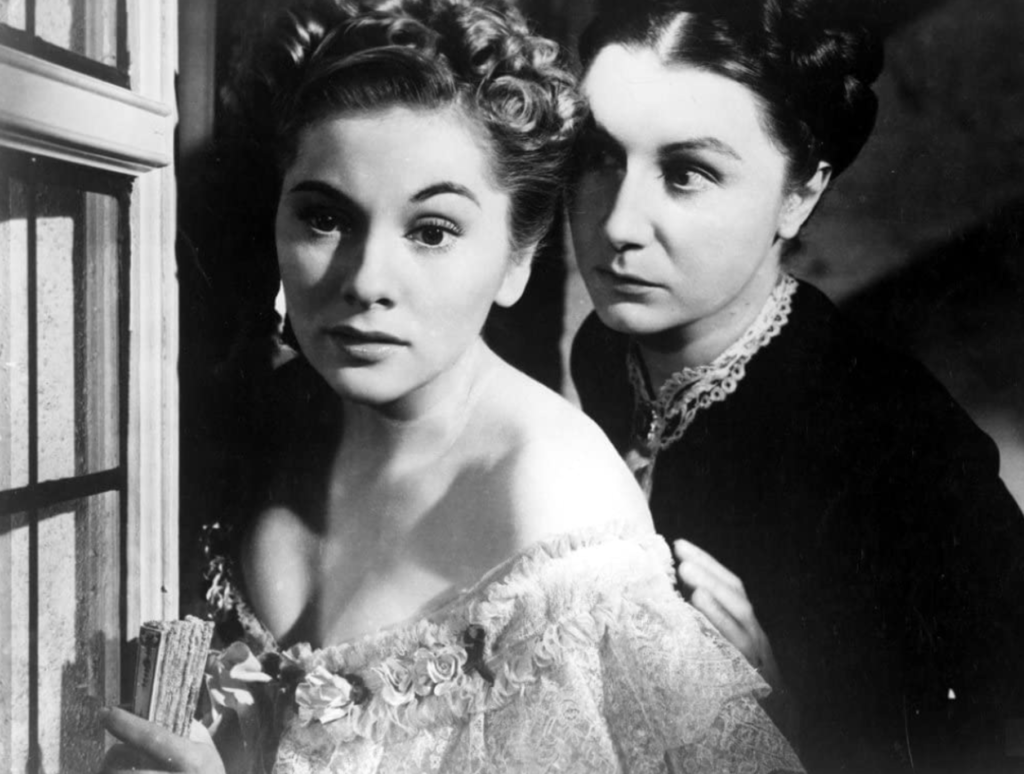
The book suggests there had been a lesbian relationship between the late Mrs. Rebecca De Winter and her housekeeper Mrs Danvers. No, said the PCA, there can be no implication that Mrs. Danvers is a lesbian. But Hitchcock found ways to convey that implication through lighting, framing, and little touches like the ways Mrs. Danvers obsessively caresses Rebecca’s clothes.
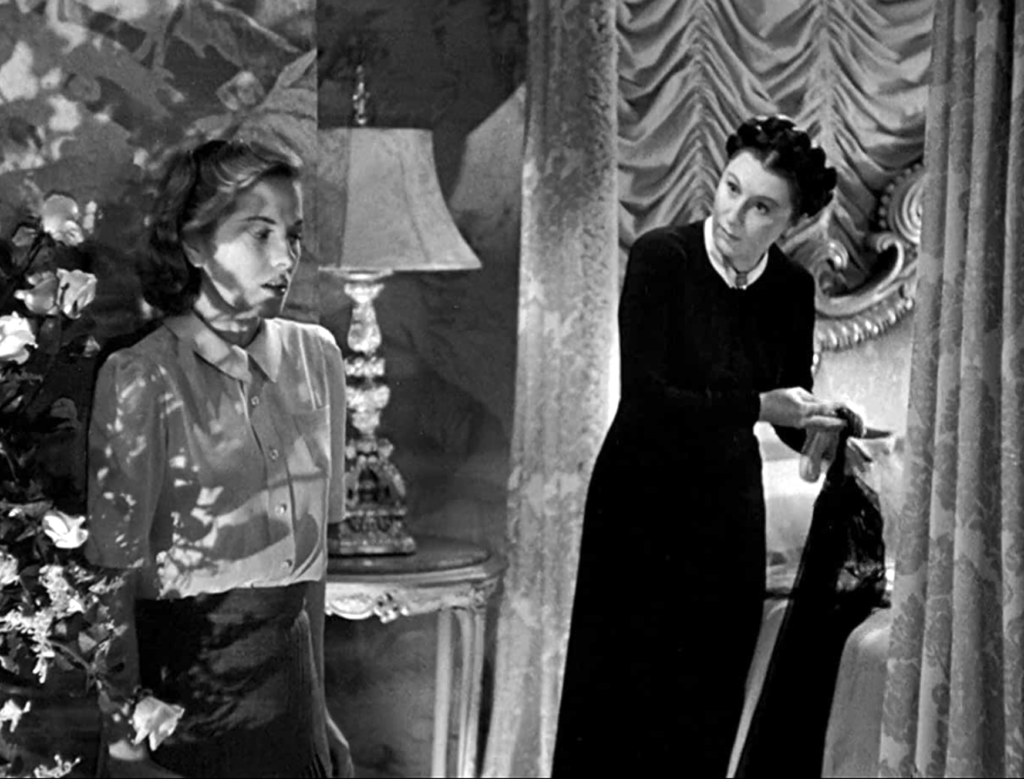
Rebecca was a big hit, won two Academy Awards, and established Hitchcock in Hollywood as a stylish director, drawn to subjects with moral conflict.

As a Catholic, Hitchcock was attracted to the issues in the hit play I Confess in which a priest, played by Montgomery Clift in the film, is accused of murdering a blackmailer who threatened to reveal the priest’s illegitimate child. He goes to the gallows because he won’t reveal the identity of the real murderer, another victim of the blackmailer, whose confession of guilt is protected by the seal of the confessional.
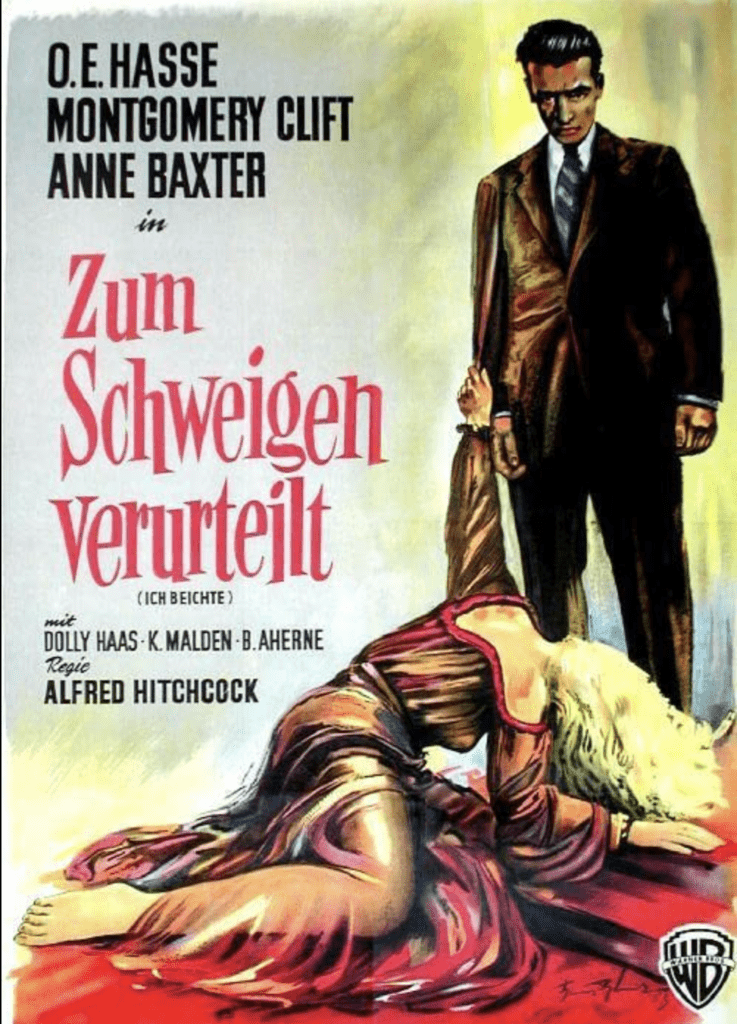
Note the sensationalist approach in the posters for I Confess. Nothing suggesting the hero he is a priest. The studio was nervous about the picture’s appeal to a wide audience, given that the dilemma at its core was one of Catholic doctrine.
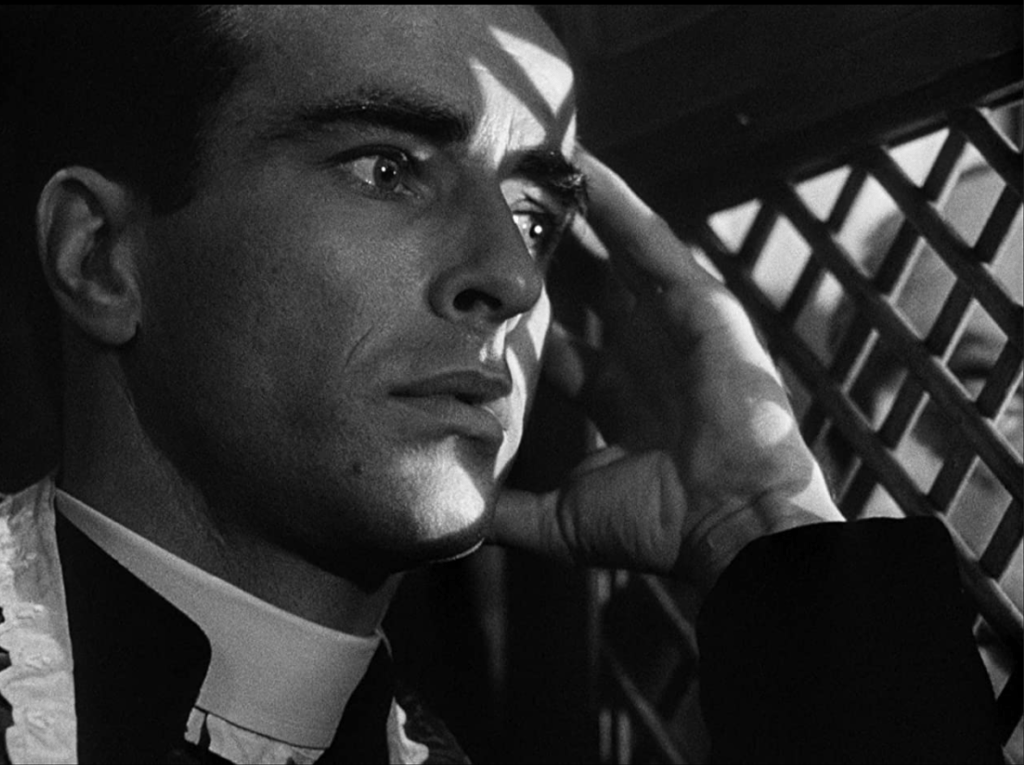
” I was terrified of the police, the Jesuit fathers, of physical punishment, of a lot of things. This is the root of my work. ” Hitchcock once confessed.
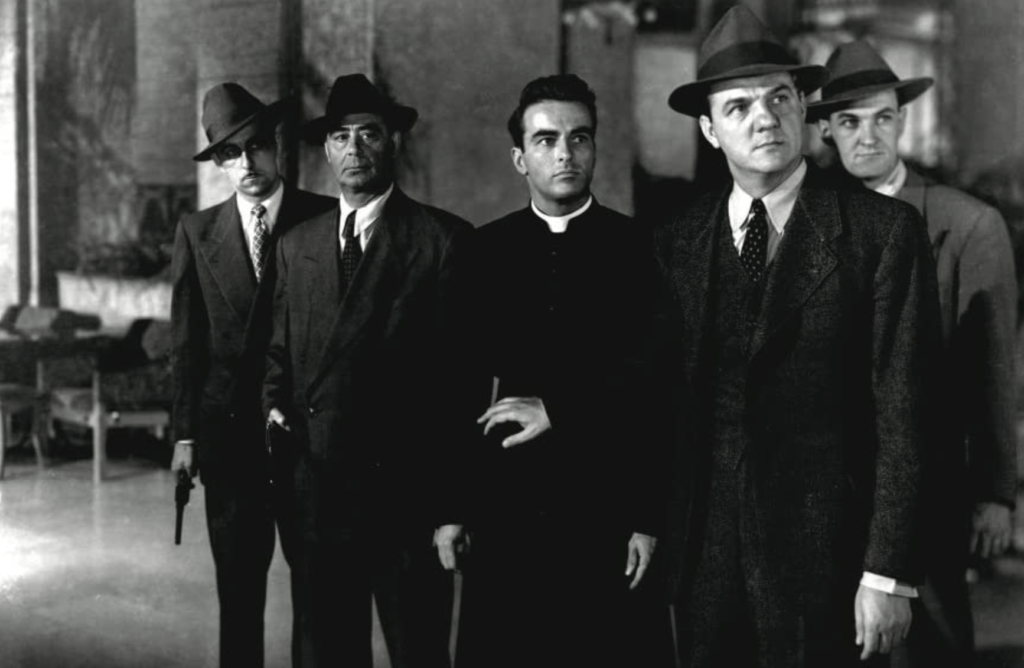
Of course the Production Code nixed the priest’s illegitimate child. A secret worthy of blackmail became instead a chaste over night stay with a girlfriend before he entered the priesthood. But the PCA insisted that the real murderer be caught and the priest exonerated. Phew! Of course, Justice always prevails, the innocent never hang. Confidence in the criminal justice system must be preserved. The powerful anti-capital punishment ending of the play was not allowed. The trailer went all out to assure Hitchcock’s fanbase that I Confess would deliver the master’s trademark suspense.
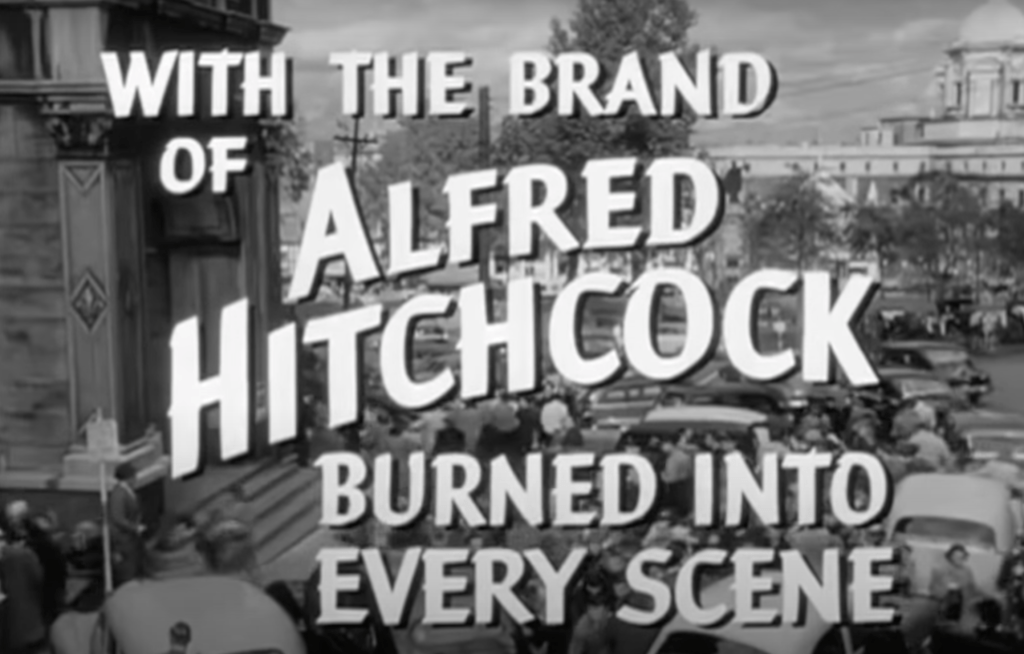
Although he dd not succeed in keeping the original shock ending of I Confess, Hitch was a brilliant subverter of the rules. In Leonard Leff’s “Hitchcock and Selznick,” the director explained how he distracted the eye of the head of the British Board of Censors, Joseph Brooke Wilkinson, or “Brooksie” as he was known. Although he was the top watchdog over movie sins, Brooksie’s eyesight was failing. During review screenings, Hitchcock recalled, whenever an “offending piece of film approached, I said ‘Mr. Wilkinson-.’ He turned his head toward me and the moment went by on the screen without him seeing it.”
But it was much harder going with the PCA under Joseph Breen.
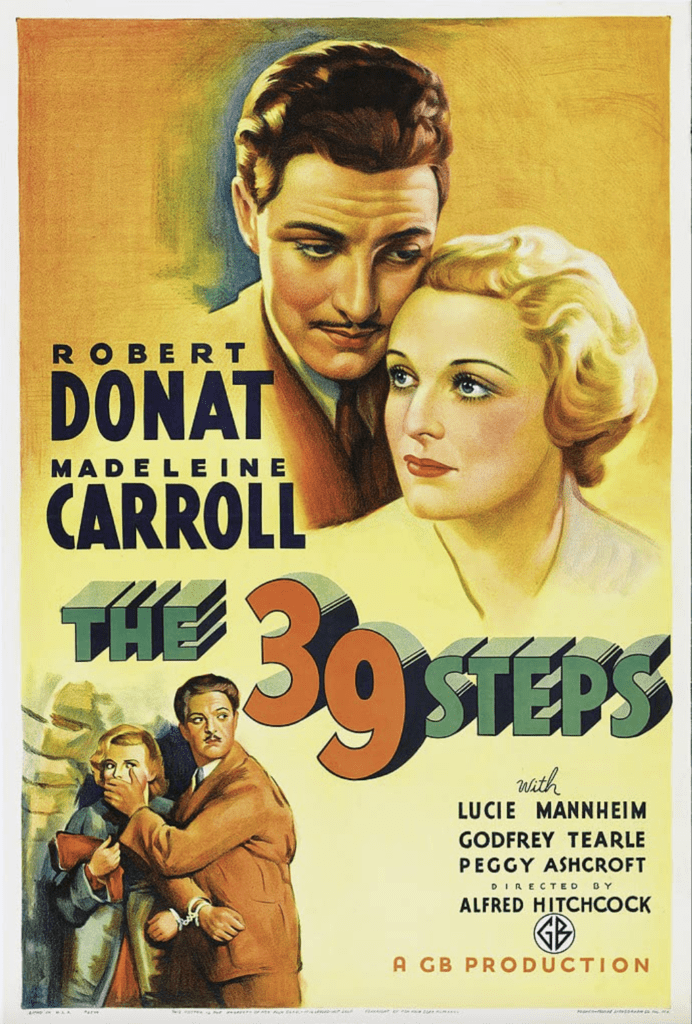
In The 39 Steps, the male and female leads are handcuffed together while fleeing from both the police and enemy agents.
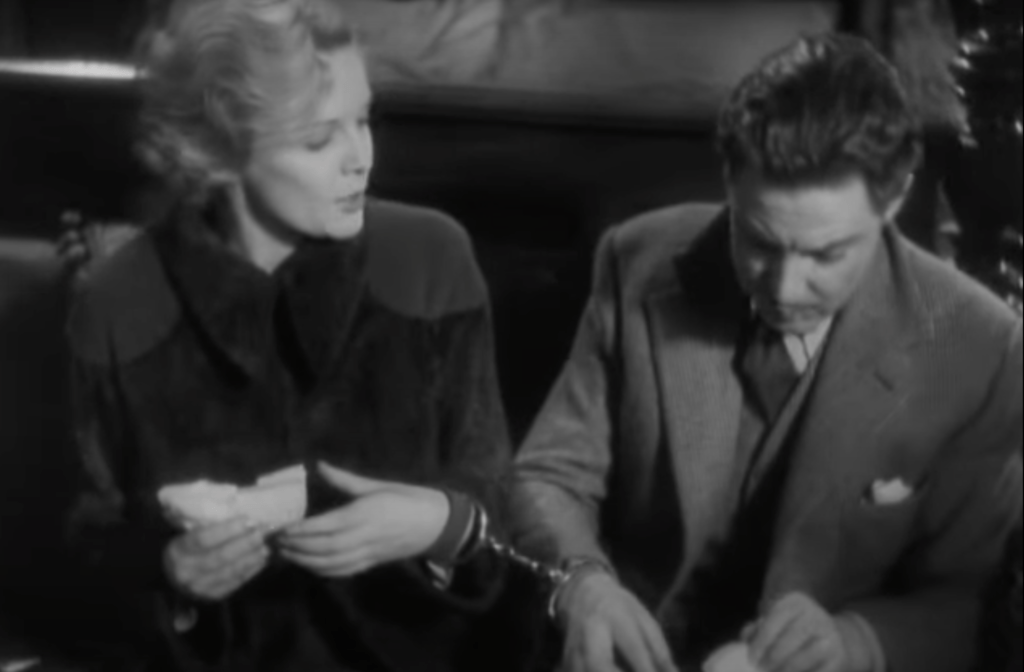
The two are not lovers, given that he is an accused murderer on the run, and she is an innocent, unwillingly handcuffed to him. Hitchcock created an amusing scene where Madeline Carroll has to remove both her stockings, dragging Ronald Donat’s hand within an inch of touching her thighs, first one leg, then the other. In an ostensibly non-sexual situation, though one charged with sexual tension, Hitchcock was able to put a sexual thought in the mind of the audience. And
the sin is after all in the eye of the beholder. The PCA examiners clearly did not like having such thoughts put into their heads and demanded this shot be removed.
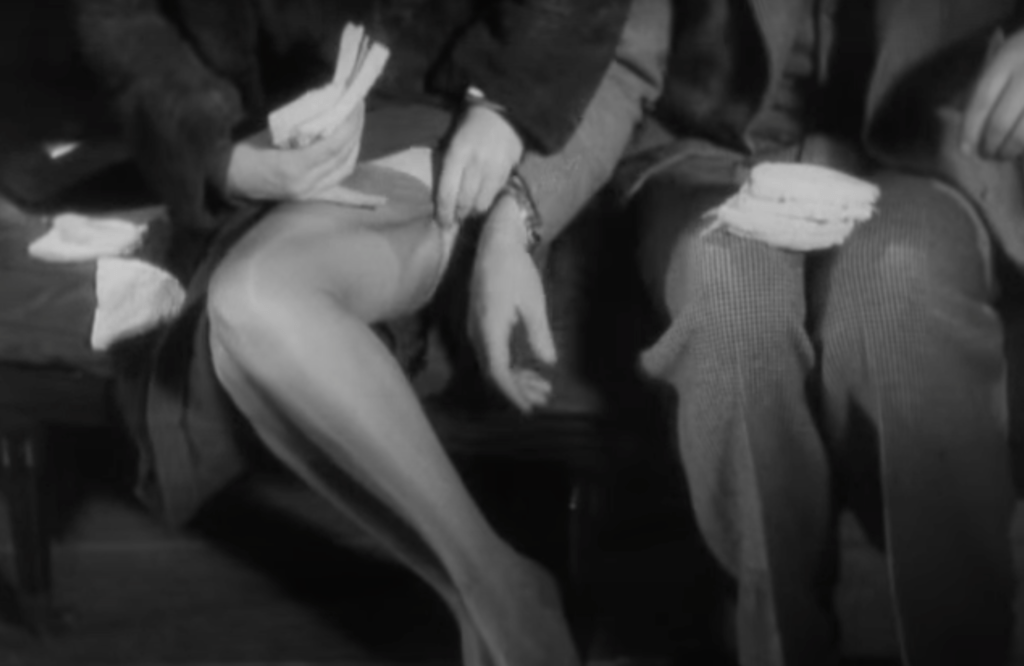
Predictably they had serious problems with the next scene. Donat and Carroll are forced to spend the night together in a double bed. Unmarried in a Double Bed! All Night! Handcuffs! It was a worrying combination to the Breen office.
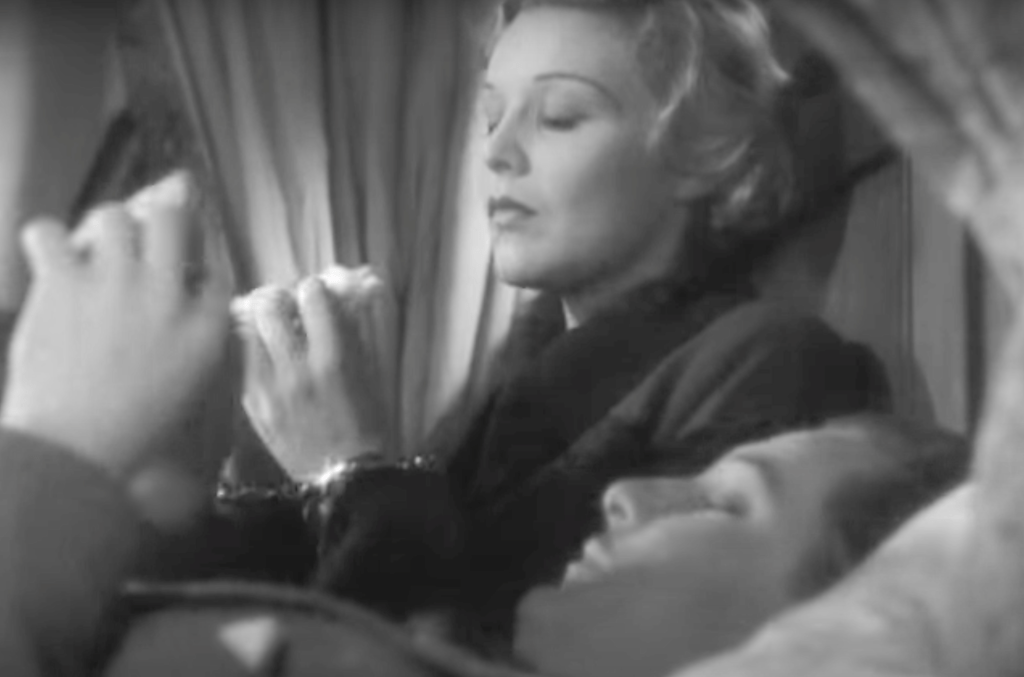
In the British version, the couple are fully clothed, and engage in verbal sparring. Donat eventually goes to sleep, then Carroll frees herself from the handcuffs. In 1934 not all British companies submitted their scripts to the PCA ahead of production for “do’s, don’ts, and be careful”, one of which was that not even married people were to be shown sleeping together in the same bed. Before The 39 Steps could be imported, the PCA insisted that key portions of the scene of the handcuffed couple in bed be cut, including any shot that involved their physical contact, leaving the audience wondering how the handcuffs were removed. Hitchcock complained of the damage to the story’s credibility, but the PCA were adamant, observing that, if the script had been submitted in advance, “they would never have allowed the scene to be filmed in the first place.” Hitchcock gradually became more adept at getting his taboo touches past the censor.
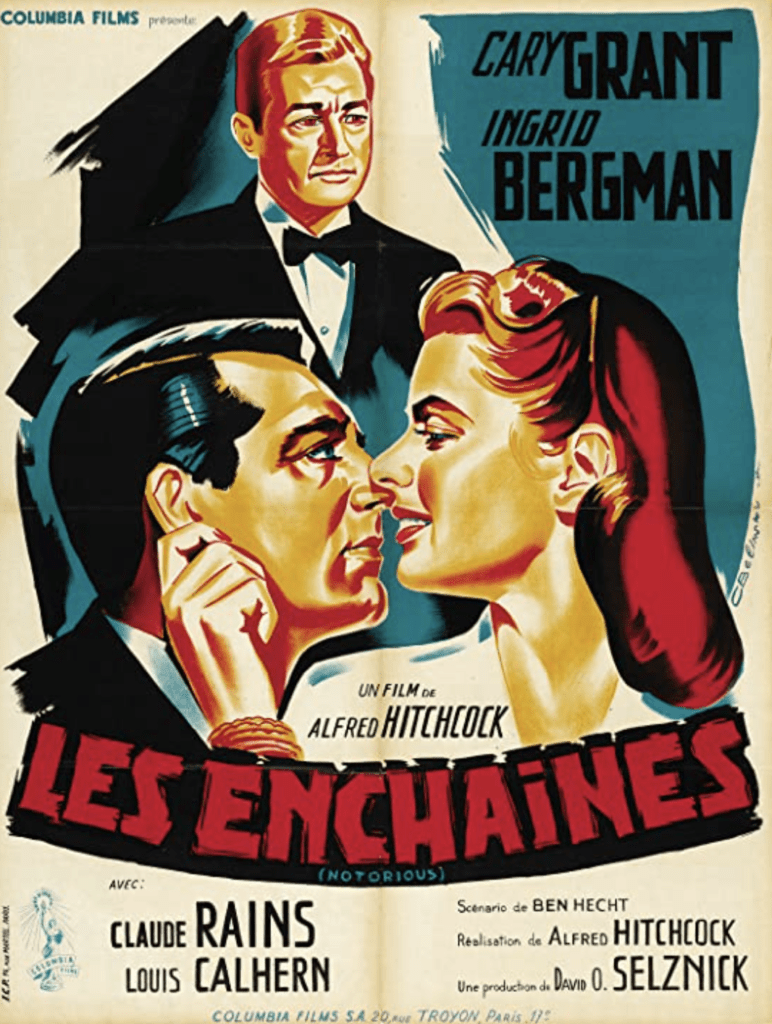
I like the French poster for Notorious, pointing us towards the famous two and a half minute kissing sequence which passed by having the actors break off kissing every three seconds. The PCA had a prohibition against “excessively lustful kissing”. Historians differ on the legendary “three second rule”, which former Breen Office examiners denied existed. Perhaps early in Code enforcement, they requested the shortening of a lengthy kiss. It passed at three seconds duration,
and so became enshrined as a rule in the minds of studios and producers. Hitchcock was determined to find a way to sneak nearly three minutes of passionate love play past the censors. Before shooting the scene, Hitchcock abandoned the scripted dialogue, a witty exchange concluding with a kiss, much to the chagrin of writer Ben Hecht. It was laced with double entendres that could draw the examiners attention to Hitch’s underlying intentions, delivering the
screen’s longest kiss.
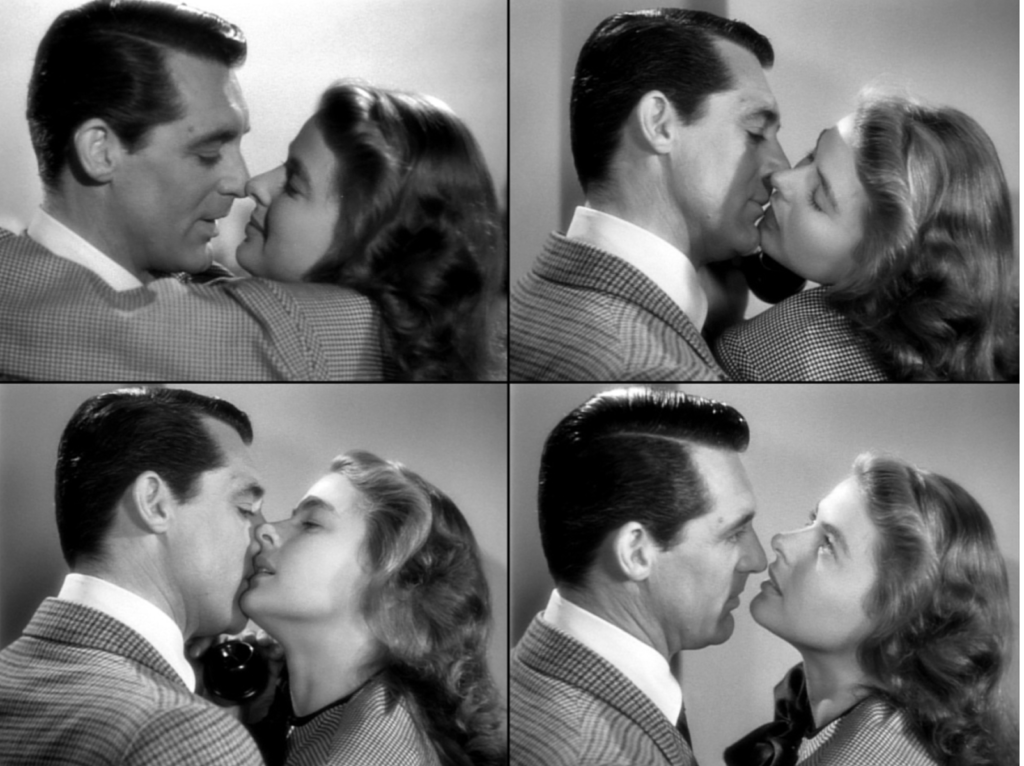
Hitchcock had Cary Grant and Ingrid Bergman improvise innocuous plans for a chicken dinner, while nuzzling, whispering, exchanging more than 20 kisses, none longer than three seconds. They never leave each other’s arms, even when Grant moves inside from the balcony to make a phone call, throughout which the kisses continue, till the door closes on Grant’s departure. Total canoodle – 2 mins 40 sizzling heartfelt seconds.
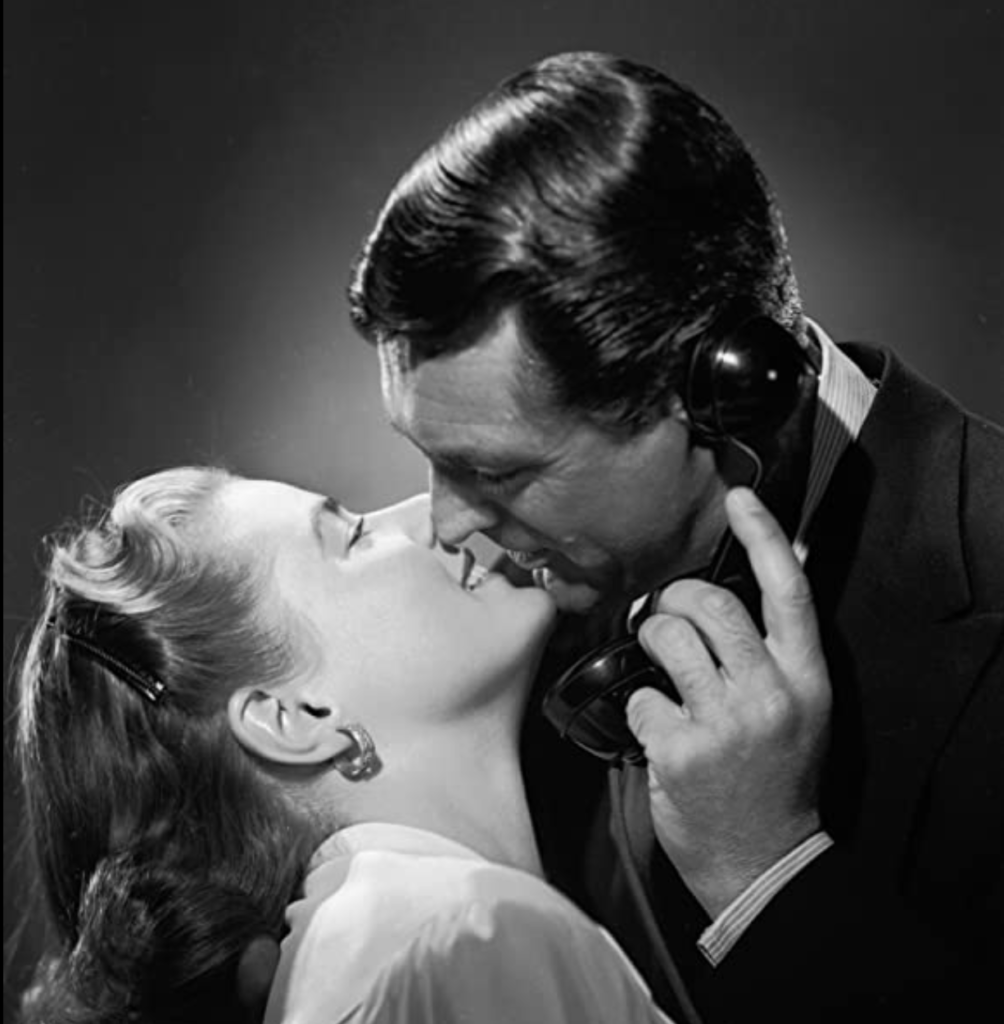
Both Grant and Bergman felt uncomfortable by their close proximity throughout the scene, but Hitchcock wanted to lock the audience in there with them. He said: “ For the length of this love scene, we the audience are privy to the embrace between two of the most attractive people in the world, enfolded in it with them, vicariously yet also actively.”
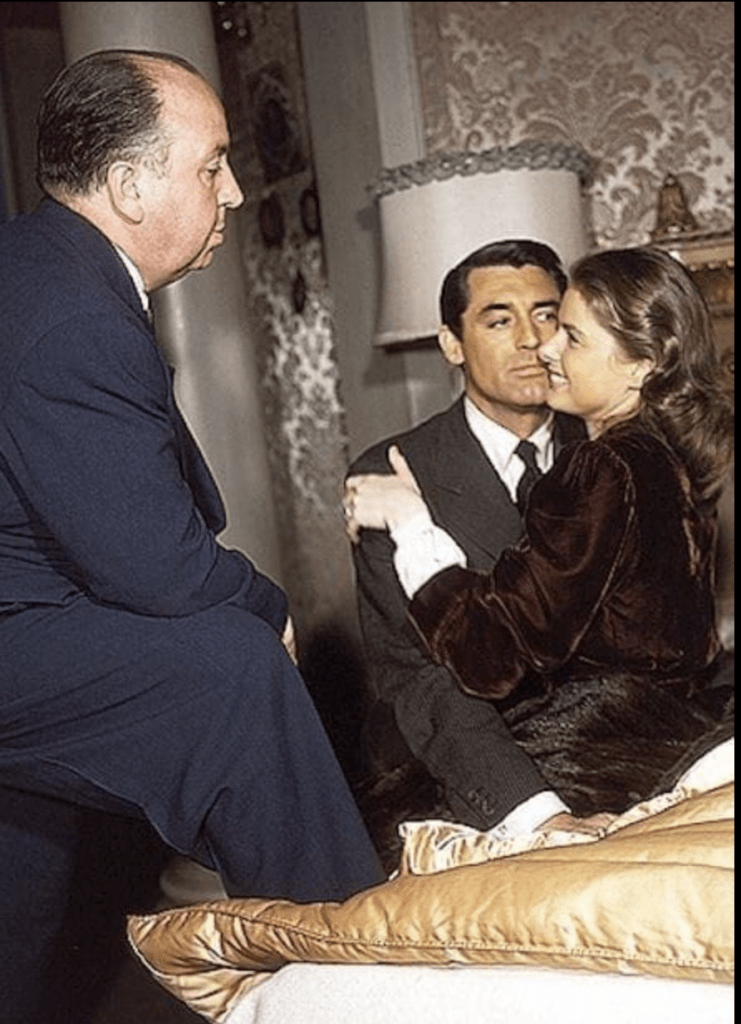
Given his suppressed intoxication with Ingrid Bergman that dated from their previous film Spellbound, I wonder what emotions Hitchcock felt while shooting this prolonged physical intimacy, while his wife and creative partner, the ever supportive, but all-knowing Alma Reville, sat beside him at the camera. This picture, which speaks volumes, is taken from early in their relationship. Alma and Hitch remained devoted to each other until death.
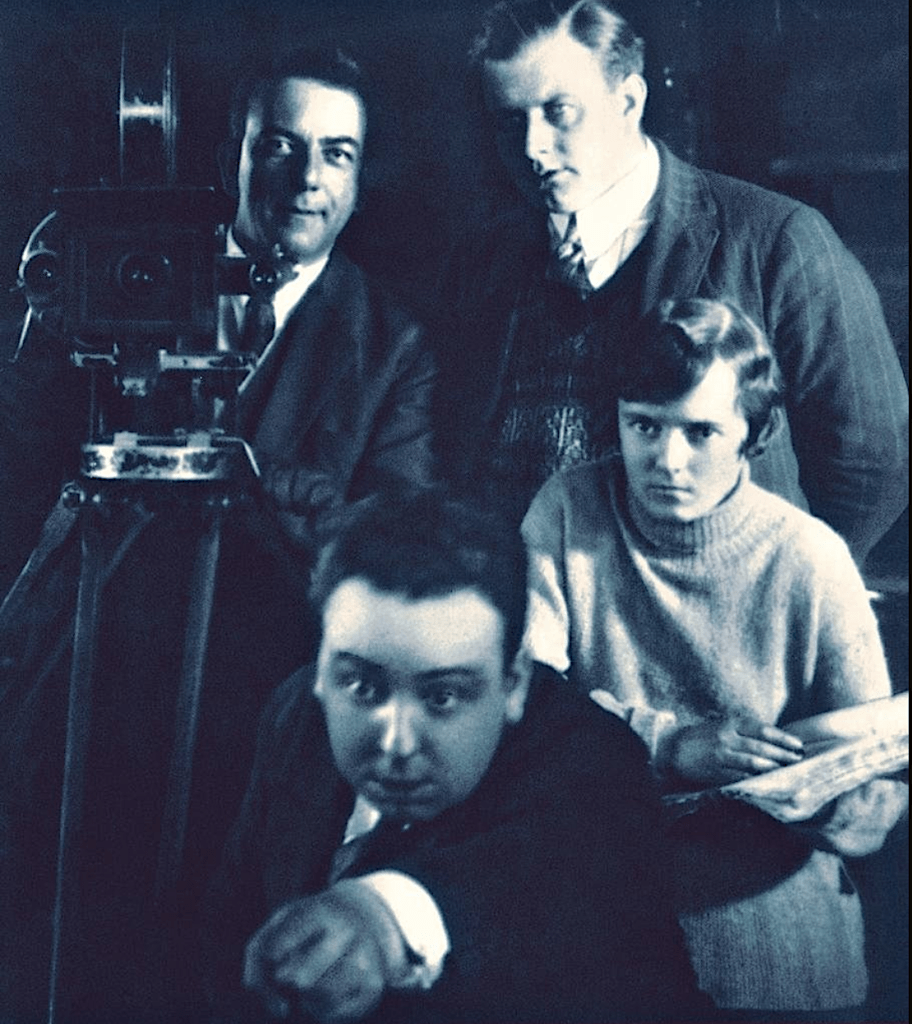
The success of Notorious ensured a good start to Hitchcock’s post-WW2 career, with the prospect of more creative control. The world had changed radically in six years and many aspects of society were under review. The psychological disruption and hardship of the war impacted Britain’s 1945 election.
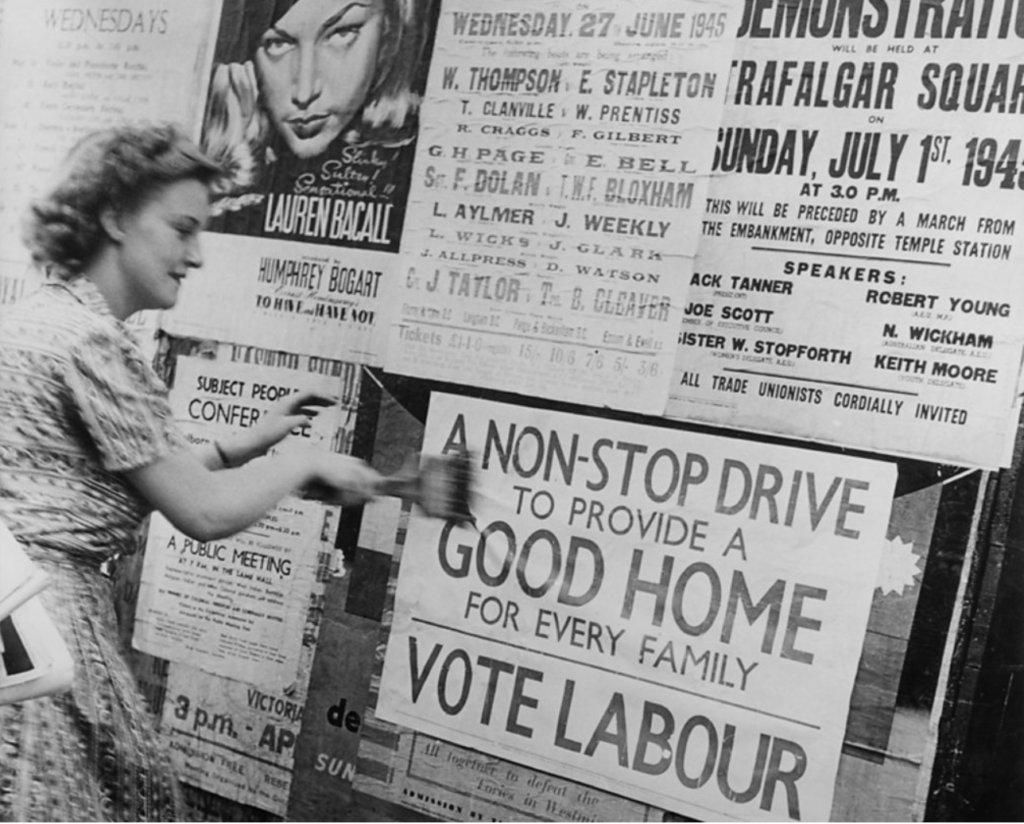
British voters, despite gratitude for Winston Churchill’s wartime leadership, threw out his Conservative Party, and installed a Labour Government that promised social change. Hitchcock hoped there would be a corresponding relaxation of censorship standards. Perhaps audiences would be allowed limited reference to previously taboo subjects, like homosexuality. Hitchcock’s Jesuit upbringing had insured a prurient interest in the forbidden, yet his experiences in the film industry had shown him the clear contradiction between dogma and reality. Forgive me if I couch it in terms Hitchcock might have appreciated – namely that sodomites were just as talented, decent upstanding citizens as non-sodomites. During the year he spent filming at Babelsberg Studios in Berlin, Hitchcock watched famed and openly gay director, FW Murnau at work on his silent masterpiece, Der Letzte Mann (The Last Laugh).
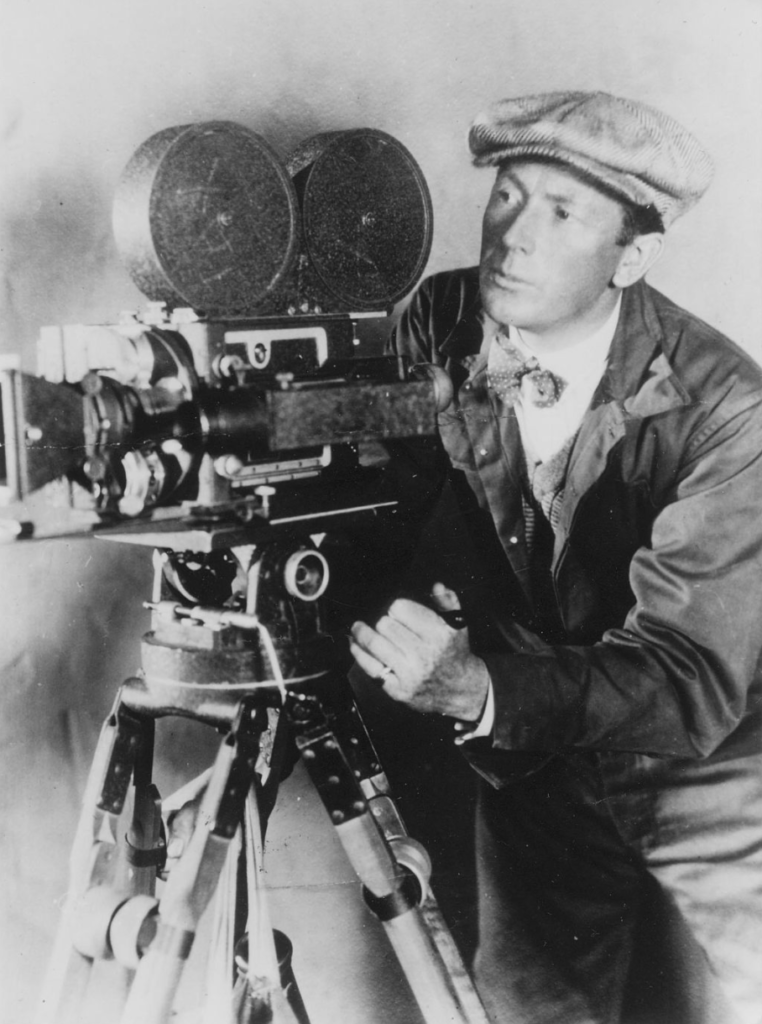
Murnau was happy to show the 25 year old aspiring British director his storyboards and meticulous preparation of each sequence, a discipline Hitchcock adopted along with Murnau’s Expressionistic visual style. The fact that an early mentor was homosexual, and thus damned to Hell from a Jesuit perspective, clearly did not bother Hitchcock. His fascination with sin stopped short of judgementalism. The Weimar Republic of 1924 certainly opened young Hitch’s eyes to a sexual tolerance not experienced in Islington. One night his German colleagues at UFA took him to a gay nightclub, where a private party was taking place. According to author and critic John Russell Taylor, the group adjourned to a hotel room with two women, who “made various propositions which, perhaps fortunately, the terrified Hitch did not understand too exactly. ” He kept repeating “Nein. nein.” The women then began making love on a bed under the gaze of their guests sipping cognac. The young daughter of an UFA executive put on her glasses to see better, Hitchcock recalled decades later in conversation with fellow director Francois Truffaut, adding dryly “it was a gemütlich German family soiree.”
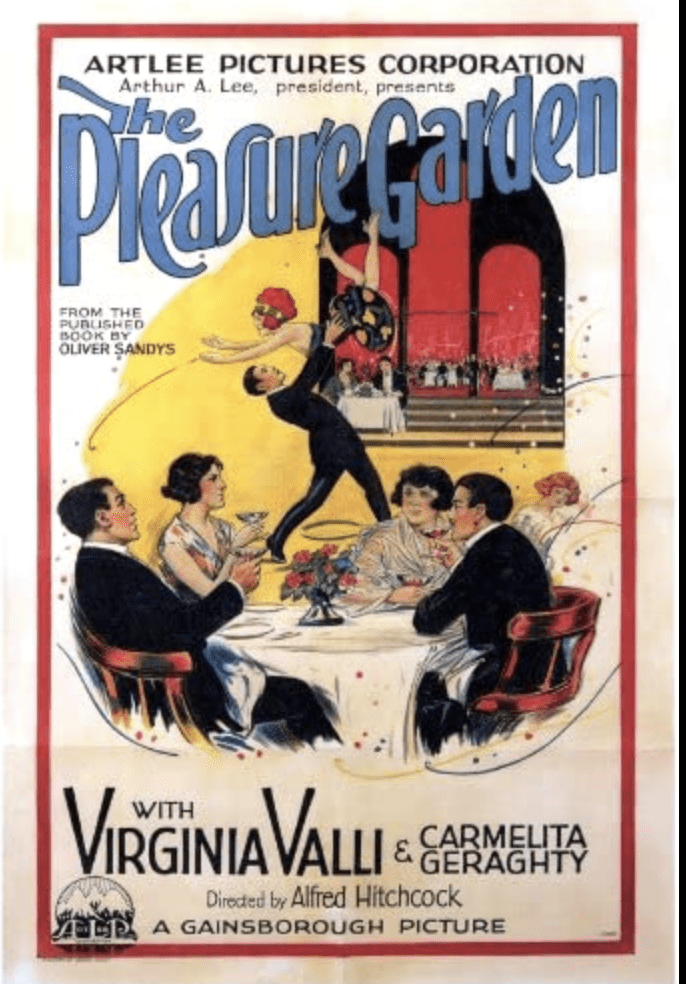
Hitch had more than a passing curiosity in every kind of sexual expression, be it straight, gay, lesbian, whatever. John Russell Taylor recalled Hitchcock saying that if he had not met Alma, he might have become ” a poof”. Maybe that was just Hitchcock’s penchant for shocking humor. In truth, he was a watcher, not a doer. There is anecdotal evidence that Hitchcock regarded homosexuality as a random fact of life, not deserving of moral opprobrium. In 1948, Hitchcock tried to sneak gay characters onto the screen, while convincing the Motion Picture Code of America he was doing no such thing. This required some fancy footwork when dealing with the PCA. ruled by conservative Catholic Joseph Ignatius Breen.
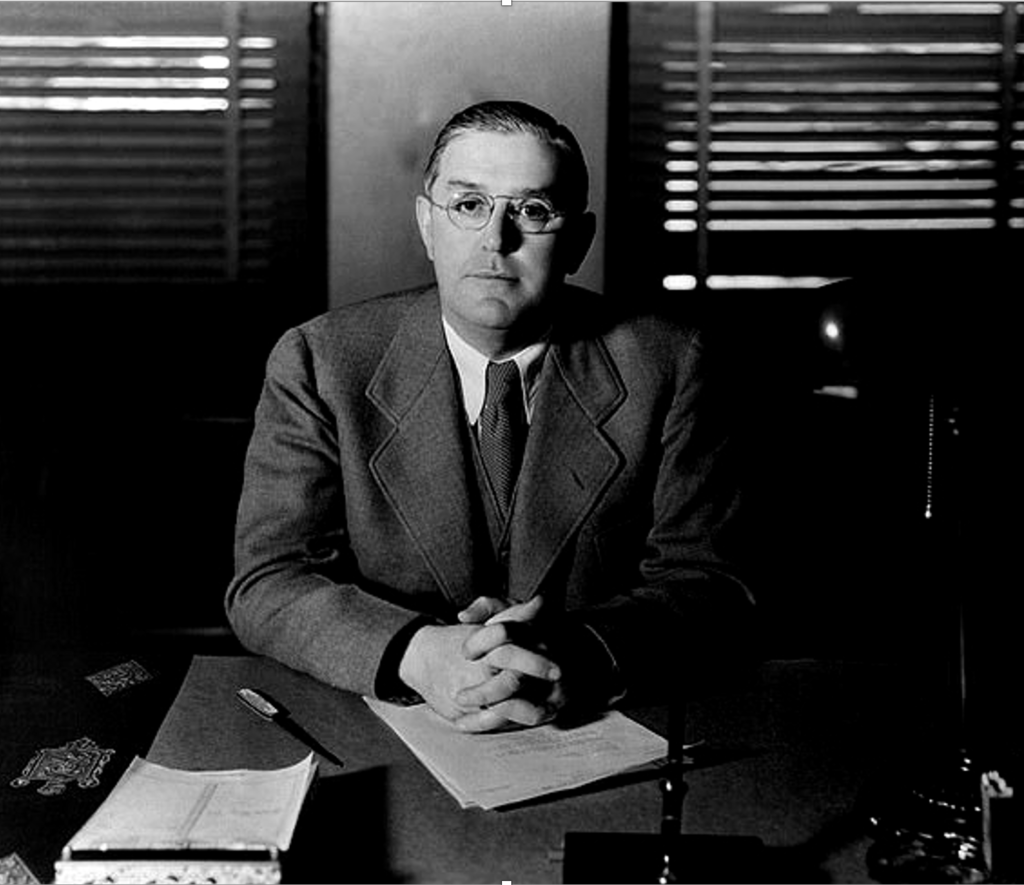
The PCA had an iron clad attitude to the subject of homosexuality. It was a sin, a perversion; at best a mental illness. The concern of this group of men with theocratic leanings was that allowing the subject in a mass entertainment medium will only encourage the “weak-minded” to try it. If homosexuality was eliminated from popular culture, it would eventually die out – was their rationale. By contrast, Hitchcock’s Jesuit education produced a man who was a covert iconoclast, an anti-authoritarian, sympathetic to the victims of circumstance. Sympathy for a cause is one thing, but why would a star director, with an Academy Award nomination and a string of successes behind him, want to even hint at a topic prohibited by the PCA? Hitchcock’s cause was simple. Freedom of expression. Hitch was a Free Speech warrior. No subject matter should be banned from the cinema screen. Every aspect of the human condition explored in literature and theater should be permitted in movies. Hitchcock tested the water with his next production, an adaptation of a British stage play Rope by Patrick Hamilton.
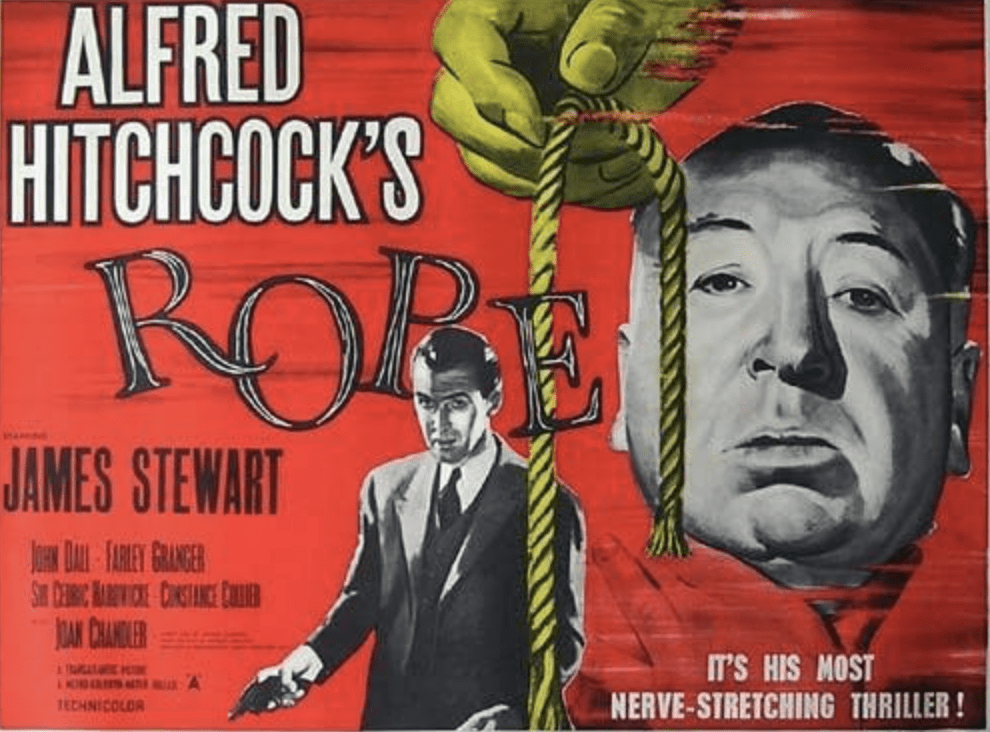
The premise of the play, a suspense thriller taking place in real time in a single location, appealed to Hitchcock’s taste for the macabre. Two young wealthy intellectuals strangle a friend, then throw a party. They serve food and drinks from the top of a chest in which they have hidden the body. Guests include the victim’s father, his fiancée, and their mentor professor who had introduced them to Nietzsche’s concept of the “superman” – one who is above conventional morality and the law.
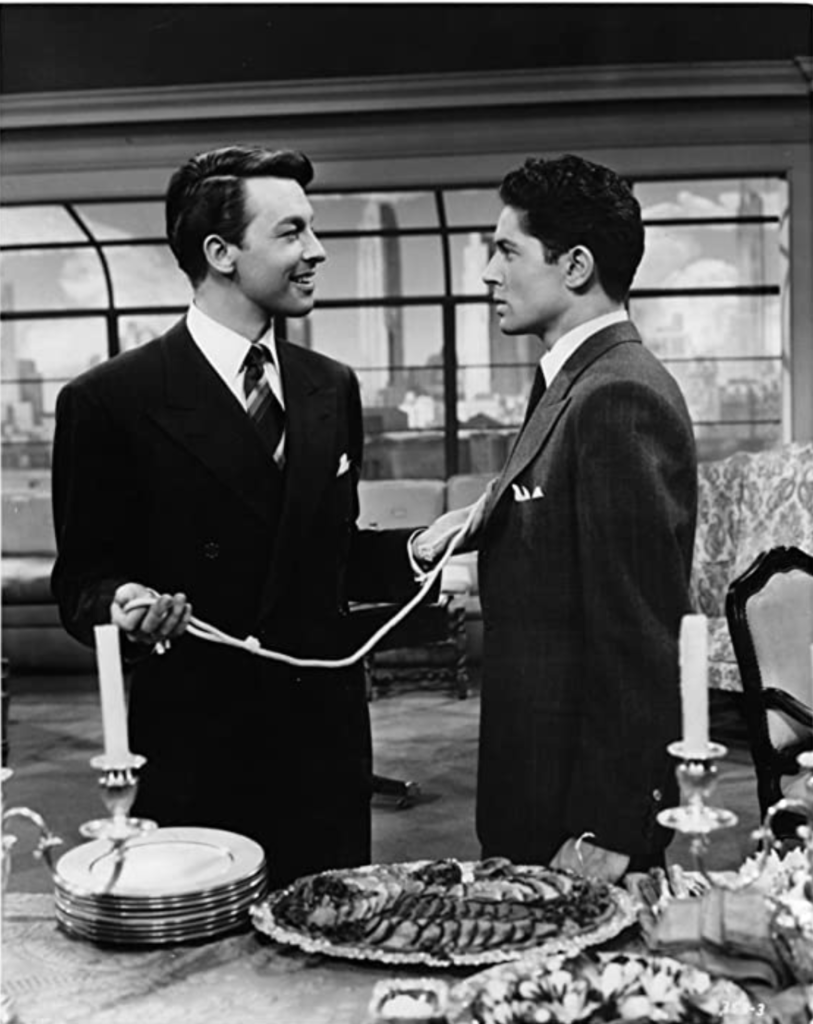
The play drew inspiration from the notorious Leopold and Loeb trial in 1924 Chicago, in which two homosexual college students contrived to commit the perfect murder of a stranger to demonstrate their intellectual superiority. Hitchcock knew there was no way the PCA would pass such a story. However, there was nothing overtly homosexual in the text of the play. The sexual relationship of the characters was conveyed through the playing of the actors. Consequently, when Hitchcock submitted the play’s manuscript, such homosexual inferences as there were went over the sheltered heads of the examiners. On first reading, their only concern was an undue emphasis on “liquor and drinking” at the party. Breen and his cronies were an abstemious lot. Hitchcock then hired a gay writer, Arthur Laurents, to adapt the play for the screen, discreetly shaping the young characters as closeted gays who pass for straight, much as Laurents had to pass in the straight Hollywood of 1948.
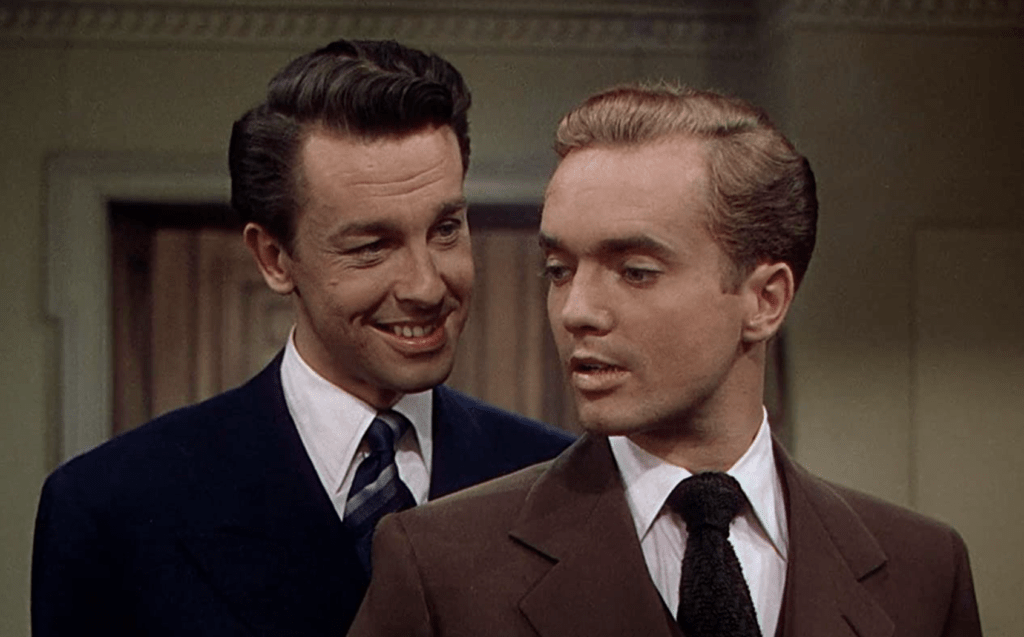
Laurents and Hitchcock eliminated phrases from the play like “my dear boy” and “have a lovely excuse ” lest they might be interpreted by the PCA as gay parlance, but retained some coded gay stereotypes of the day; one character uses cologne and is mother-fixated. Hitchcock then cast gay actors Farley Granger and John Dahl as the murderers, with folksy James Stewart as their former professor, who, of course, unravels the murder during the party.
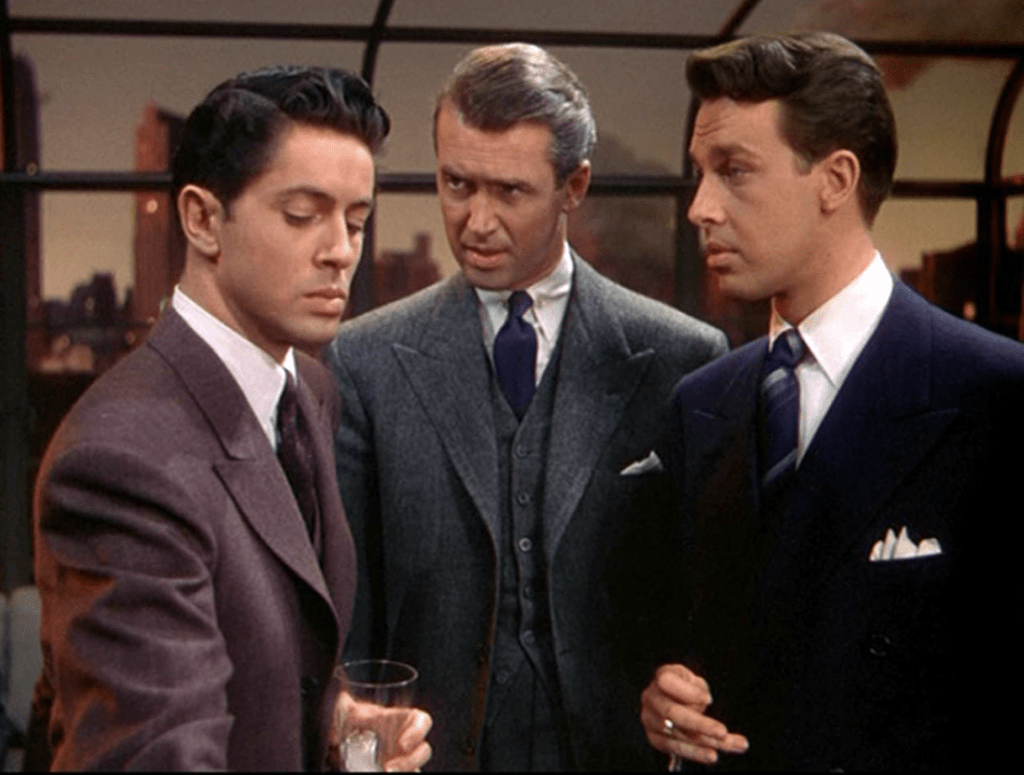
It tickled Hitchcock to share in the secret that writer Arthur Laurents and co-star Farley Granger were gay lovers at the time. Gay subtext was as far as Hitchcock dared to go, and he depended on Laurents, Granger and Dahl to pull it off under the unsuspecting noses of the Breen Office. Hitchcock knew that any requested censor cut would compromise the unique vision he had for Rope. His plan to amplify tension was to stage the real time drama in one apparently unbroken shot, running the length of the movie – 80 minutes. If the PCA demanded that lines of dialogue be cut, Hitchcock’s bold visual conceit would be ruined, or the costs of reshoots would be substantial. He adopted a pre-emptive approach. Stating that he was going to shoot the film in sequence, he requested the PCA view each reel as it was shot to flag any problems, starting with reel one and proceeding to conclusion. This was a sound strategic move. The PCA was now boxed in to tacitly approving the film reel by reel, without the benefit of context. Consequently each reel passed without comment. Even though the PCA had the right to demand cuts upon screening the film as a whole, Hitchcock gambled Joseph Breen had no interest in antagonizing a major studio with costly changes over gay subtext if he inferred it from the completed film. Indeed such subtext went over the heads of 90% of the US audience in 1948. It would take 10 years before critics of Hitchcock’s films would point out how Hitchcock broke new ground. It would take 20 years before homosexual characters would be permitted in major studio movies.
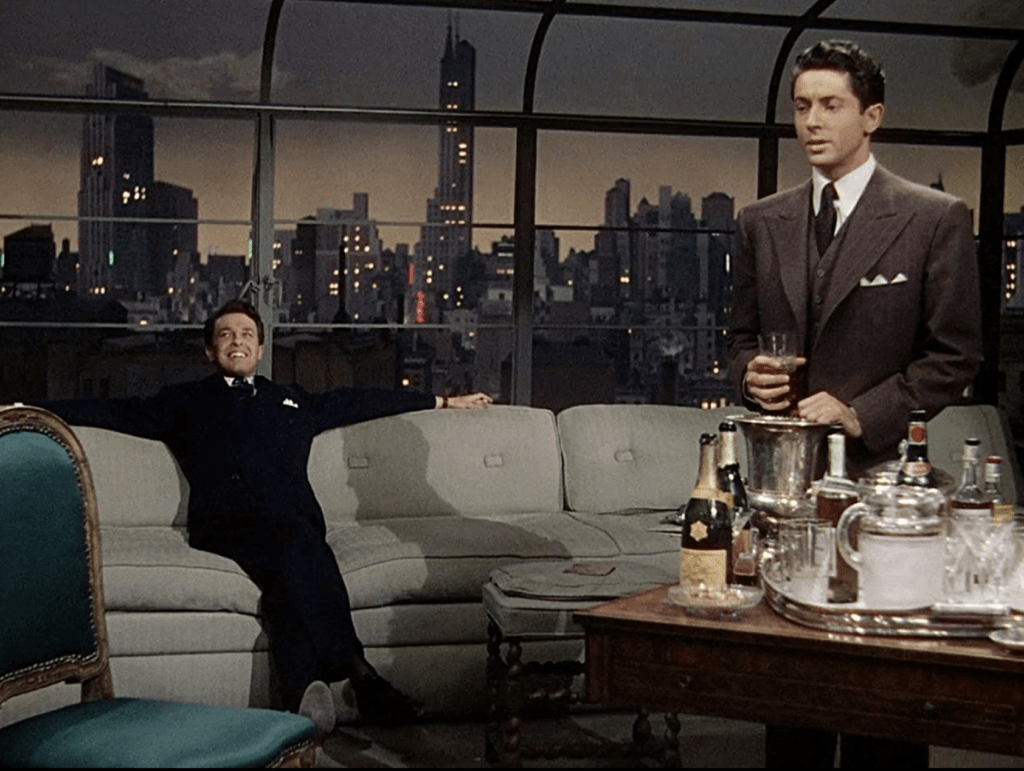
Hitchcock was a risk taker, In Rope, the first venture of his new production company Transatlantic Pictures, he danced around the edges of a taboo subject while adopting an enormously challenging production technique. Such hutzpah. Forgive me, if I get into the weeds of it here as a digression on his technical mastery. The theoretically “unbroken shot” running the whole length of the movie was achieved by a series of long single takes, roaming with the actors around the penthouse set. Through the panoramic windows Hitchcock placed perspective miniatures of adjacent Manhattan skyscrapers, complete with cotton wool clouds.
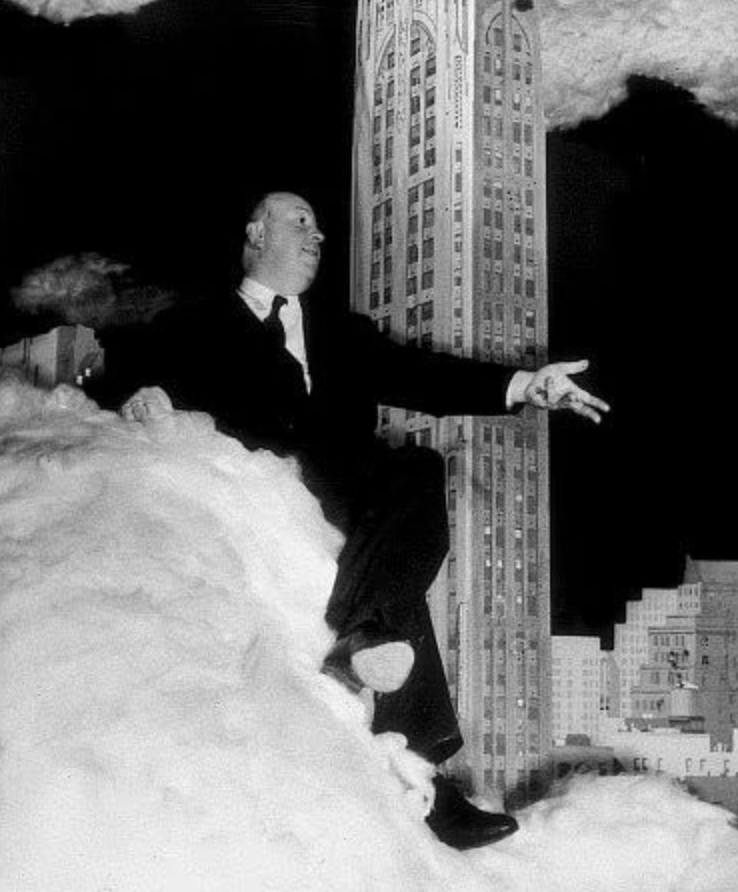
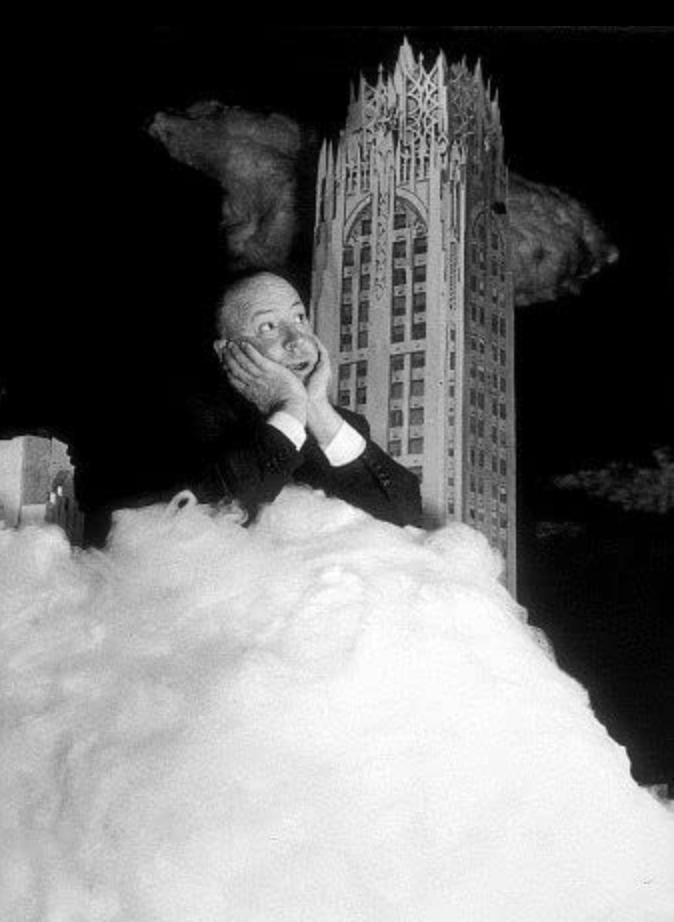
All walls and furniture were made mobile so they could be rolled out of the way of the big Technicolor camera as it moved through doorways, taking in new perspectives of the action and entered apparently confined spaces.
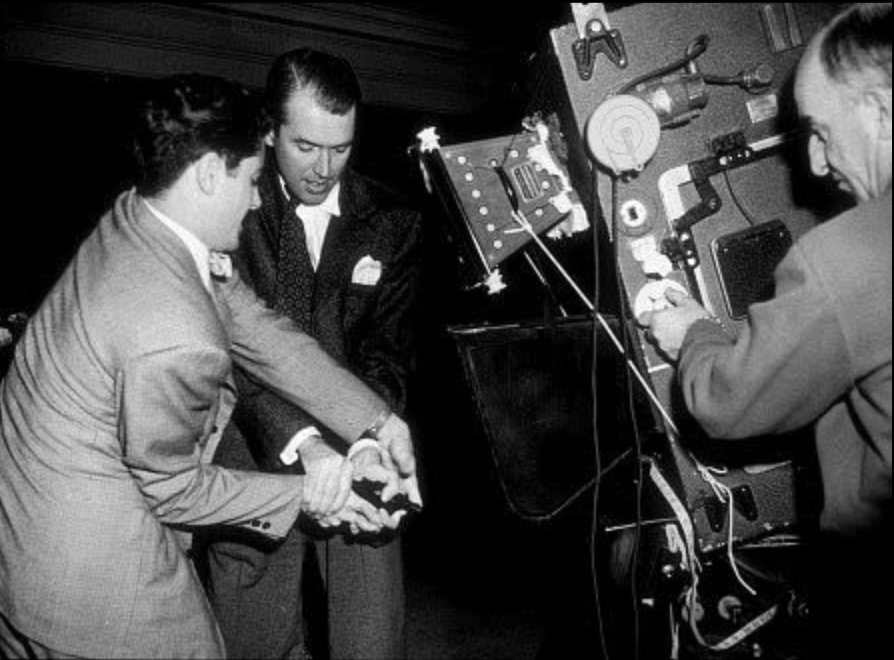
Rope is comprised of eleven such moving camera shots. The shortest is just under four minutes, the rest over nine minutes in length. The camera’s magazine contained barely ten minutes of film. Hitchcock designed these shots to be invisibly joined by “body wipes”. At the end of a long take, an actor would cross the foreground close to camera, or the camera would cross behind the actor – wiping the screen to a blur for a second. The camera would cut. The next chunk of the script would be blocked and rehearsed. The camera would roll again from exactly the same framing. The actor would repeat his cross past camera, which would then pan or dolly with him to a new perspective of the penthouse, as the scene continued without skipping a beat. The transitions between reels were accomplished by Hitchcock, buttoning a moment by homing in on an ornament or piece of furniture to end one reel, then starting the next reel with exactly the same shot, before the camera moves to the actors continuing the drama. If the projectionist handled the reel changes with precision, the illusion of an 80 minute unbroken shot was maintained, as it was when the PCA screened the completed film. They were not going to tamper with such a technical achievement. Rope received a PCA seal. However, once the media pointed out the similarities to the Leopold and Loeb murder, there was a backlash at the municipal level. The City of Chicago, where the murder had taken place, shut down the film because it was “ not wholesome entertainment”. When Warner Brothers appealed the ban, the city relented and allowed exhibition “to adults only” which worked to boost rather than diminish attendance. There were similar closures in Atlanta, Memphis, Spokane, and Seattle. Rope was banned outright in France, Italy and Holland. Hitchcock shot the movie in 18 days, including reshoots due to lighting discrepancies as the daylight transitioned to night. On its $1.5M budget backed by a 450K publicity campaign, Rope turned a modest profit. But contrary to Hitchcock’s expectations, the film’s single shot technique robbed the audience of the range of close ups such a drama needed and so diminished emotional engagement with the characters.
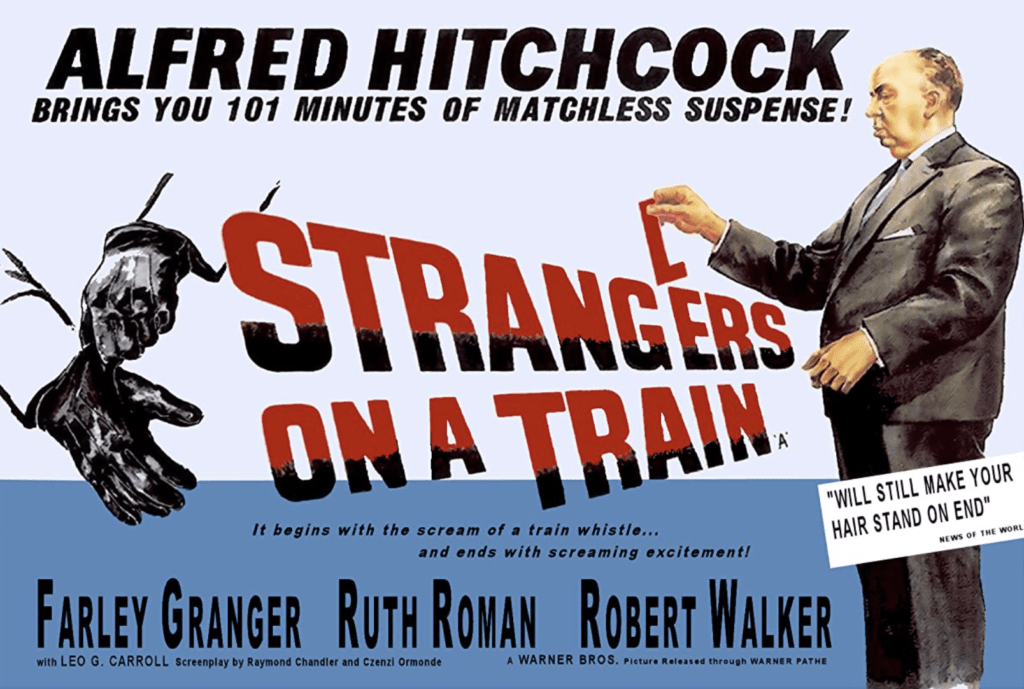
Hitchock’s next attempt to slide a homosexual character past the PCA was in his adaptation of Patricia Highsmith’s first novel Strangers on a Train. Her dark and ingenious plot has two strangers starting a conversation on a train, in which each reveals frustration about a troubled relationship. Successful tennis player and aspiring political hopeful Guy (Farley Granger again) has an unfaithful wife who won’t give him a divorce. Bruno (Robert Walker), a psychopathic momma’s boy, would love his father to die. Bruno proposes they swap murders. In that way, each of them would have an alibi. Guy dismisses it as a joke, but Bruno goes ahead and strangles Guy’s adulterous wife. The iconic shot featuring her fallen glasses, passed by the PCA, was cut by the State of Maryland for excessive violence. Municipal censors were still flexing their muscles.
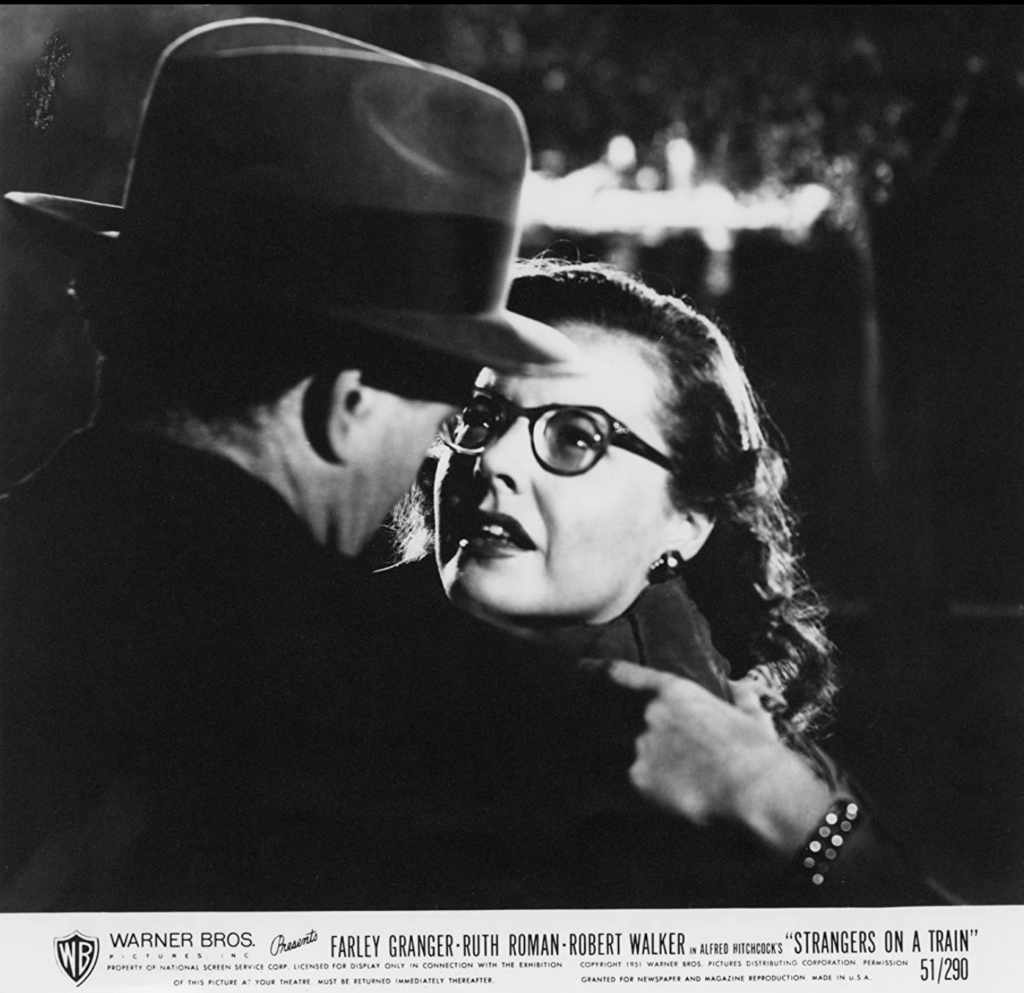
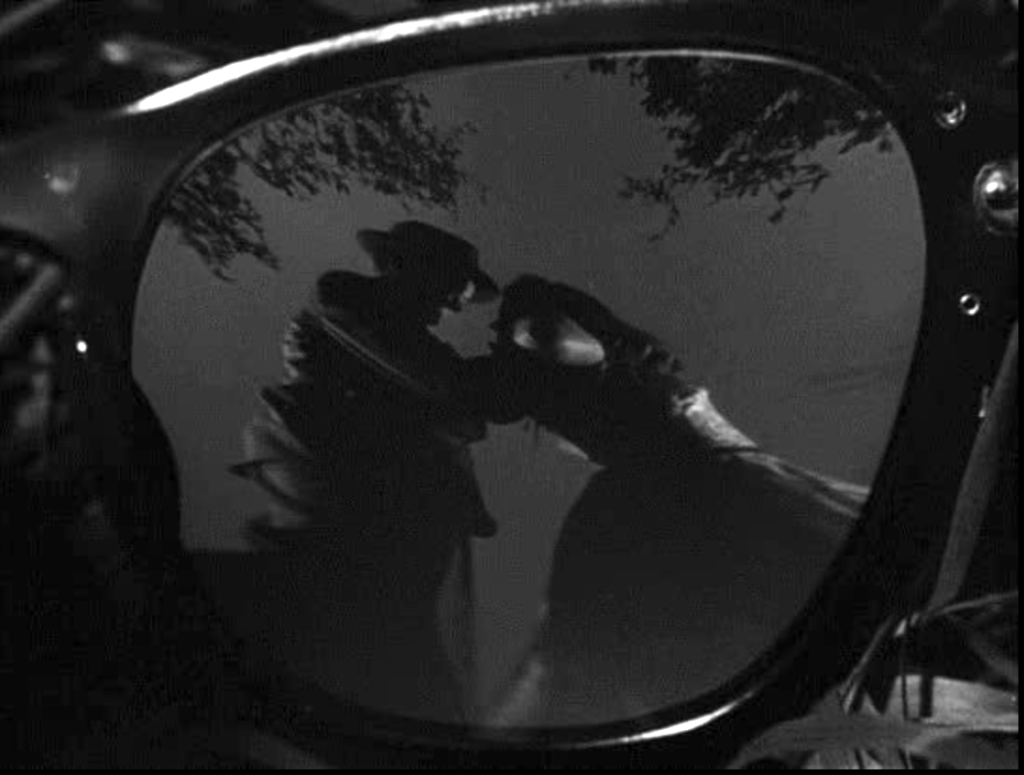
Bruno then blackmails Guy into fulfilling his side of the perceived bargain. Guy ultimately gets away with this murder, one of many boundary-pushing elements in the novel that Hitchcock knew would be prohibited by the PCA. So, in the script submitted, Hitchcock eliminated the second murder, maintaining Guy’s moral compass. The hero exposes the villain and defeats him mano-a-mano. The PCA nonetheless objected to the cynical attitude in dialogue to marriage, divorce and murder, in particular the concept that there is latent murder in all of us. Hitchcock was pleased that Breen and his examiners failed to detect the hints of Bruno’s homoerotic fascination with Guy. Hitchcock biographer Donald Spoto characterized their screen relationship as “a homosexual courtship.”
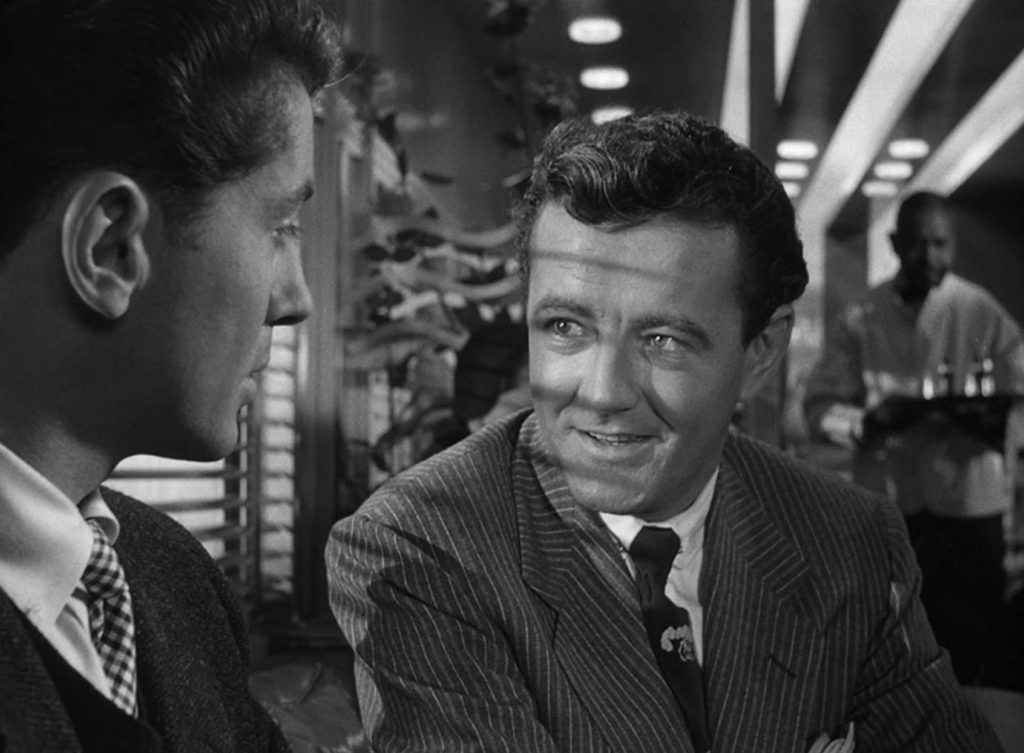
Gay code – Bruno speaks French, is mother fixated, and wears flamboyant clothing – went unnoticed. So oblivious were the PCA, that they even requested the deletion of a line from Bruno’s mother that would have suggested Bruno was straight; Bruno was “ going to spend the weekend with some girl”. A mother’s lack of concern over her adult son having sex before marriage was what caught their eye.
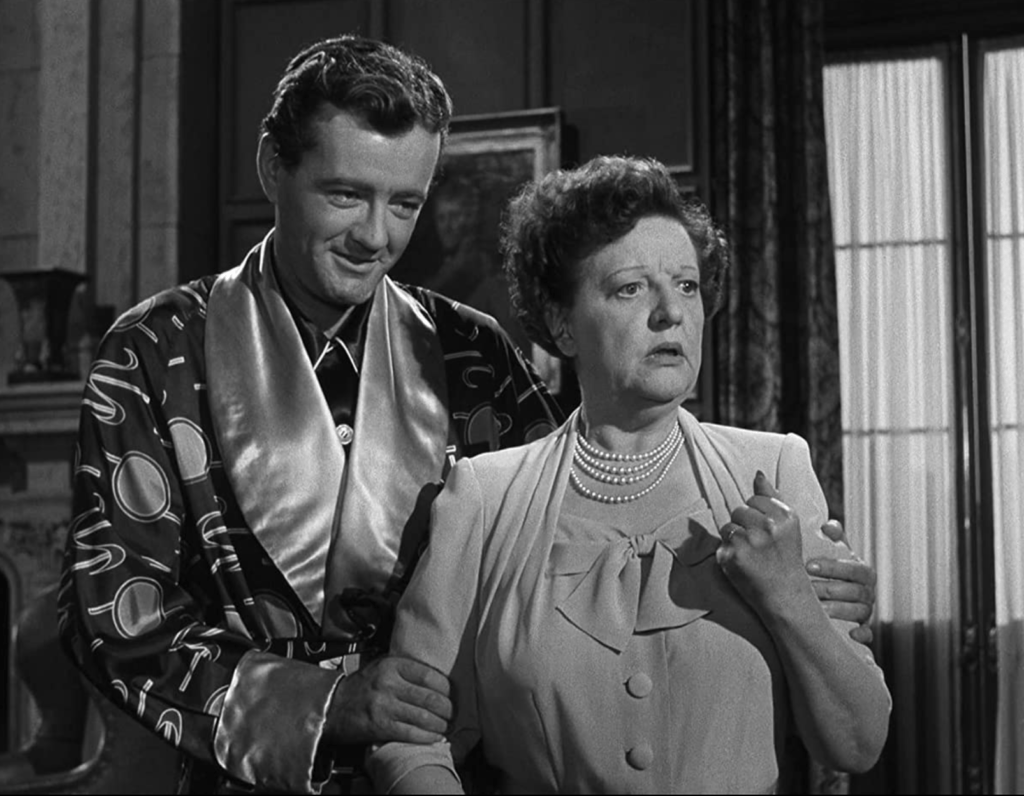
Hitchcock told Robert Walker (straight) to play Bruno with homoerotic subtext, and told Farley Granger (gay) to play a straight man oblivious to these undertones. The chemistry worked. As with Rope, the subtext was evident only to the discerning at the time. But over subsequent re-releases, Robert Walker’s subtle performance would be seen as the first clearly homosexual character in a 1950 American movi.. Hitchcock’s skill in building suspense and the rousing climax on the runaway merry-go-round made Strangers on a Train a solid hit, returning $1.8M on a $1.2M budget. It strengthened Hitchcock’s clout in Hollywood and his on-going challenges to PCA restrictions.
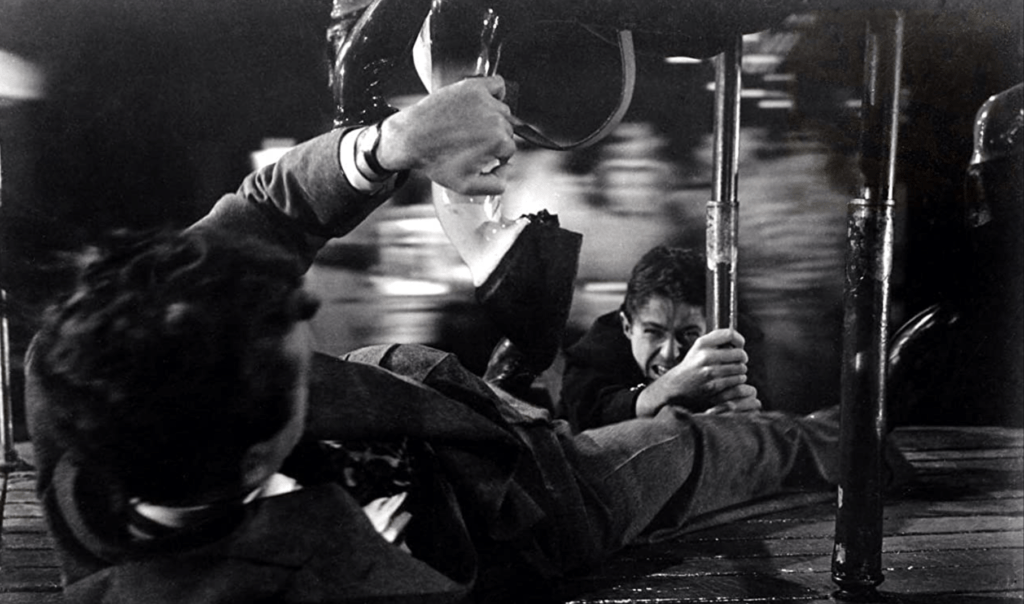
Strangers on a Train did have credibility issues. But it was bravura sequences like this that allowed Hitchcock’s audience to ignore plot flaws in his thrillers. Visuals took priority over script rigor. Hitchcock knew what the audience wanted from his films. A prime example of his expertise in mixing a good genre cocktail was North By Northwest.
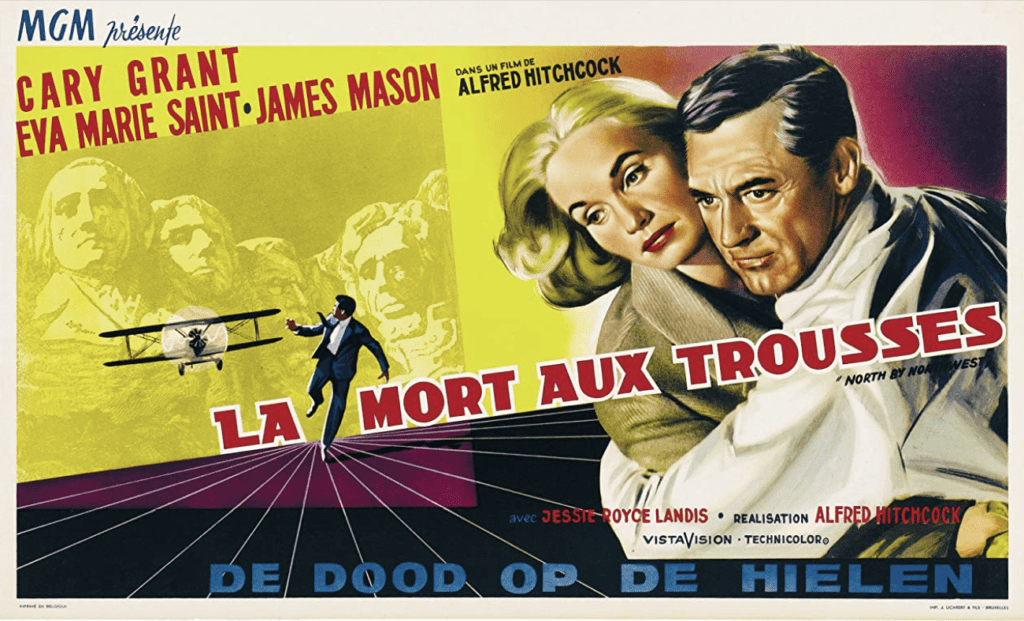
The French/Netherlands poster for North By Northwest reflects foreign markets’ difficulty with the Hamlet reference in the title. Hitchcock expected some issue with the racy dialogue he had asked Earnest Lehman to write for stars Cary Grant and Eva Marie Saint, but his first serious problem was not with the Production Code Administration, it was with the Department of the Interior who had jurisdiction over Mount Rushmore, the location of the movie’s climax and
refused permission to shoot there. So Hitchcock sent a still photographer to shoot a variety of angles of the iconic monument to be used as back projections, in conjunction with replica sections built in the studio. The DOI, ever protective of the image of the Founding Fathers, got wind of Hitchcock’s plans to have actors clambering over their faces, and (OMG!) the hero hiding in Lincoln’s nose, who gives away his location in a sneezing fit. (HFS!) This gag was at the core of Hitchcock’s choice of Mt. Rushmore as the location for the climax. At one point the production’s working title was The Man in Lincoln’s Nose. DOI warned Hitchcock they would seek to block release of the film if it showed such desecration of a National Monument. MGM was not inclined to argue with the Department of the Interior. So Hitchcock sent a still photographer to shoot a variety of angles of the iconic monument to be used as back projections, in conjunction with replica sections built in the studio. Hitchcock staged the chase using the President’s faces only as backgrounds to the main action.
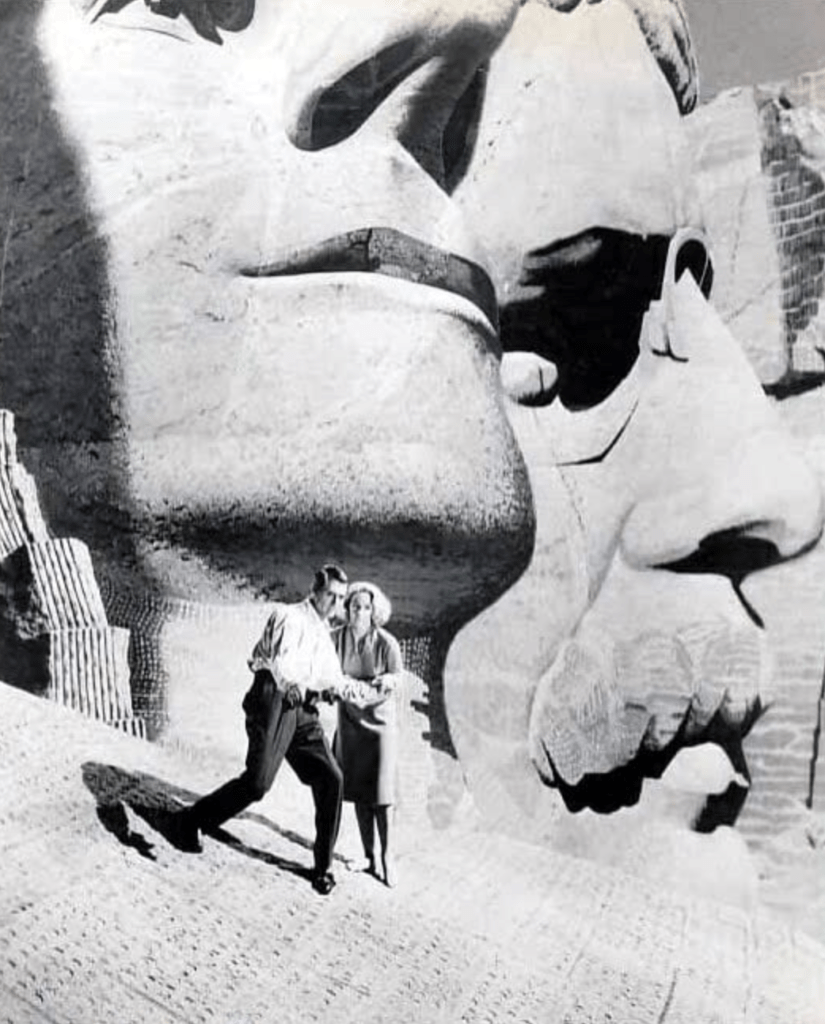
As for the racy dialogue and the “promiscuous heroine”, Hitchcock negotiated with consummate skill. It helped that the film had a light hearted tone, and the protagonists had such charm. Hitchcock argued that the immorality of Eva Marie Saint’s character’s was ordered by the unnamed counterspy agency she worked for, and therefore did not contradict the prohibition against unpunished immorality. Sex for Uncle Sam gets a pass.
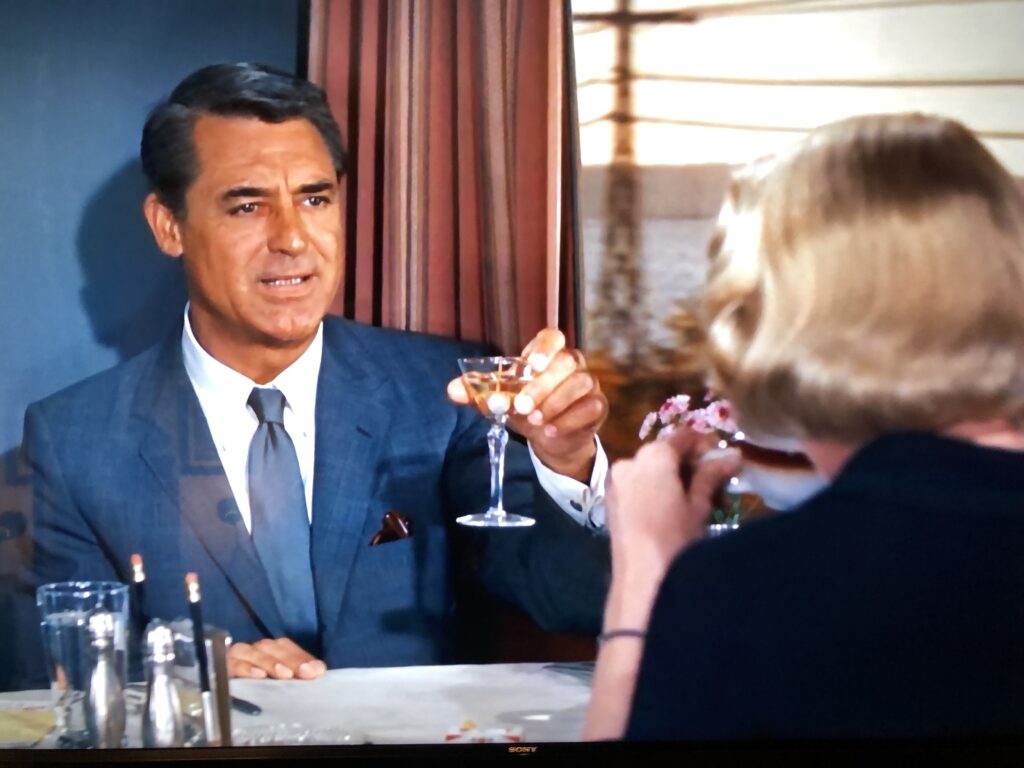
In the dining car scene, between fugitive Cary Grant and the mysterious blonde he meets on the train, Eva Marie Saint, she states with a seductive smile “I never make love on an empty stomach.” At the insistence of the PCA, the line was re-dubbed as: “ I never discuss love on an empty stomach.”
Only film editors notice a slight discrepancy between the words her lips are forming with the words you hear. This line, like many racy quips in his screenplays, had been red-flagged by the PCA when the script had been submitted, but Hitchcock shot it anyway. According to Hitchcock biographer Patrick McGilligan “the director bucked the code with exceptional tenacity in the American phase of his career, pushing the boundaries of sex and violence in his films. And he usually did so deviously, rather than by direct confrontation, stalling , surrendering by degrees, swapping one cherished transgression for another.”
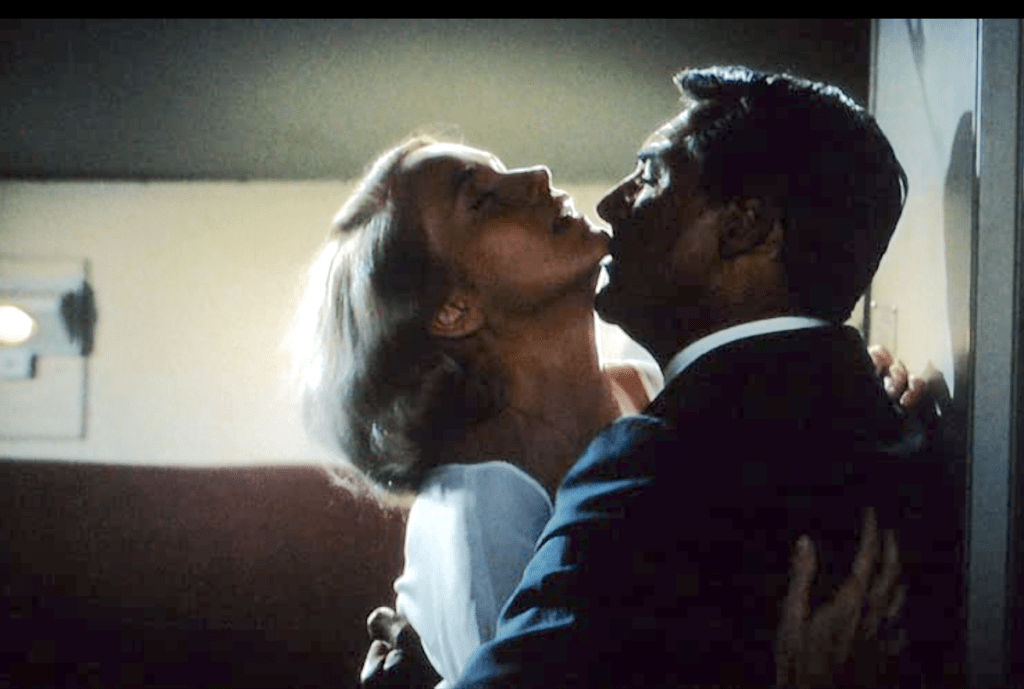
In this case, he traded the dubbed line for the later implication that intimacy had taken place the night before, a scene played by Grant and Saint as if basking in post-coital bliss even though they are fully clothed. Over a decade after Notorious, lips are locked for a full sixteen seconds at one point. This was acceptable because, as requested, the actors remained “attired in their day clothes”. Hitchcock enjoyed his tussles with the PCA which he likened to “the thrill of competitive horse trading.” It helped that a more enlightened examiner Geoffrey Shurlock had taken over after Joseph Breen retired through ill health. Much like the long-term Secretary of the BBFC John Trevelyan, he was more lenient to directors he admired.

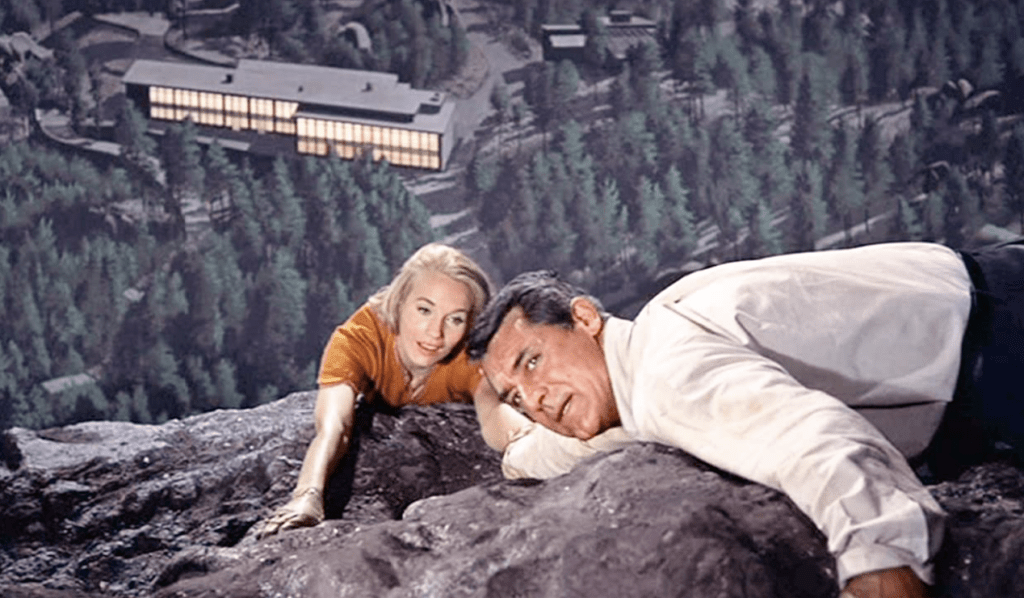 In a classic Hitchcock cut, Eva Marie Saint, dangling from Mount Rushmore by Cary Grant’s hand is then hauled into the sleeping compartment of the train on which they first met. This was accompanied by the overdubbed line “Come along, Mrs. Thornhill” to assure America that what the couple was about to do was sanctioned by marriage.
In a classic Hitchcock cut, Eva Marie Saint, dangling from Mount Rushmore by Cary Grant’s hand is then hauled into the sleeping compartment of the train on which they first met. This was accompanied by the overdubbed line “Come along, Mrs. Thornhill” to assure America that what the couple was about to do was sanctioned by marriage.

The line had been suggested by Geoffrey Shurlock, who also recommended that the angle between the now married couple never dipped below the regulation 45 degree angle, as they relaxed back onto the bunk. So Hitchcock cut the shot at that point, before the lovers became fully horizontal as publicity shots of the scene indicate. With the negotiated adjustments made, the PCA gave North By Northwest its seal of approval. But Hitchcock had one more card to play, a covert chuckle for the cognoscenti. In the shooting script, the next and final shot of the
movie was described “ towards the back of the observation car as the train rolls off into the night.”

In March 1959, with a premiere date of July 1st looming, Hitchcock sketched what he wanted to see in the frame, and sent a pick-up crew to get a replacement shot, one of the train plunging into a tunnel.
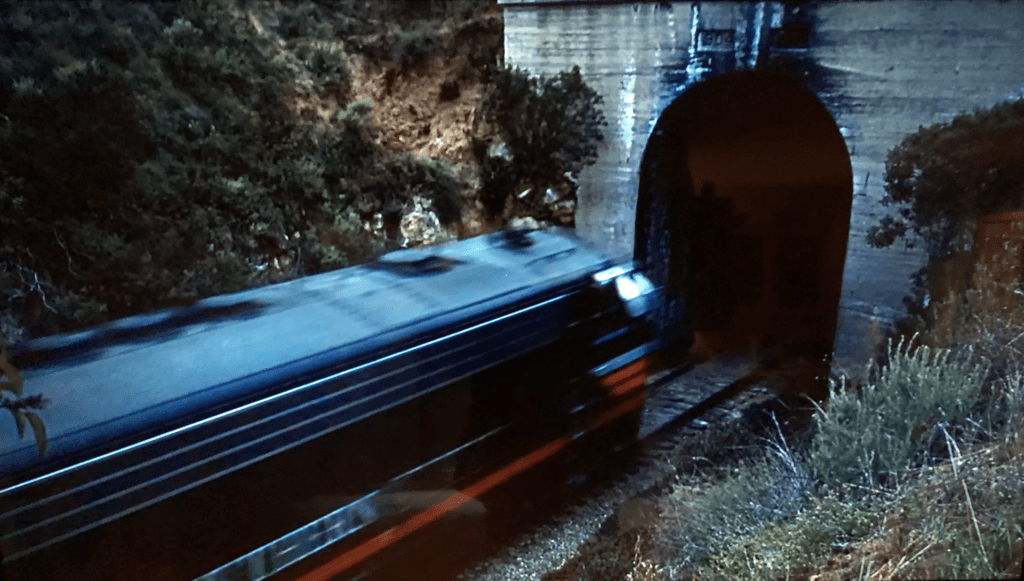
Thus Alfred Hitchcock achieved metaphorically the most explicit depiction of the sexual act ever pulled off under the Production Code.
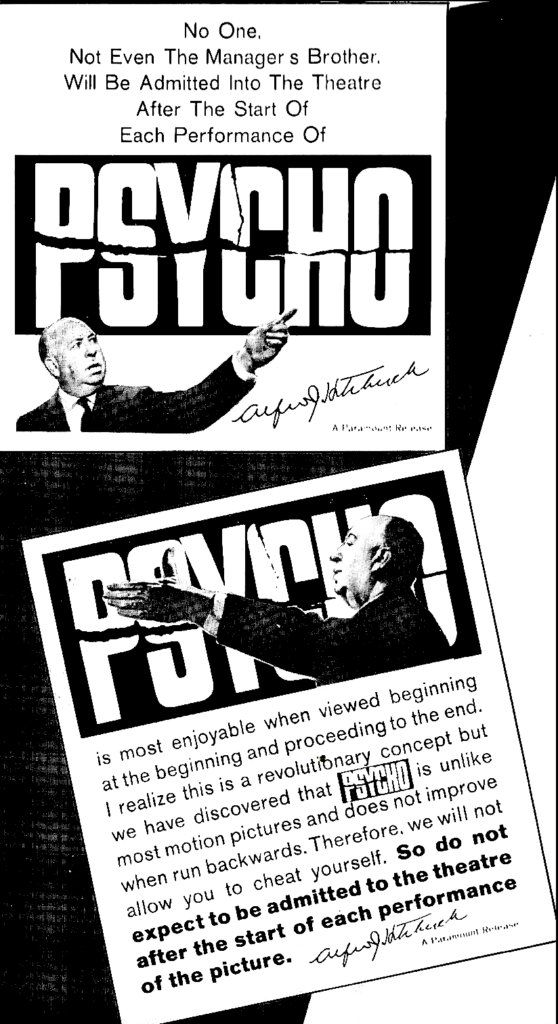
The sardonic humor of Hitchcock’s publicity gimmick for his next picture reflects his increased confidence in operating outside the box. During post-production for North by Northwest, Hitchcock ordered several reshoots and pick-up shots, which caused studio chief Sol Siegel to barrage him with memos to stop expanding the budget, which had climbed 25% to $4.3M. Siegel thought the picture too long. The 130 minute running time meant theaters could lose one session per day, resulting in reduced box office. He took the matter to the MGM board who happily sided with Hitchcock. North By Northwest, took $6M in US rentals, and strong international grosses, his biggest hit in years, solidified Hitchcock’s Hollywood clout. He had the power to make any film he chose.
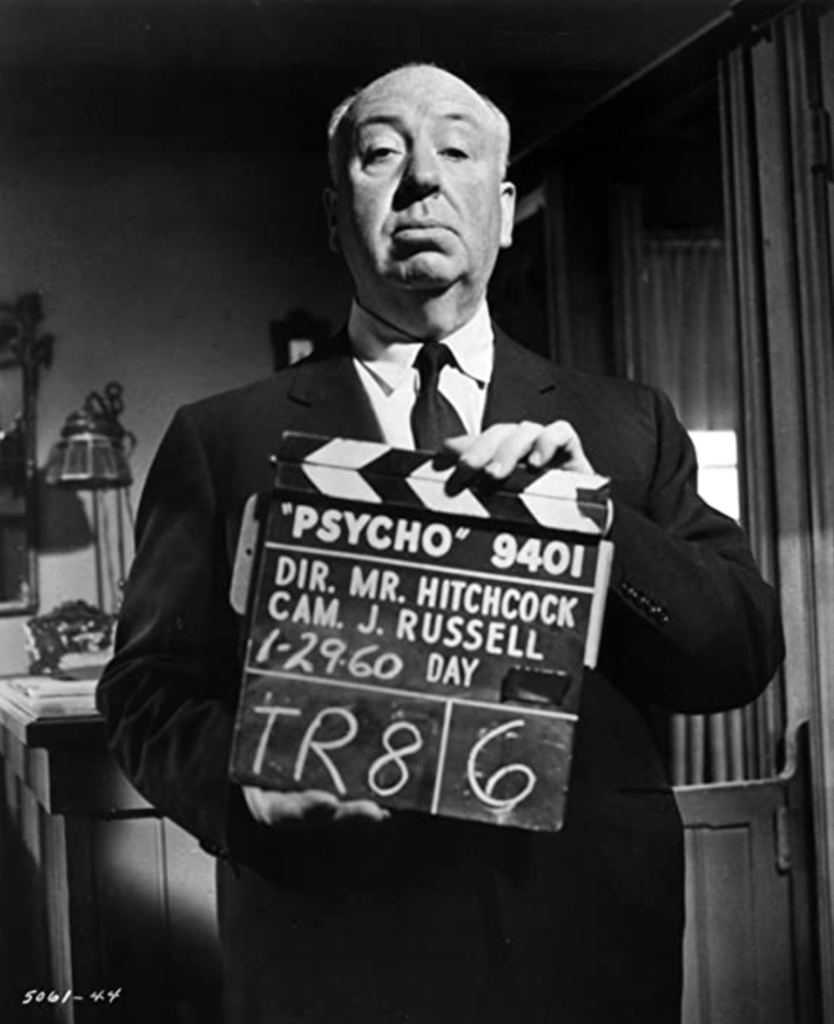
The reason he chose Psycho, in my view, was that it was the perfect vehicle to challenge the PCA’s restrictions on a number of issues. He could make it inexpensively ($800,000) in black and white, using the crew of his hit TV show The Alfred Hitchcock Hour. The script of Psycho was a minefield of Code taboos: immoral behavior, insanity, sexuality, voyeurism, transvestism, matricide, plus graphic murders with a big knife, all areas of fascination for Hitchcock, who
sensed the time was right to push the envelope on violent death. But he knew bright red blood would spook the PCA, hence his decision to shoot in black and white as well as its cost saving. He had developed a good relationship with Geoffrey Shurlock, a more sophisticated man than his predecessor and a genuine film lover. I suspect he was privately amused at the way Hitchcock snuck a sexually suggestive image into North By Northwest. Hitch had confidence he could get his expressionistic treatment of the shower murder and opening semi-clothed adulterous love scene through the PCA, with minimal nips and tucks.
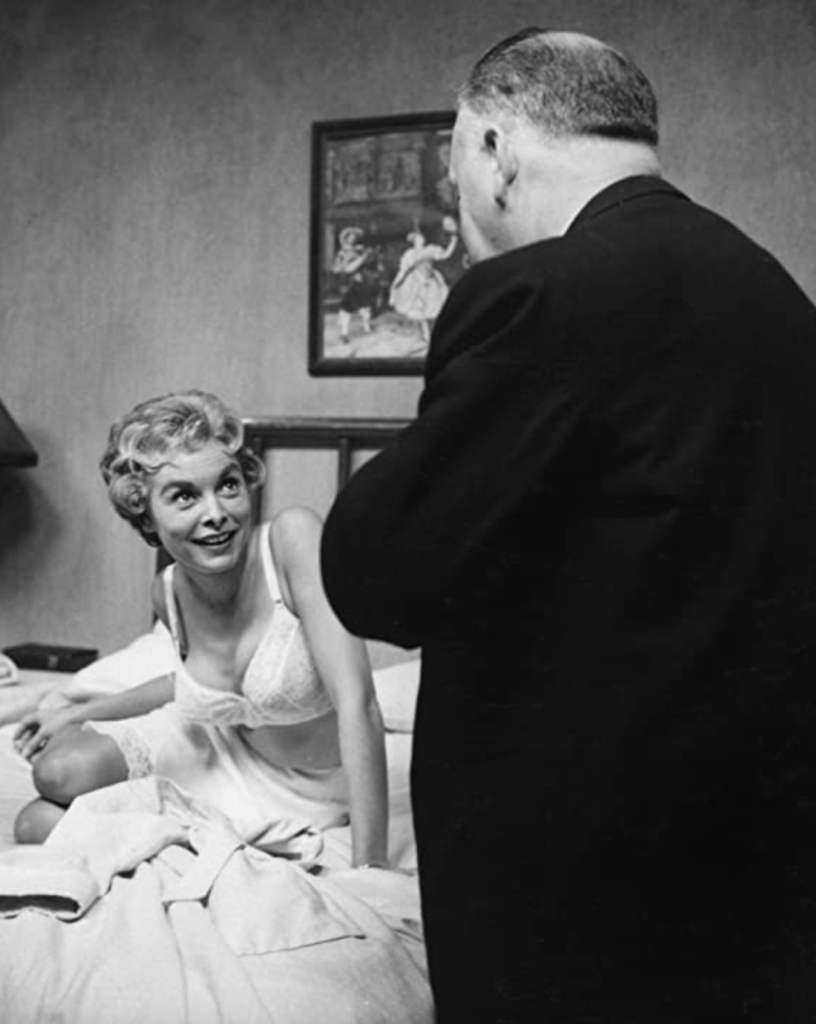
In an interview Janet Leigh recalled: “ He told me how all along he planned to manipulate the censors by deliberately putting in things so bizarre he could come back to them and say ‘tsk ‘tsk, alright, I’ll take that out but you’ve got to give me this.” He shot profanity (three ‘damns’, two ‘hells’, and an irreverent ‘God’) and some suggestive dialogue that had been flagged in script review so he could make a show of removing it as a concession. His masterful navigation of Psycho’s censorship process is laid out in detail in the afore mentioned John Billheimer book Hitchcock and the Censors so I will just hit on the points that impressed me.
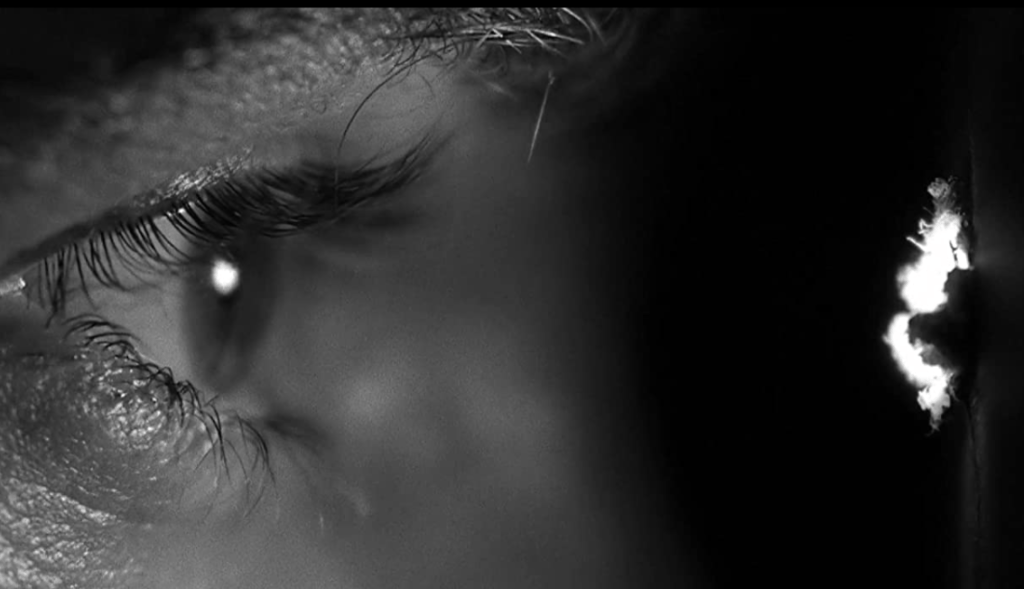
His handling of Norman Bates’ voyeurism, regarded as sexual perversion under the Code, was a classic bait and switch move. When Janet Leigh removes her bra viewed through a peephole by Norman Bates. The intention was to shock the examiner with a clear violation, make the nudity the focus of his attention, rather than the eye of the peeper.
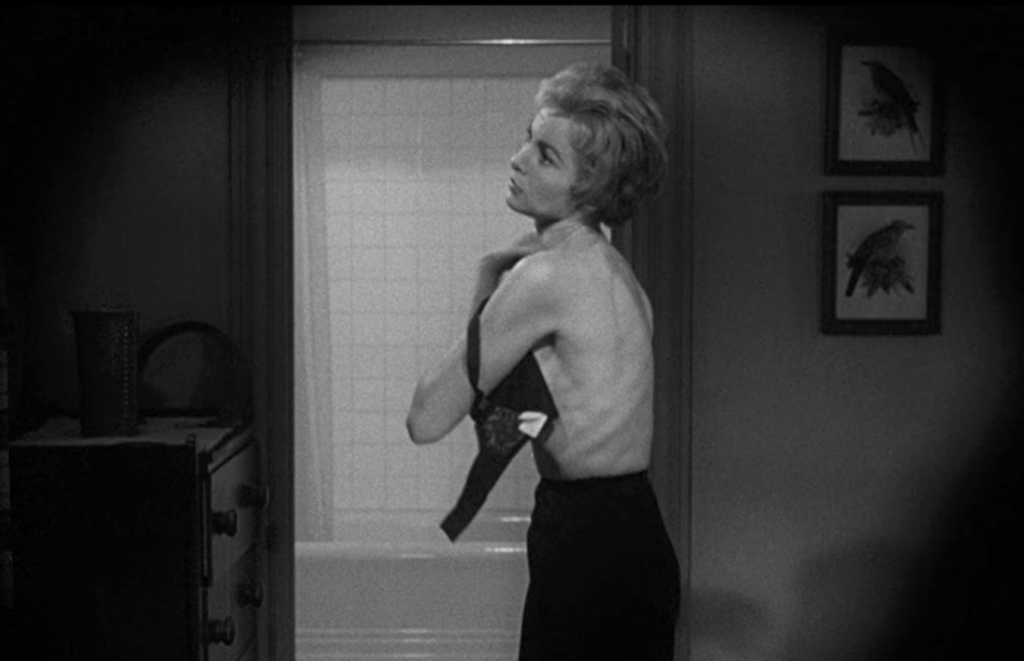
After earnest pleas, Hitchcock made the great concession to replace the offending shot with one in which she walks to the shower, having put on her robe, a cover shot he already had in his back pocket. The distracted examiners ignored the extreme close ups of Norman’s eye, which offered the audience their own voyeuristic experience: to imagine what Norman Bates saw through the peephole between the time Marion Crane was in her bra and half slip (1st. POV) and
the time (2nd POV) in her robe.
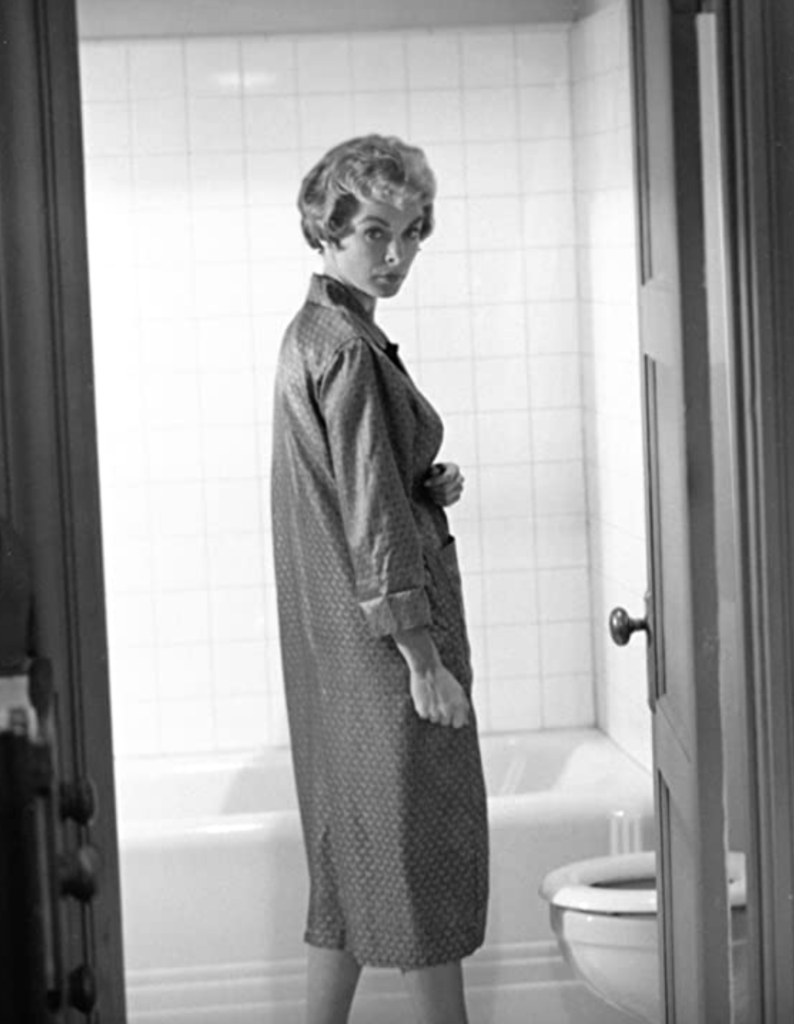
Hitchcock was also able to break the rule against showing toilets or the sound of their flushing. The Breen regime had discouraged scenes involving bathrooms, and showing a privy was absolutely verboten! Merely referring to an off screen toilet, as a “thingummy,” was forbidden in his 1938 comedy thriller The Lady Vanishes. But Robert Bloch’s book, on which the film was based, has Marion Crane spending the night in a small motel room where the sight of the toilet past the bathroom door was inevitable. Hitchcock successfully claimed the location was vital to the plot, as was the scene where Marion Crane flushes her calculations of the stolen money down the toilet. It was a sound previously unheard in American theaters. Hitchcock argued that it signaled her remorse, and the surviving scrap of paper becomes an important clue. OK, Hitch, the commode stays in the picture. No longer was there a room in the house off limits to film makers. Hitch highlighted his little triumph in his droll pre-release trailer. knowingly turning to the camera to utter the word “Bathroom”. Check it out on YouTube:
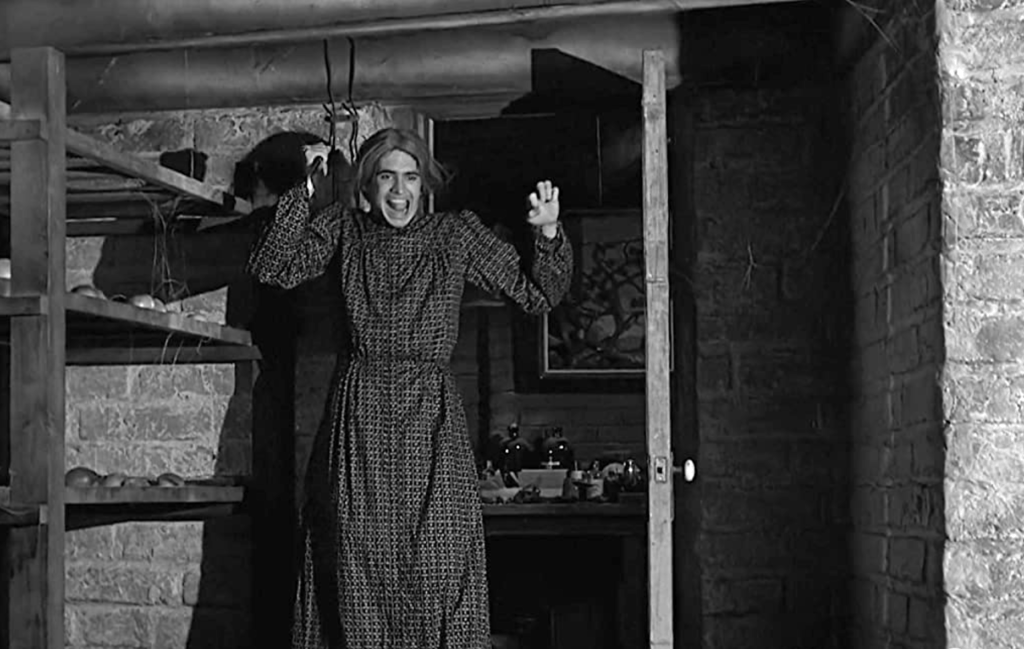
Under the rules of the previous Breen regime, no character could be a “transvestite”, nor could such a word be used in dialogue. OMG! People might ask what a transvestite was! And then what would happen…? Breen’s thinking was that by eliminating words describing perceived aberrations from popular culture, such behaviors would die out. But, Hitchcock argued, how else can we give the audience proper understanding of Norman’s behavior, wearing his mother’s clothes whenever she took over his personality, if we cannot use medical terminology? He and Stefano won the day by citing a dictionary definition of the word “transvestite” does not necessarily imply sexual deviancy. The word was allowed.
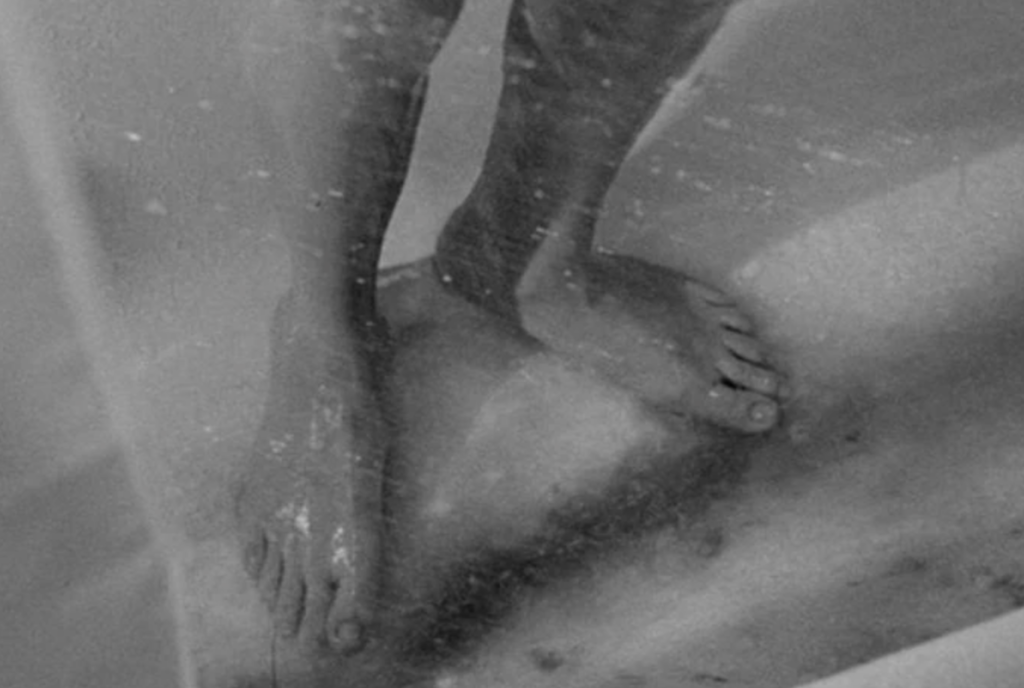
Violence was going to be his biggest challenge. This motivated his decision to shoot the movie in black and white, understanding the visceral response of both censors and public to the sight of bright red blood draining from the victim.
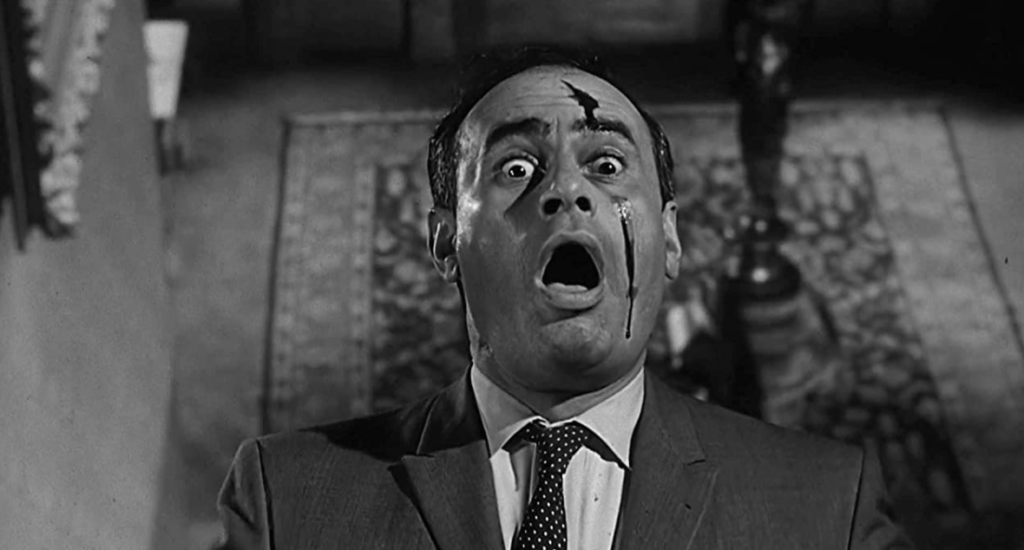
In the killing of Arbogast, Hitchcock reduced the number of stabs at the bottom of the stairs to one, protecting the slashed face at the top of the stairs.
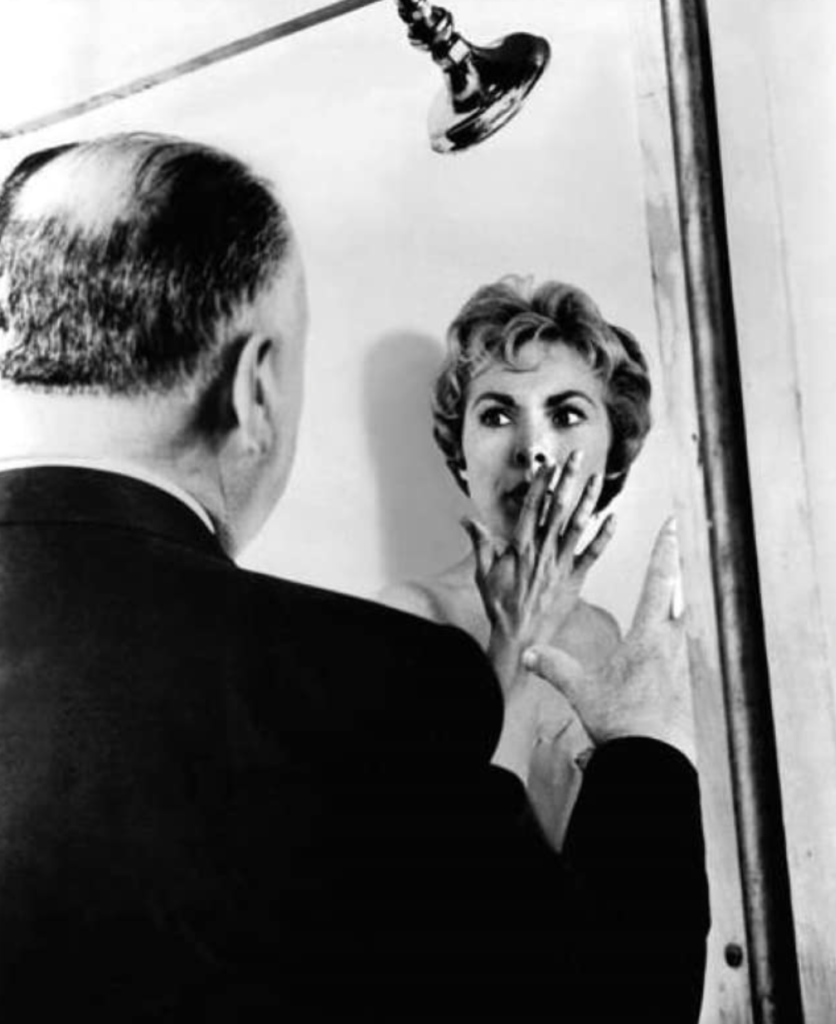
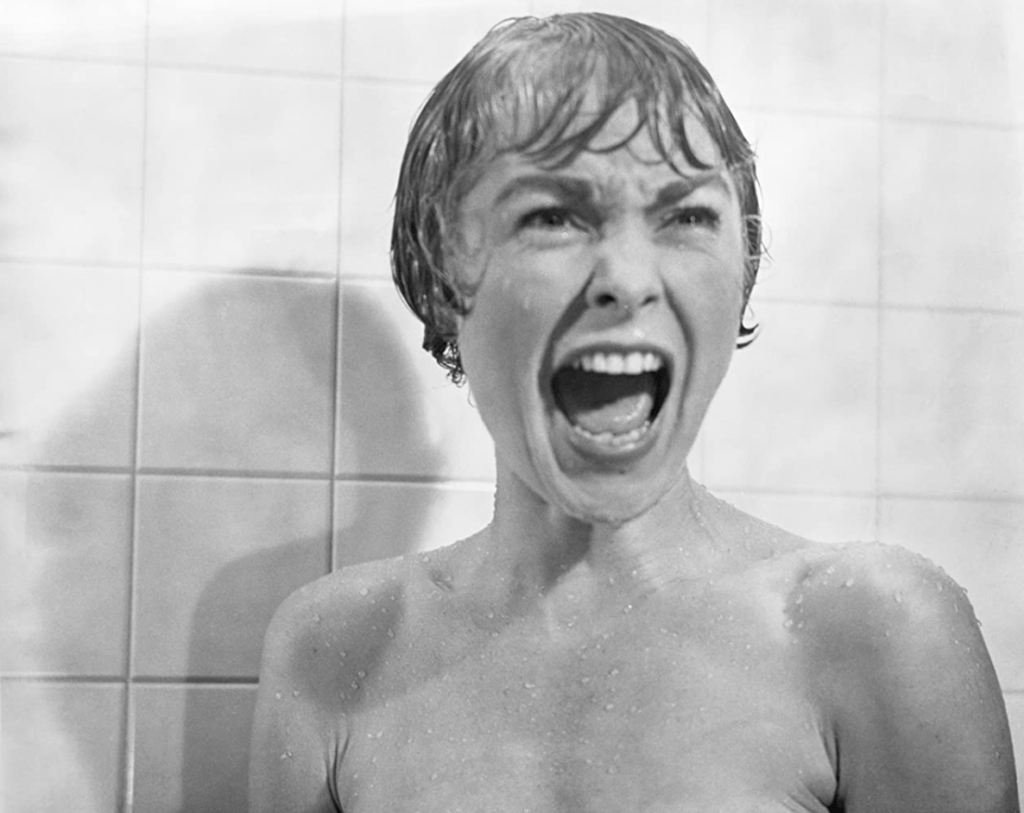
Marion Crane’s murder in the shower took Hitchcock 7 days of his 36 day schedule to shoot. The only shots of Janet Leigh were the ones that clearly showed her face. In all the other shots, she was doubled by a pin-up model Marli Renfro, whose body was a perfect match for Janet Leigh.
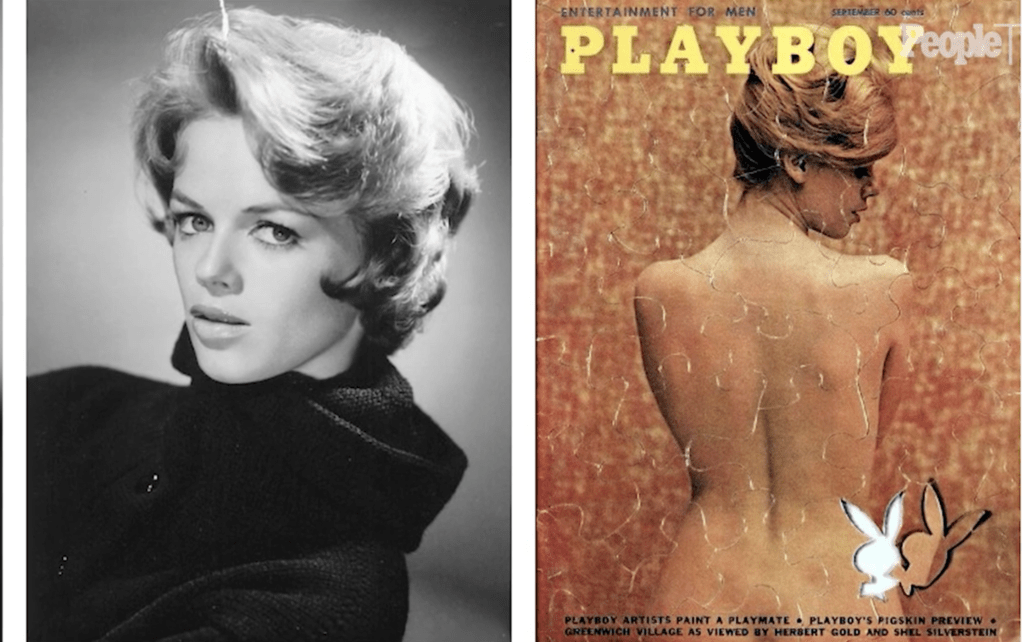
There’s an exhaustive study of the shower sequence in the documentary 78 Shots/52 Cuts, as well as in Billheimer’s book Hitchcock and the Censors. I’m not going to get into the weeds of it here. Suffice to say Hitchcock chose a daring strategy for his end game.
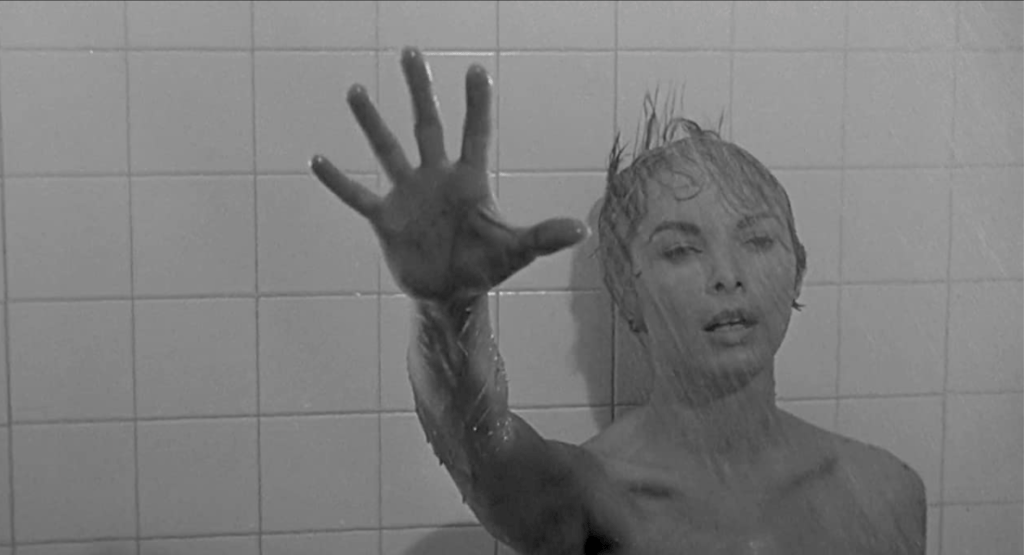
The PCA stated that the blizzard of shots, “ some impressionistic, some completely realistic of the girl’s nude body” was clearly “ in violation of the Code” which prohibits nudity “in fact or in silhouette”. Of the five examiners at the screening, three were convinced they had seen nudity, two were not. The PCA instructed Hitchcock to remove the nudity. Hitchcock promised to do his best.
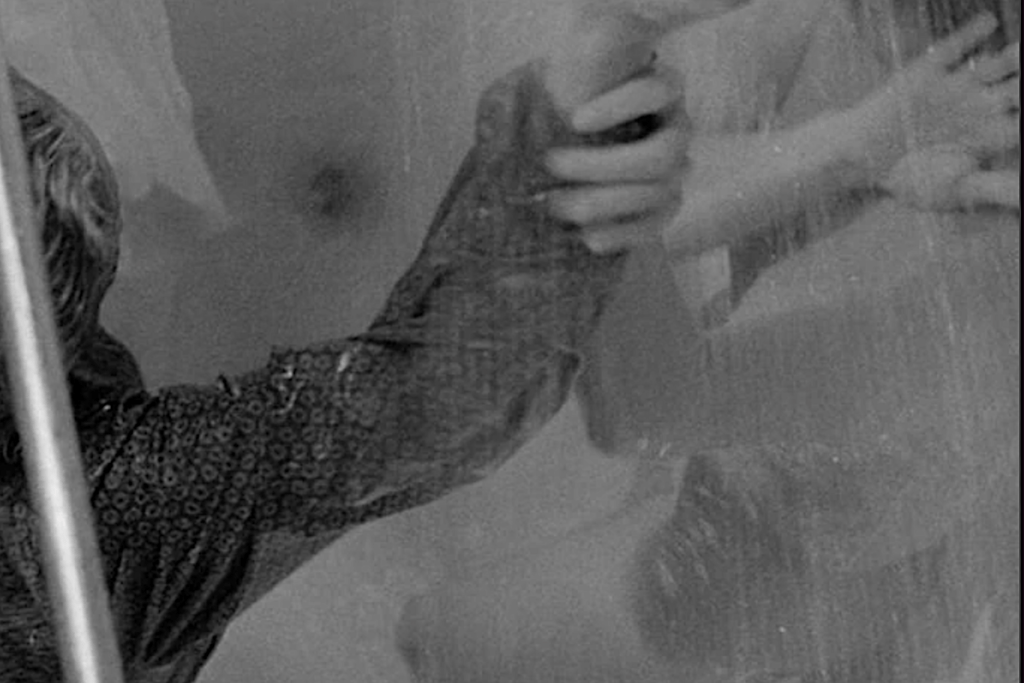
He sent the sequence back without changing a single frame. This time the two who hadn’t seen nudity now did, and the three who had seen nudity now did not. A week of debate as to who had seen what ensued.
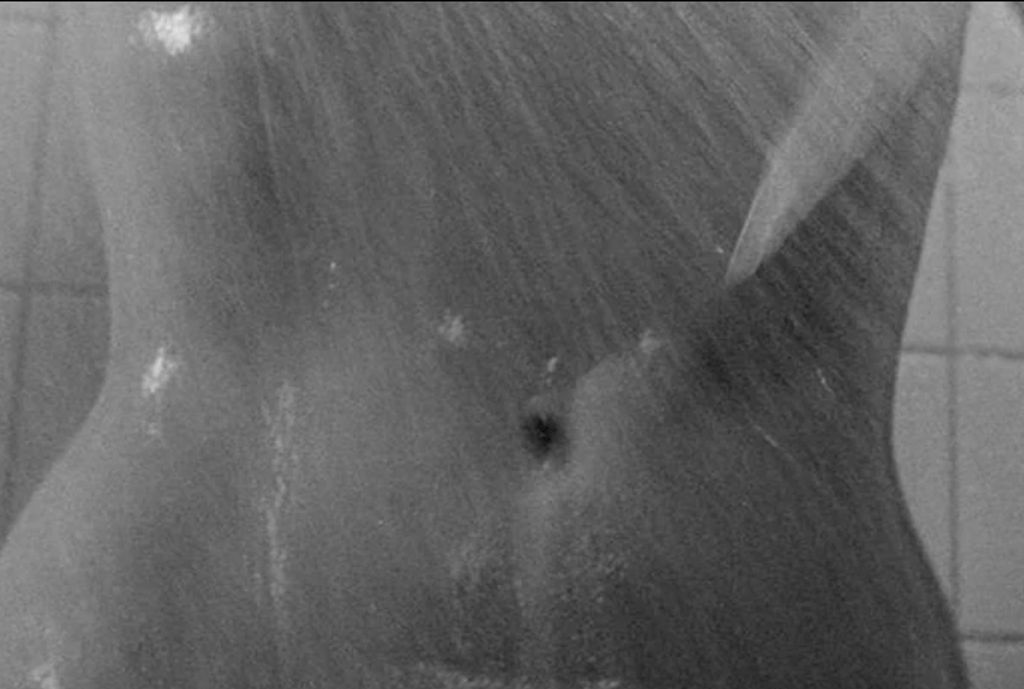
Previously belly buttons had been forbidden on screen. In order to get a PCA Seal, Beach Party movies ensured that the bottom half of their bikini-clad girls covered this provocative aspect of the female anatomy. The PCA ignored the offending belly button, in favor of focusing on “ penetration” of the body by the knife. But Hitchcock explained that the shot was created by placing the knife against the waist of Janet Leigh’s body double and jerking it back out of frame. The film was then reversed to gives the effect of a stab but, Hitchcock insisted there was no actual close up of a penetration by the knife, a violation of the human body forbidden for movie audiences to see. Yet in their imagination they saw it, as Hitchcock intended.And a precedent was set for belly buttons in close up.
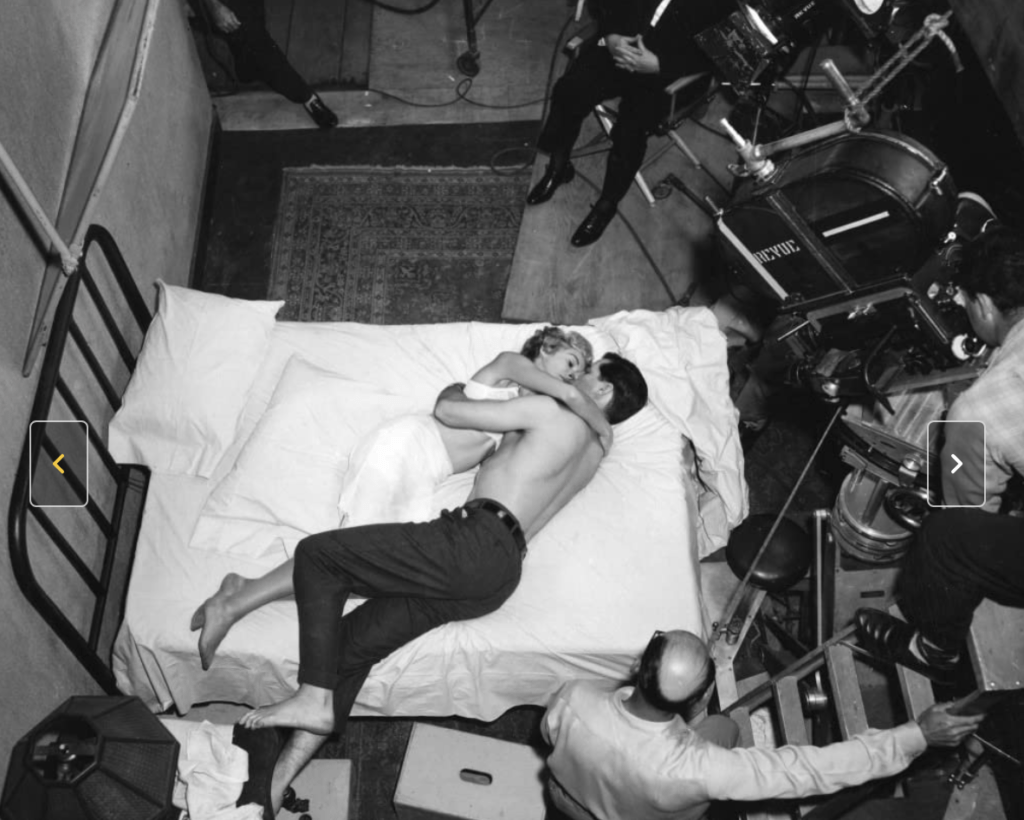
Another serious issue was the opening post-coital bedroom scene: bare chested John Gavin with Janet Leigh in bra and half-slip evidently having an adulterous affair; fully on a bed, what’s more, not with one foot still on the floor, as per traditional Breen rules. The lovers were “entirely too passionate”. The PCA wanted it re-shot with less passion and exposed skin.
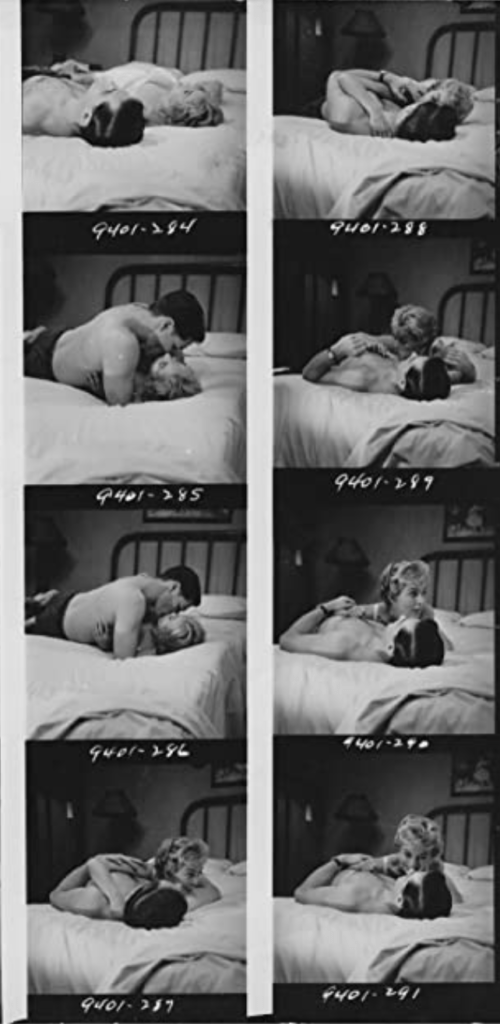
Hitchcock counter offered: he would take out all the nudity from the shower sequence if he could keep the opening sequence as is. The PCA refused. Hitchcock countered again. If the Code would allow him to keep the shower sequence as is, he would reshoot the opening scene, on condition the PCA sent a representative to the set to identify anything objectionable. This put the PCA in a potentially embarrassing bind. They chose not to send anyone to the set on the day of
the designated re-shoot. So Hitchcock kept the scene as he shot it.
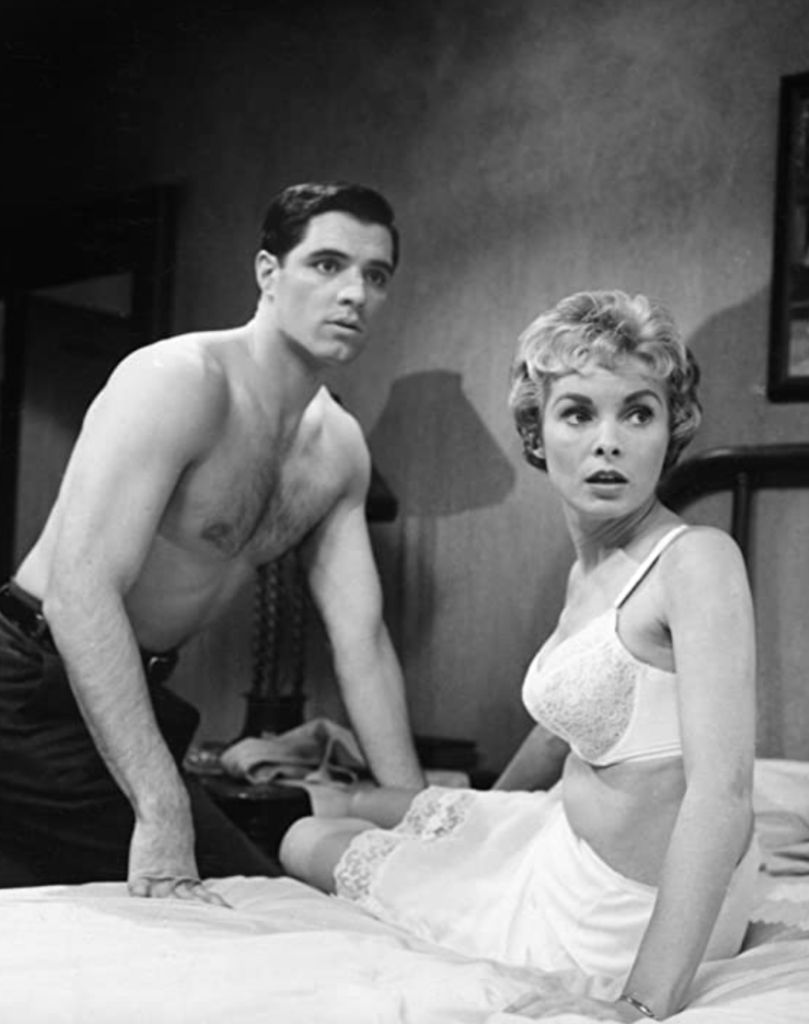
He then gave the PCA one last concession: the high wide angle of the shower after the murder. The camera craned up to the same angle as this earlier shot. It showed Janet Leigh’s double slumped across the rim of the bathtub, her bare buttocks distantly exposed.
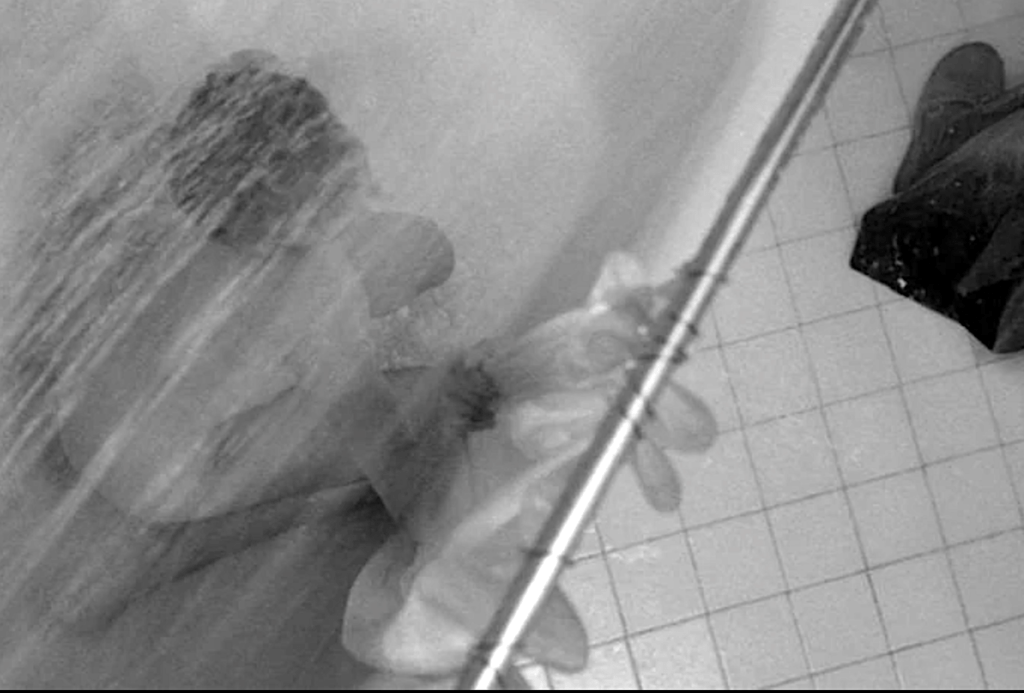
Hitch pleaded for it as an emotion charged button on the scene, emphasizing the vulnerability of the victim. But he sacrificed it to break the deadlock. Psycho got its Seal. The Legion of Decency stopped short of “C – Condemned” perhaps out of deference to its sister censor and Hitchcock’s popularity with the media. They gave it a “B- morally objectionable in part for all.”
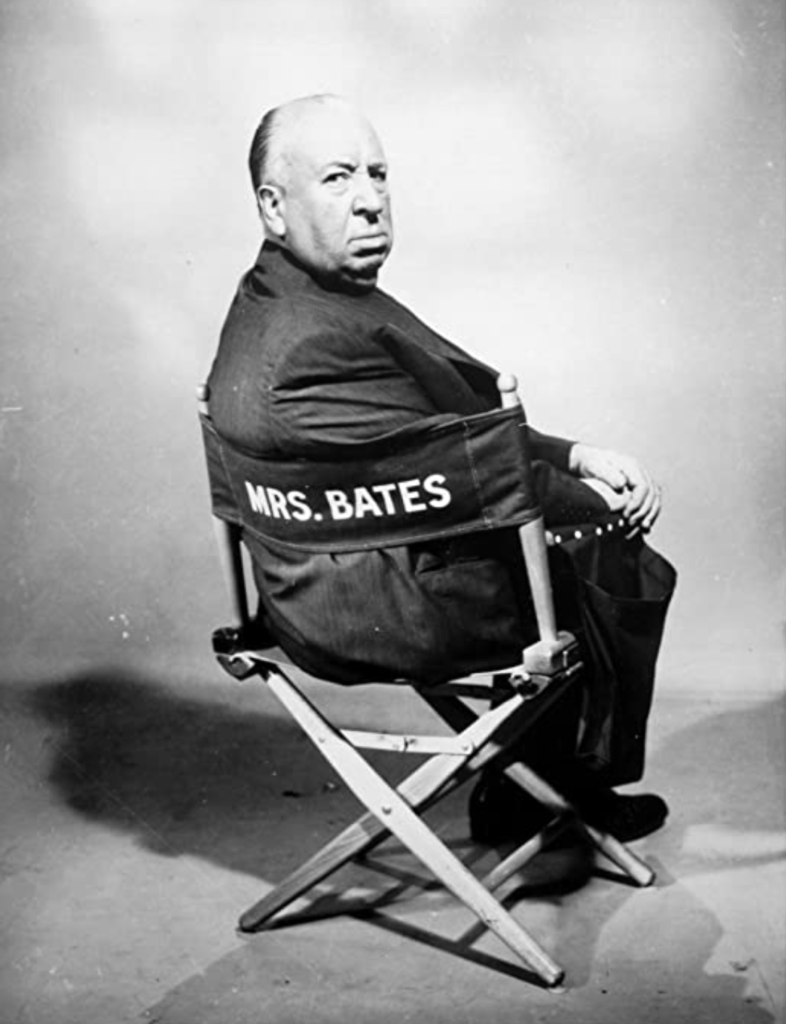
Many in Hollywood felt Hitchcock should have made another star driven comedy thriller like North by Northwest rather than a tawdry low budget serial killer movie. Paramount particularly felt Psycho would fail. And the film conflicted with the studio’s image with its new line of family friendly musicals. Hitchcock and his brilliant agent Lew Wasserman took advantage of their nervousness and offered a new deal.
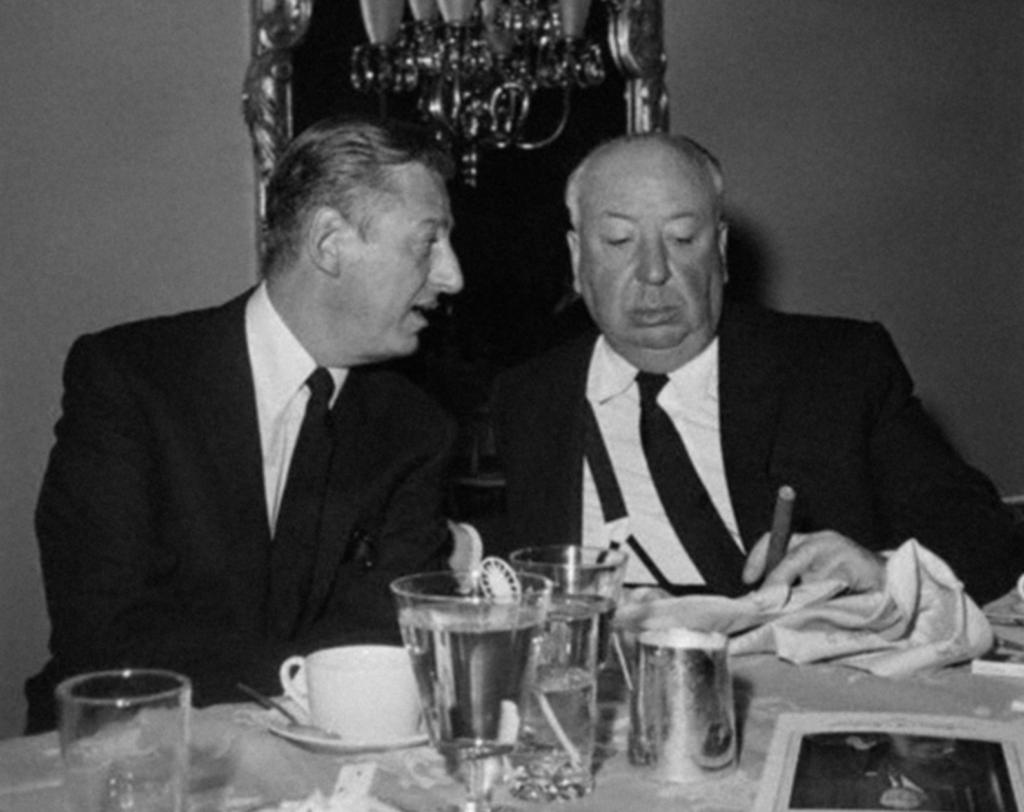
Hitchcock would take over as the producer, and be responsible for any budget overages. Paramount would remain the distributor. Hitchcock would waive his $250,000 fee in return for 60% ownership of the negative until Paramount earned a set amount of money from a guaranteed percentage of the gross. Once Paramount realized the agreed figure, then all revenue and ownership rights would revert to Hitchcock, while providing an adequate guaranteed profit for Paramount on a picture they had no confidence would be a money spinner. Hitchcock’s sense of what audiences were looking for told him otherwise. He created a novel publicity campaign to heighten intrigue, issuing instructions, in his customary dry tone, to theater owners as to how to manage his mandate that no one be admitted after the movie started.
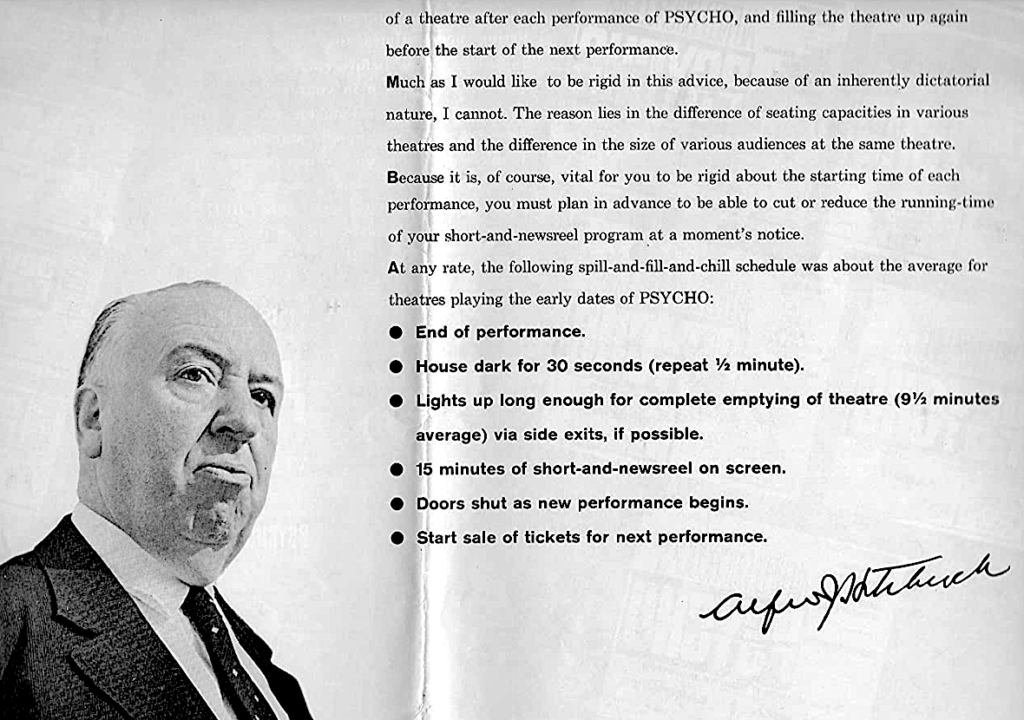
Theater owners who had been unhappy with Hitchcock’s publicity gimmick soon stopped complaining as every session filled. How much those Paramount executives must have regretted their decision to eliminate the studio’s risk when Psycho opened with queues round the block.
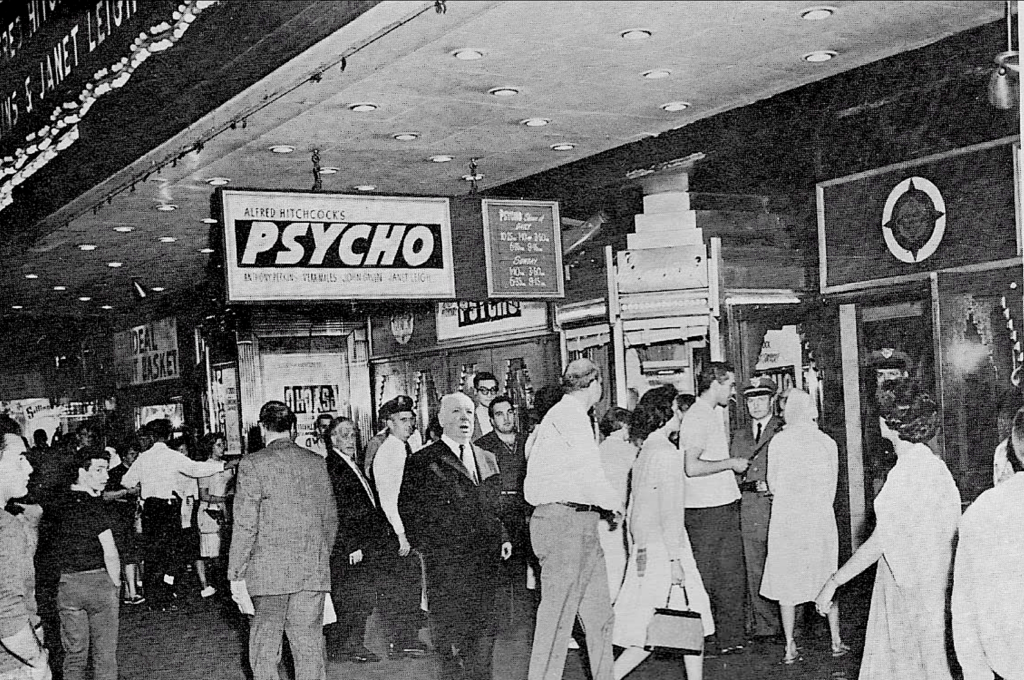
Psycho grossed $9.6M in its US initial release, earning $6M in overseas theatrical. Re-releases, home video and television sales were yet to come. Over time Hitchcock’s $800,000 movie made him millions. But Psycho gave ammunition to critics of Hitchcock’s fascination for the dark side of human behavior. Esquire magazine writer Dwight McDonald wrote of the film as “ the reflection of an unpleasant mind, a mean, sly, sadistic little mind.” Hitchcock’s subsequent biographers provide anecdotal evidence of the less attractive side of his character. But I don’t care if Hitch was not a paragon of virtue. I watch his movies enthralled by his mastery of technique, fascinated by the common thread of his obsessions.
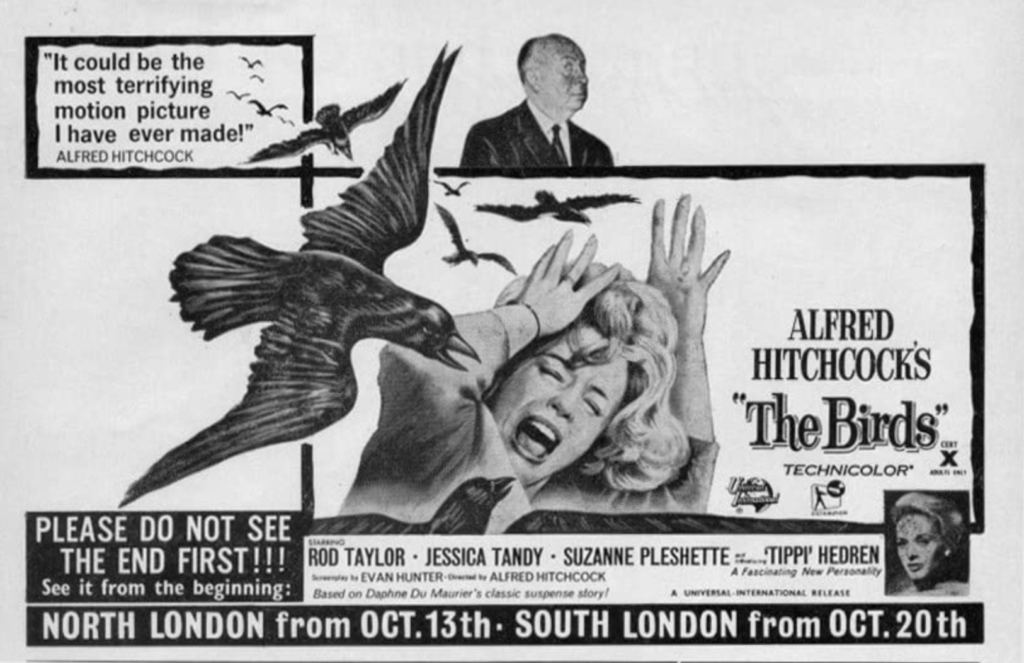
Hitchcock would echo Psycho’s publicity gimmick, but not mandate it, with his next production. The Birds would cause him no censorship problems. By 1963 Hammer’s Dracula, Frankenstein, and Werewolf remakes had made a polite level of Technicolor blood acceptable.
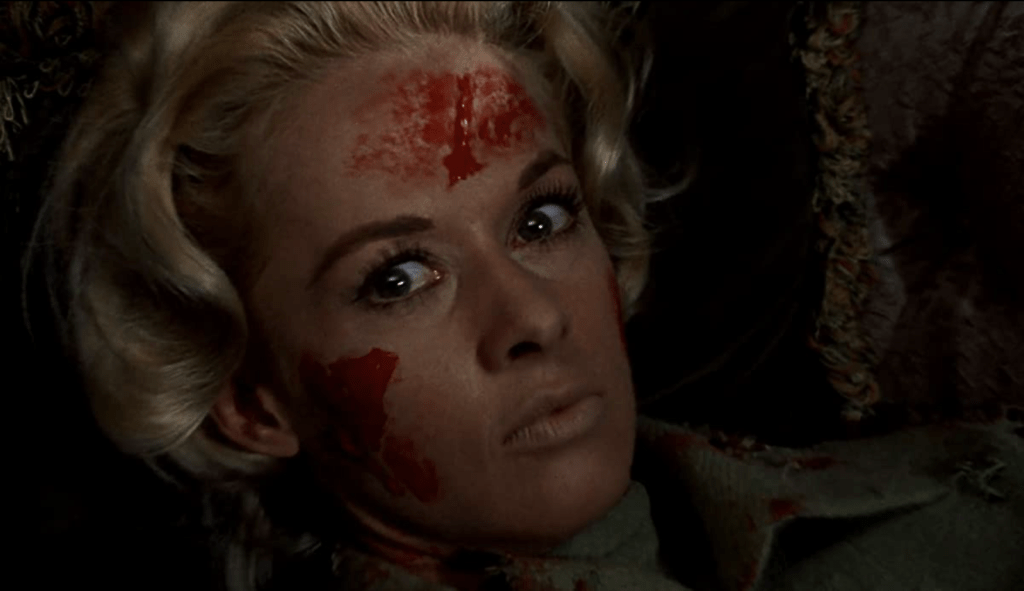
How about those jump cuts into the congealed pecked-out eye sockets? Another Hitchcock innovation in editing.
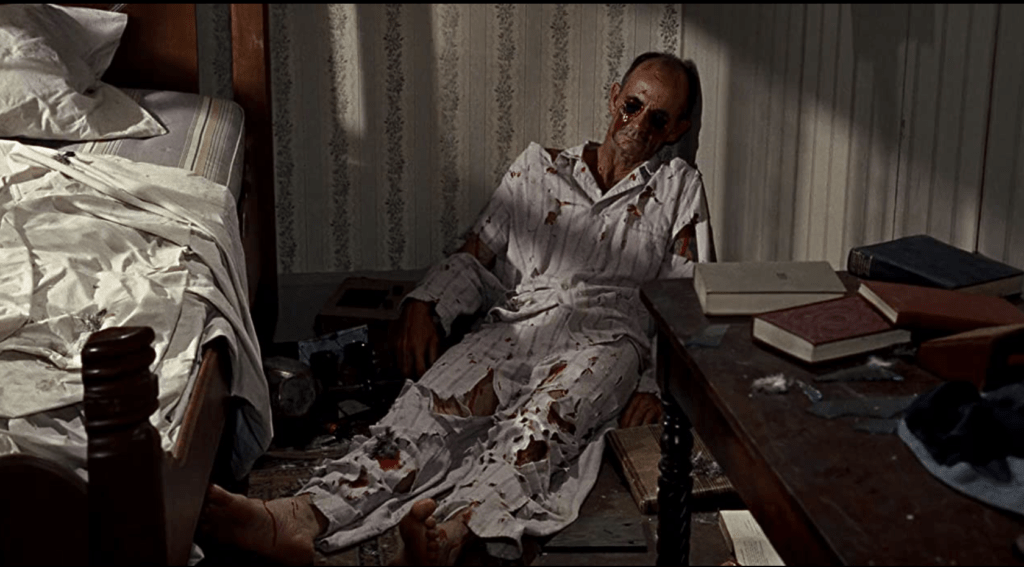
The real terror comes from the attack sequences.
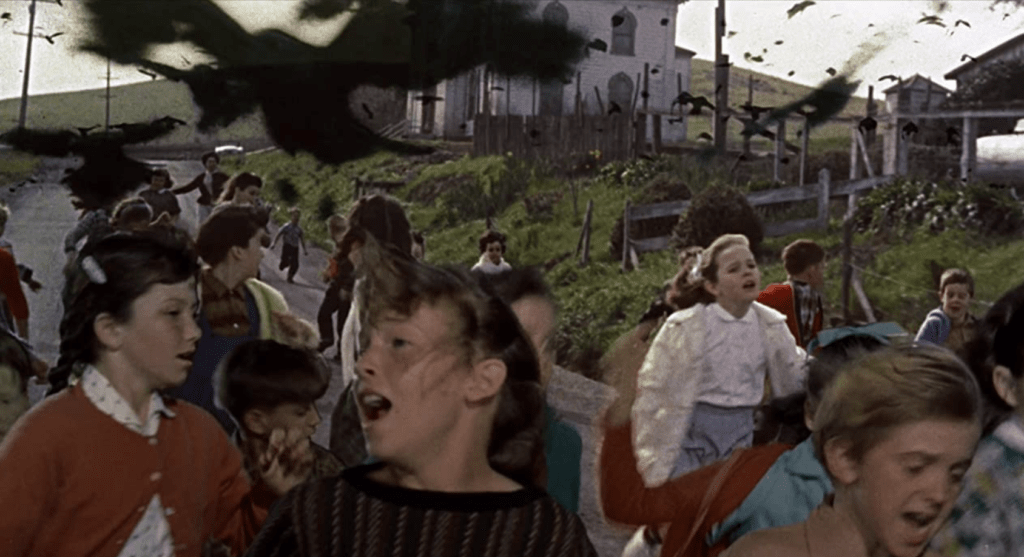
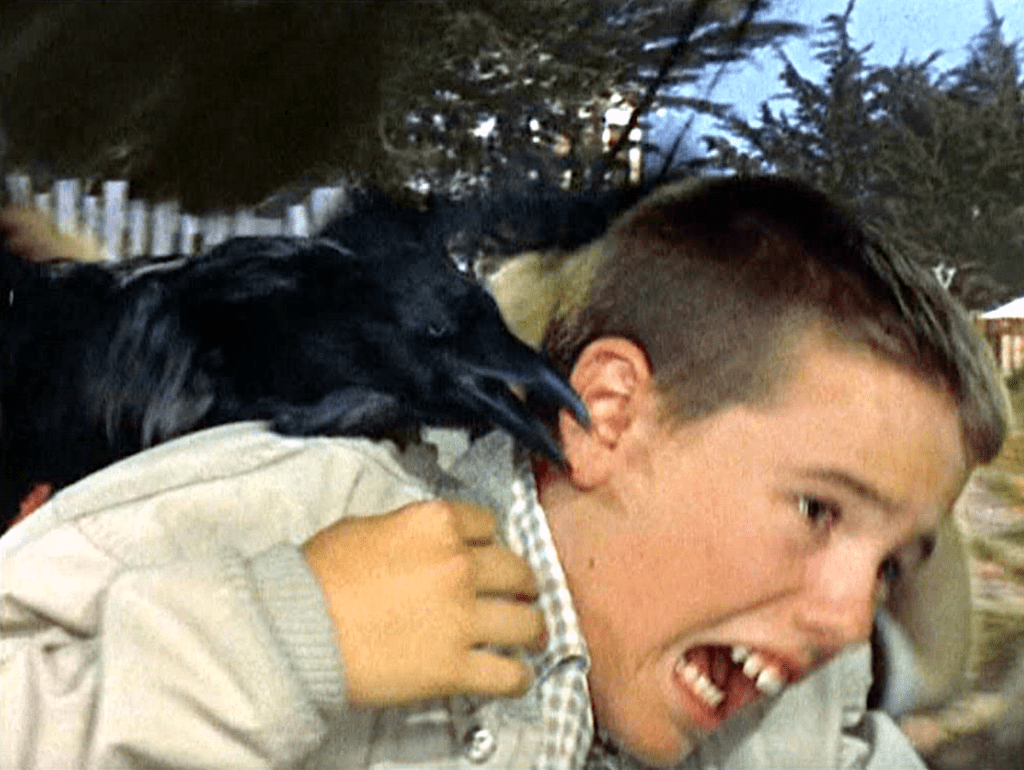
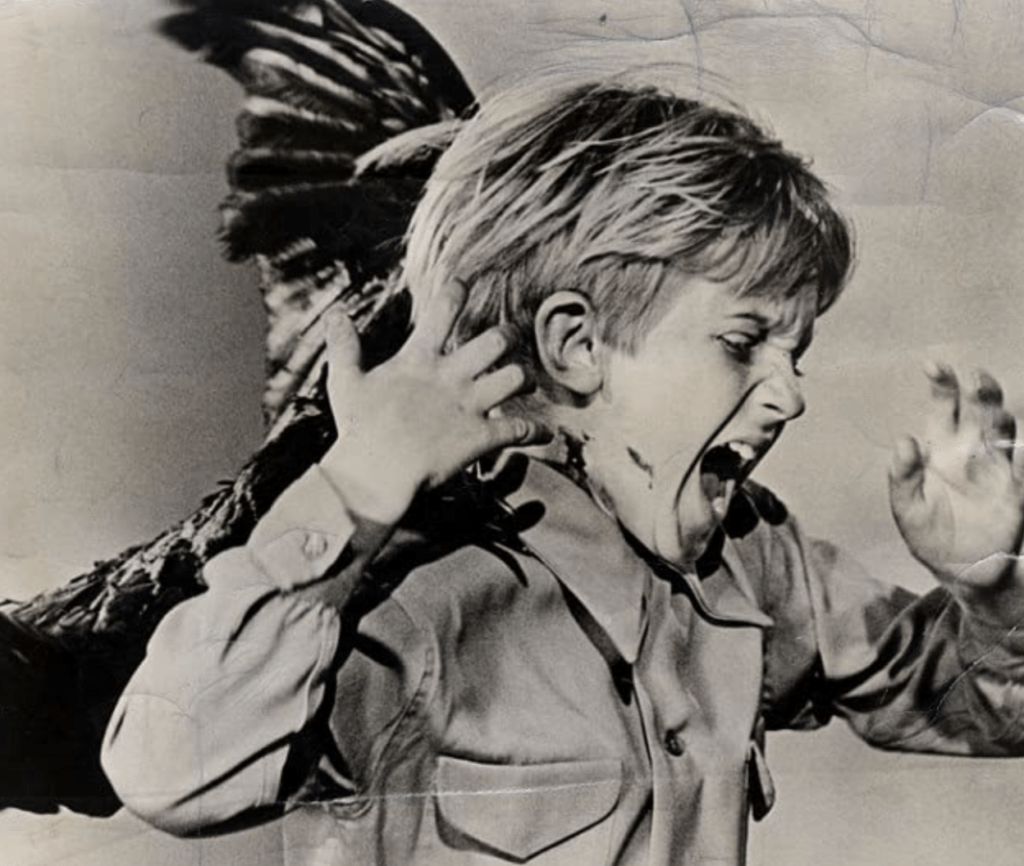
The use of masses of live birds, enhanced by visual effects had never been done before. Throughout the location shooting, members of the crew were regularly pecked and scratched. Tetanus injections were instituted for all, including the cast before the scene in which a swarm of birds burst from the fireplace and attacked them.
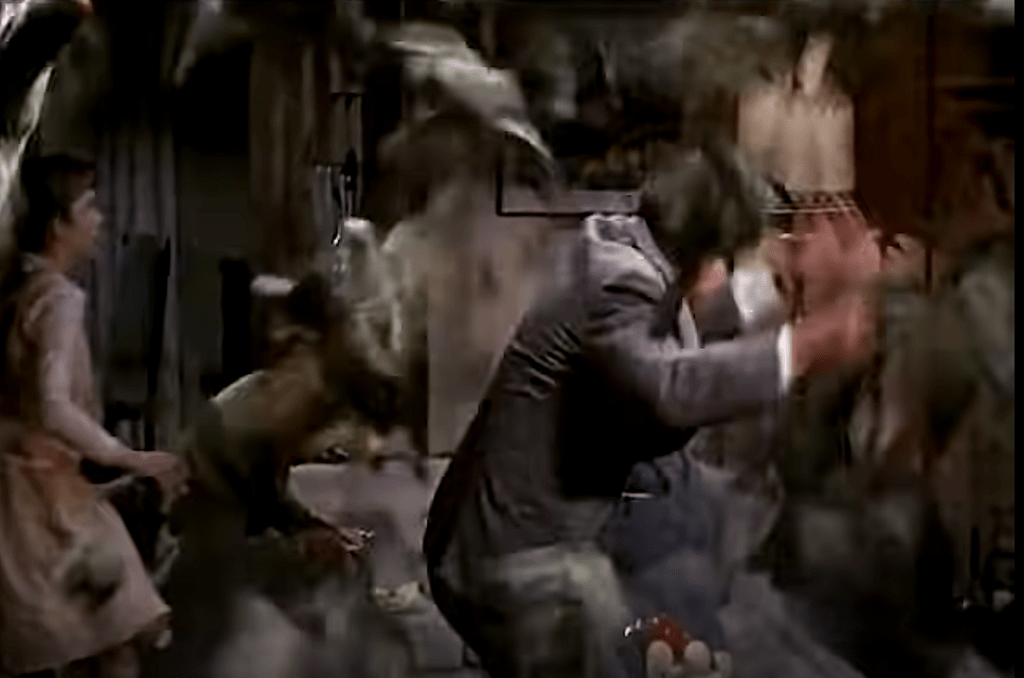
Rod Taylor, Tippi Hedren, 9 year old Veronica Cartwright, and Jessica Tandy, along with camera crew and bird wranglers protected by thick rubber gloves, would all be trapped in a small set surrounded by netting to prevent the birds’ escape. In front of the crew Hitchcock sought to break the tension with his own style of ribald humor. He addressed venerable stage actress Jessica Tandy, the wife of Hitch’s old friend Hume Cronin, who were regular visitors at the Hitchcock home.
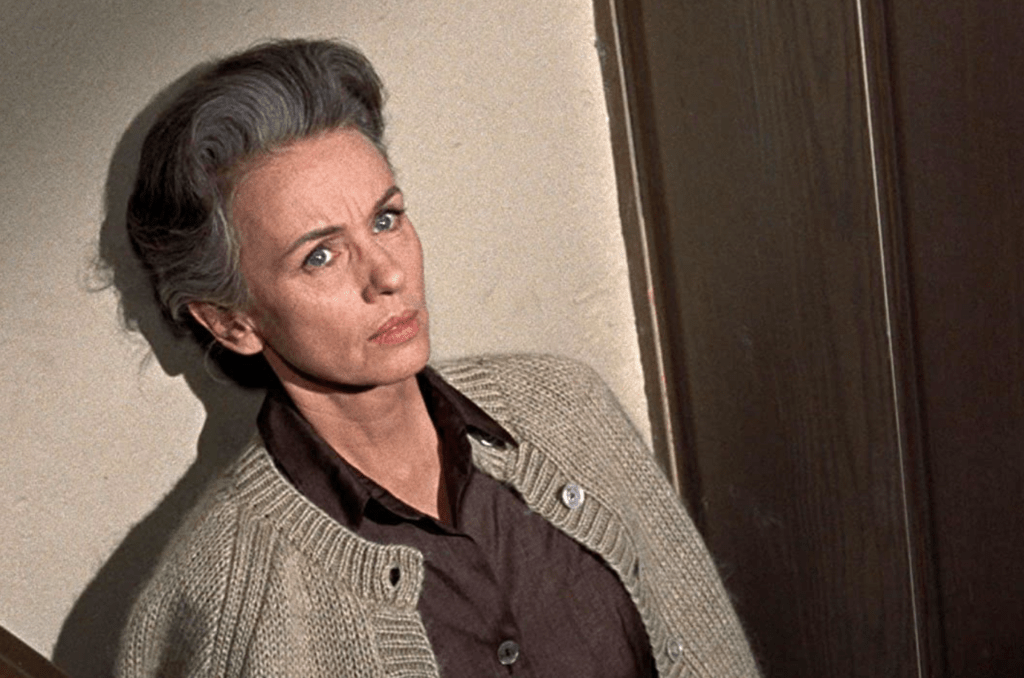
“ If one of these gets up your skirt, grab it! Because a bird in the hand…”
It took a moment to sink in, then they all laughed. Hitchcock sometimes whispered risque quips just before a take, to get a reaction from an actor that might stimulate a shift in mood or delivery. Hitch enjoyed being a sly provocateur. He dared to mock the commercials that played on his TV show. Sponsors complained to the network, but were quieted by the size of the ratings and their increase in sales.
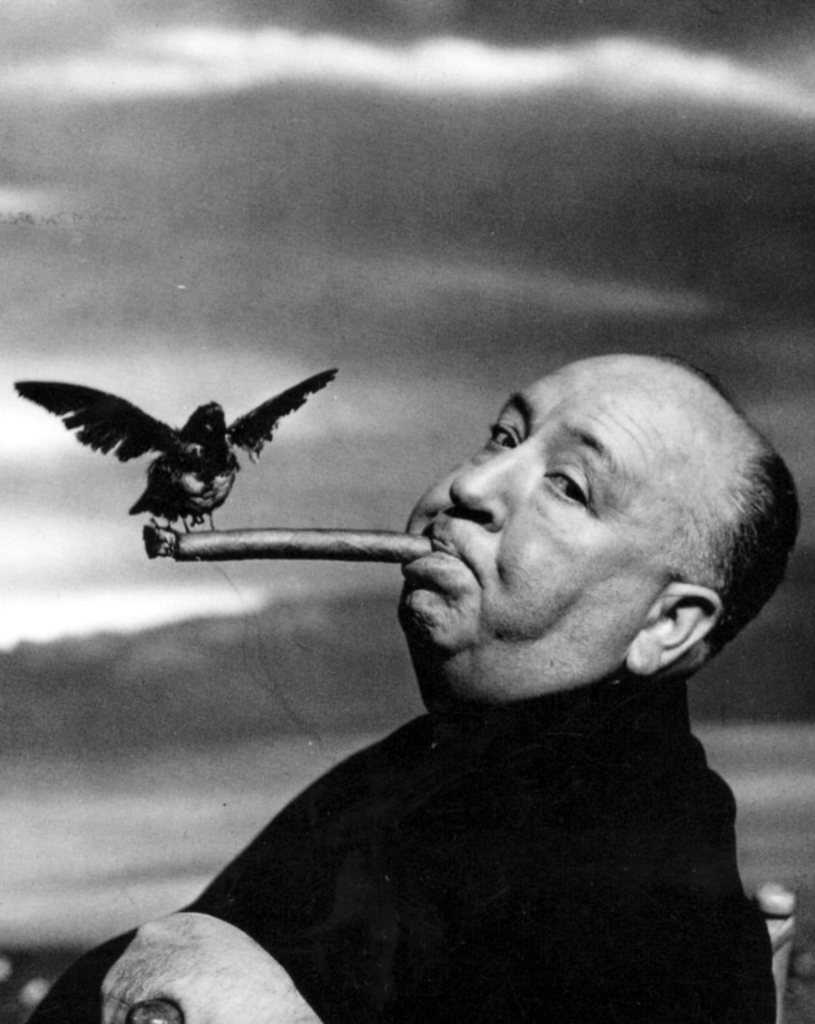
It tickled Alfred Hitchcock, a master film maker, to be a defender of free speech, and a covert censorship saboteur, as John Billheimer puts it: “using misdirection, misinformation, hedged promises, and throwaway scenes to protect his visual creations. Often, he deliberately inserted outrageous dialogue or outlandish images in rough cuts as bait so they could be grudgingly surrendered in return for somewhat less outlandish images that he wanted to protect…We know what the censors kept out of Hitchcock’s films, but we’ll never know what an unfettered Hitchcock might have accomplished.”
Hitchcock is a fascinating universe to explore. Please read read the books on him from which I have quoted. They will enrich your next viewing of his work.
If you liked this article, check out my book Adventures in the B Movie Trade, available on barnesandnoble.com.
